IMCImpact
Student Journal of the Department of Integrated Marketing communications

Student Journal of the Department of Integrated Marketing communications
Editor
Brian G. Smith, Ph.D.
Editorial Board
Itzhak Mashiah, Ph.D.
Staci B. Smith, Ph.D.
Britt Moon, Ph.D.
Patricia Overstreet-Miller, MBA
Faculty Advisors
Itzhak Mashiah, Ph.D.
Staci B. Smith, Ph.D.
Production Team
MacKenzie Ross
Pallavi Dhama
Nicole Merlo
Letter from the Chair
Section 1: IMC in Sports
The Cost Of Glory: Examining the Ethics of College Athlete Pay – Lauretta Piesko
Pressure & Perception: The Mental and Media Pressures Faced by High-Level Athletes – Ashley Murray
Game Time: The NFL Effect – Emma Price
Section 2: IMC for Fashion and Beauty
The Impact of Social Media on Consumerism: The Benefits of Thrifting – Sherry Lin
Truth or Trend? Understanding Sustainable Fashion and Making Better Choices – Sofia Sanchez
Fashion Trends and Temptations: Social Media, Second Hand, and Fast Fashion – Tyler Leonard
Fashion for Everyone: Enhancing Inclusivity and Diversity for Petite Individuals in the Fashion Industry – C. Avery LaRosa
Branding Timeless Fashion: A Dive Into a Business and Consumer Perspective – Rebecca Case
The Art of Comedy in Graphic Design: Crafting Humor That Connects – Markel Williams
Gen-Z: A Generation of Romantics? – Addy Ezell
Selling More Than Bread: The Science of Food Packaging – Caroline Cavett
The Influence of Incentives: How Giveaways and Brand Trips Shape Brand and Influencer Authenticity – Ryan Roylance
From Likes to Purchases: How Social Media Shapes Trends, Brands, and Consumer Choices – Ainsley Counce
Behind the Spotlight: Balancing Celebrity Privacy and Profits in the Digital Age – Kylie Britton
Cancel Culture: The Age of Accountability – Anna Higginbotham
Bite-Sized Impact: How Social Media is Transforming Recipe Engagement – Ella Moraes
The Impact of Social Media on Product Overconsumption – Emily Eldred
Social Media & Ethics: The Legal Challenges of Influencer Marketing / Navigating Compliance and Liability in the Age of Social Media – Abby Mathews
The Impact of Social Media on Mental Health – Linzi Burks
From Closet to Brain: The Fascinating Science of Dopamine Dressing – Rachel Esposito
Embracing Self-Image: The Impact of Beauty Standards and Body Image on Mental Health – Marissa Cooper
When I arrived at Ole Miss in July and began my time as the Department Chair of Integrated Marketing Communications (IMC), I inherited the largest major on campus, and it’s growing. Since my arrival, I have been meeting with students and asking them one question: Why IMC?
You see, there are very few programs in the country with the title Integrated Marketing Communications. In fact, I’d wager we’re one of the largest in the country, if not the largest (and this was one of the reasons I came to Ole Miss). Most universities use names like Strategic Communication, Public Relations and Advertising, or Communications. IMC, on the other hand, has a particular meaning that transcends other titles used—and it lies in the word “integrated.”

I have met with students in classes and had conversations around campus about what students understand integrated to mean. The most common answer I’ve heard is that all communications look and sound the same. That “one voice” concept is certainly a large part of what IMC is. There’s also more to it. IMC is connection. It’s a spirit that reverberates throughout an organization where everyone is on the same page (at least in communications), and that one-ness leads to a synergy in promotion because of the collaboration that echoes through the cubicles and offices.
But back to my original question: Why IMC? I think it’s because it allows students to study what they want, while gaining experience to pursue a rewarding and successful career in marketing communications. This, the first issue of IMC Impact, is a testament to the range of student interests. In this issue, you’ll find articles on social media influencers, fashion and beauty, branding, sports marketing, and health and wellness. Each article features research-driven insight on what makes IMC successful.
Finally, a little bit about IMC Impact – as its name suggests, this student journal features insights on how to ensure impact in marketing communications. Students conducted research in a variety of areas, analyzed the results, and provided their own take on what results mean for conducting IMC with impact.
Our students are an inquisitive and driven group of We hope you enjoy this, the first issue of IMC Impact, for all the hard work the students, faculty, and staff put into creating such a relevant and insight-rich issue. Like effective IMC, it is the product of strategic collaboration. My special thanks to the editorial board Patricia OverstreetMiler, Itzhak Mashiah, Britt Moon, and Staci Smith, as well as the faculty who advised students in producing these articles.
Brian G. Smith, Ph.D. Department Chair, Integrated Marketing Communications
BY: LAURETTA PIESKO
“College sports used to be about fun and loyalty, but now it feels more like a business ” This quote from a college athlete sums up the transformation of collegiate athletics as debates over compensation redefine its culture. For decades, the NCAA has upheld amateurism, emphasizing education over earnings. Yet, with billiondollar revenues, athletes are questioning their share of the pie (Caulfield, Lee, & Baird, 2023).
As someone who has always had a deep passion for athletics, I have seen firsthand how sports inspire unity, dedication, and personal growth. This personal connection motivates my interest in examining the ethical and practical aspects of compensating college athletes. I aim to explore this issue in a way that advocates for solutions to preserve the transformative power of sports while addressing modern challenges.
This article investigates the implications of paying college athletes, focusing on ethics, fairness, academics, and athlete culture.
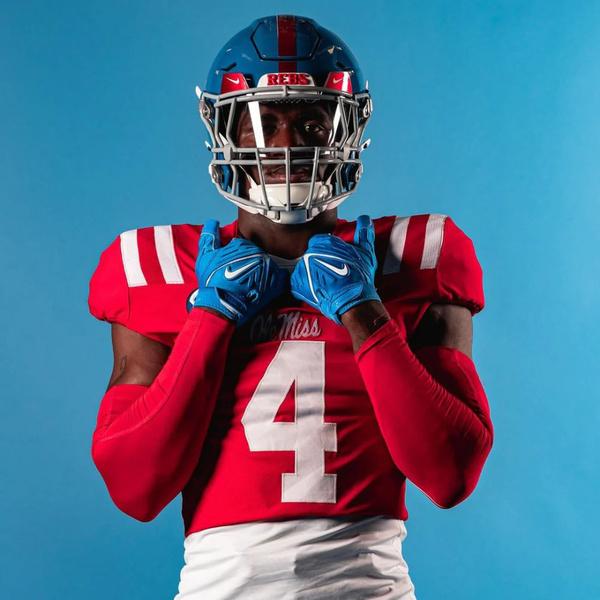
I chose to write about college athlete pay and its ethical implications because it com sports, business, and societal values. The rise of NIL (Name, Image, Likeness) deals and court rulings such as NCAA v. Alston (2021) challenge traditional notions of amateurism. These challenges highlight critical tensions between preserving collegiate traditions and embracing new economic realities (Sellers, 2023)
This topic is especially significant to me as someone who has always admired the perseverance and dedication of studentathletes. These individuals juggle demanding academic schedules with grueling athletic commitments, often serving as role models for their communities. However, the lack of financial compensation creates significant disparities, fueling a debate that impacts not only the athletes but also the broader collegiate system.
Through academic research and surveys, I explored various aspects of this topic, uncovering findings that explain it’s complexity. Paying college athletes has become a major ethical issue Scholars like Caulfield, Lee, & Baird, (2023) highlight how compensation disrupts traditional values associated with amateurism, yet guidelines for equitable pay remain undefined Meanwhile, Sellers (2023) reveals that NIL deals may risk prioritizing financial gains over academics, sparking potential misconduct and distractions Haile (2023) adds another layer by exposing the gender inequities that persist within college sports, as male-dominated sports like football and basketball dominate funding, further marginalizing women ’ s programs.
The evolving landscape of collegiate athletics presents challenges and opportunities. For example, March Madness generated $1.1 billion in 2019, yet women ’ s sports received only 48% of the funding allocated to men ’ s sports (Haile, 2023). Title IX has improved access to sports for women, but it does not mandate equal pay, leaving significant disparities unresolved. As Caulfield, Lee, & Baird, (2023) note, “The challenge for leaders is that previously unaccepted behaviors are now deemed ethical; clear guidelines have yet to be established for implementing new practices.” These findings emphasize the need for systemic reforms that prioritize fairness, transparency, and sustainability.
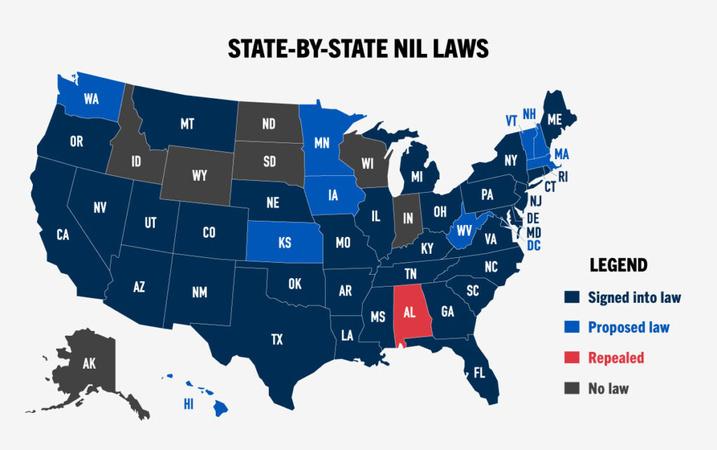
My focus group discussions revealed three major themes that highlight the complexities of compensating college athletes: the impact on team dynamics, fairness across sports, and financial responsibility Participants shared diverse perspectives, highlighting both the potential benefits and challenges of introducing compensation systems
One participant stated, “It motivates the player to work harder, but it could also lead to stress if they feel they won’t get paid if they play badly.” This quote points out the dual-sided nature of NIL deals. While performance-based incentives may encourage athletes to strive for excellence, they can also create unnecessary pressure, potentially harming mental health and team dynamics The fear of underperforming may shift athletes’ focus from collective success to individual gain, undermining the collaborative spirit traditionally associated with college sports (Caulfield, Lee, & Baird, 2023).
Another concern raised was the potential for divisions within teams. One participant commented, “If some athletes are paid and others aren’t, it could create resentment among teammates ” Pay disparities could negatively affect team morale, leading to strained relationships and a lack of unity.
Another respondent noted, “It makes sense for more popular sports like football and basketball to get paid more because they bring in a bigger audience, but it’s not fair to smaller programs ” This statement reflects the tension between revenue-based compensation and equitable treatment. Highrevenue sports undeniably contribute the most financially, but prioritizing them risks marginalizing smaller programs and nonrevenue-generating sports (Sellers, 2023). This imbalance raises critical questions about the values that drive collegiate athletics and whether equity should outweigh profitability.
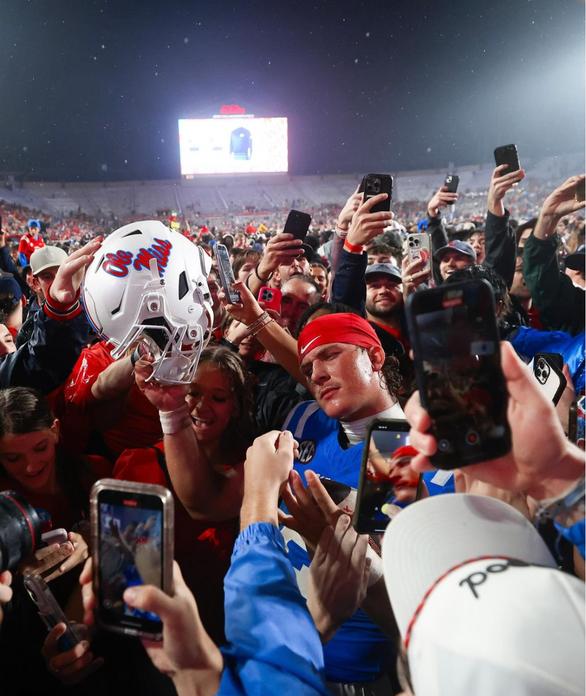
Financial responsibility emerged as another central concern. A participant warned, “They’re young and might not be responsible with the money, like buying cars they don’t need.” This highlights the challenges of financial management among studentathletes Receiving large sums of money at a young age can lead to impulsive decisions and financial mismanagement, particularly for those without proper training or support (Haile, 2023).
Participants also emphasized the need for financial literacy programs Providing young athletes with the tools to manage their earnings responsibly would reduce the risk of poor decisions and ensure they are better prepared for long-term financial security.
Together, these themes demonstrate the need for thoughtful structures that balance team dynamics, ensure fairness across sports and support athletes’ financial literacy. They also reveal a pressing need to protect the collaborative and inclusive culture that defines collegiate athletics.
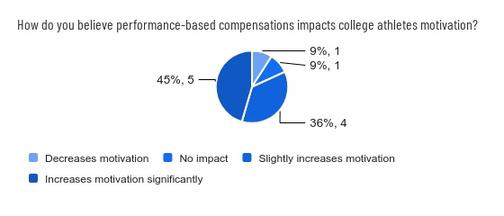
My survey provided quantitative insights into public opinion on athlete compensation. A significant majority of respondents (73%) supported compensating athletes, showing widespread approval for change. However, concerns about fairness and integrity halted this enthusiasm While 45% of respondents believed that performance-based compensation significantly increases motivation, 64% felt it harms the integrity of college sports

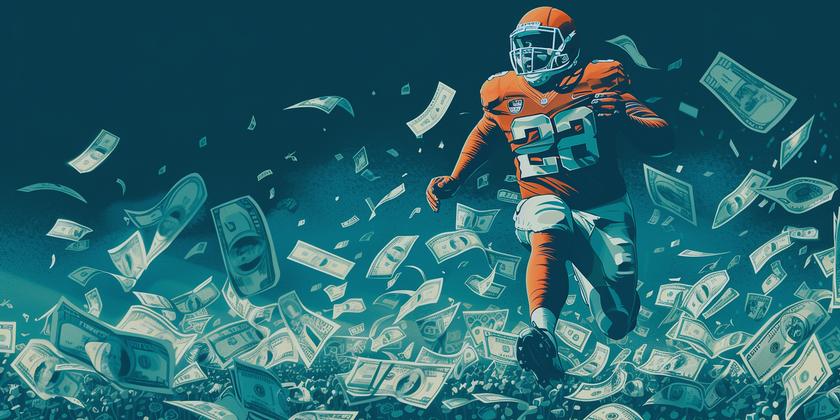

. .
Respondents also showed a strong preference for scholarships and bonuses over direct salaries, aligning with the sentiment that education should remain a top priority. Scholarships, respondents noted, ensure athletes maintain a strong connection to their academic goals, offering financial support without undermining their role as students first (Sellers, 2023).
Financial responsibility was another prominent issue, with 82% emphasizing the importance of financial education programs for athletes. Many survey participants echoed the sentiments expressed in focus groups, emphasizing that young athletes must be equipped to manage their newfound financial responsibilities (Caulfield, Lee, & Baird, 2023).
Gender equity was a critical concern in survey responses Participants expressed worries that revenue-based models might reinforce existing disparities, leaving women’s sports and non-revenue-generating sports further marginalized One respondent explained, “The focus on paying athletes from high-grossing sports risks ignoring the hard work of athletes in smaller programs.” This sentiment shares the importance of creating systems that are inclusive and equitable, acknowledging the contributions of all athletes regardless of their sport’s profitability.
Respondents also highlighted the need for clear guidelines to prevent abuse One participant stated, “Without standardized rules, compensation could become a free-forall, with some athletes benefiting while others are left behind ” This insight reflects a broader concern about the potential for inequities and chaos if pay structures are not carefully regulated
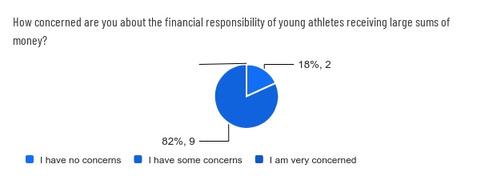

The debate over college athlete pay is a manifestation of broader societal tensions, including fairness, equity, and well-being issues While compensation acknowledges the significant contributions of student-athletes, it also risks undermining the educational and cultural values of collegiate sports Addressing these challenges requires a holistic approach that considers the issue's economic, ethical, and personal aspects
Policymakers, universities, and the NCAA must collaborate to develop transparent pay structures that ensure fairness and preserve the diversity of collegiate sports. Institutions should prioritize policies that balance compensation with the values that have traditionally defined college sports, such as teamwork, academic achievement, and community engagement.
Furthermore, colleges must implement firm support systems to protect athletes’ mental and financial well-being This includes providing financial literacy programs, mental health resources, and academic support tailored to the unique challenges studentathletes face. By addressing these issues, college athletics can evolve to meet modern demands while preserving its core values
Finally, any reforms must reflect the input of athletes, coaches, and stakeholders from across the spectrum of college sports. Creating inclusive compensation systems that uplift all athletes, not just those in highprofile sports, will ensure that college athletics remains a force for unity, growth, and opportunity. A better tomorrow for college sports requires collaboration, fairness, and a steadfast commitment to the well-being of student-athletes.
Caulfield, J L , Lee, F K , & Baird, C A (2023) Navigating the ethically complex and controversial world of college athletics: A humanistic leadership approach to student-athlete well-being. Journal of Business Ethics, 183(2), 603-617. https://doi.org/10.1007/s10551-02105027-4
Dart, J. [@jaxsondart]. (2024, November). Posted up with my DAWG, Scooby-Doo type... Instagram. https://www.instagram.com/p/DCLJ7WANEAi/
Haile, A J (2023) Equity implications of paying college athletes: A Title IX analysis Boston College Law Review, 64(7), 1449-1506.
National Referral Network (2024, February 25) Athlete running through money [Image] Medium. https://miro.medium.com/v2/resize:fit:1400/1*44Eqy2CW5m5zrS46pHUudA.png
NCSA Sports. (2024, June). State-by-state NIL laws [Image]. NCSA Sports. https://www ncsasports org/wp-content/uploads/2024/06/state-by-state-nil-laws-1024x642.jpg
Ole Miss Athletics [@olemissathletics]. (2024, October). So tough. Instagram. https://www instagram com/p/DBPCrIoS8kk/? utm source=ig web copy link&igsh=MzRlODBiNWFlZA==
Sellers, M. P. (2023). Name, Image, and Likeness (NILs): What impact will NILs have on students in the classroom? Journal of Higher Education Theory and Practice, 23(2), 1-7.
By: Ashley Murray
Growing up as a competitive athlete the pressure for excellence was always demanding. The year-round training became all-consuming, leaving little room for anything besides practice. This aggressive training and overwhelming pressure to be the best has always interested me in how high-level athletes deal with this kind of responsibility of being looked up to as a “role model ” The challenges they face between trying to execute their job and having a private life while the media eye is peering down their back
The mental health impact on athletes dealing with constant judgment over their personal lives and actions can be detrimental, especially during stressful times, big game moments, or personal crises. Every move you make is criticized and judged when you're in the spotlight. That kind of pressure can be debilitating physically and mentally. Being put on a pedestal to act a certain way with the youth watching their every move, this job can become very overwhelming.
Grant Holloway, pictured on the right, is a gold medalist Olympian athlete who graduated from the University of Florida. Grant prides himself on being 100% authentic, so he does not take social media super seriously and manages his accounts on his own. I asked Grant if he has had any negative interactions with the press, and his response was, “Pretty much every day for me, I will treat you with respect if you treat me with respect, or else I’ll take you down with my platform.”
After the 2021 Olympics, Grant did not perform the way he wanted to, leaving him depressed with the media spotlight still on him. Grant stated, “After working towards something your whole life and not preforming how you wanted to it sucks. I had to overcome the let down, this has helped me grow as a person and adds fuel to the fire.”
“Good media is all about relationships. If I ask you how your day is, I want you to ask me the same. I want to be treated as Grant, not always Grant Holloway." Grant has been in the public eye for a decade, under the pressure to be a perfect role model. After conducting a focus group on this issue, everyone agreed, "There's this big expectation that athletes need to be a certain way because they're in the public eye, but they're human too" (audio). This statement reflects that while athletes may be held to high standards because of their fame, they still experience the same struggles, emotions, and need for personal space that anyone else does. They are executing a job while they navigate the line between public expectations and private life.
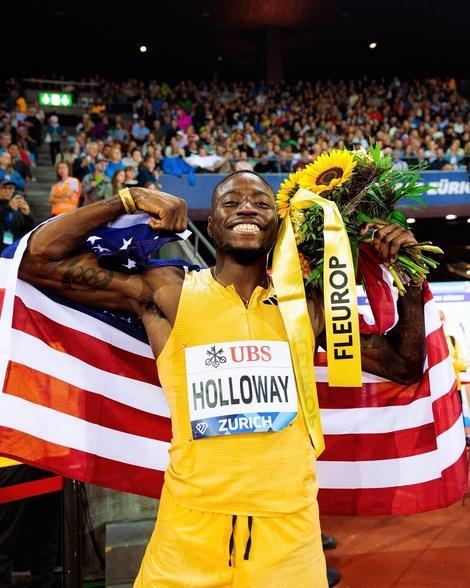
“Sports teams want media when they can use us for what they need When they can use us, the media, then it’s a positive relationship for them, but they hate the media actually doing deep, investigative reporting on how they operate” (O’Boyle & Gallagher, 2023 , p 676 ) This tension exists between journalists and players when journalists exploit players for their professional advantage Sports entities hire public relations teams to control the story and maintain a favorable public image These dynamics show the challenges faced by sports journalists striving to keep player access with the integrity of their reporting
How do you think media coverage impacts the image of atheltes?

One survey question shown in the graph above, “How do you think media coverage impacts the image of athletes?” The majority said that media coverage makes them feel more connected to the athletes or teams. The media spotlight can humanize athletes, making their stories more relatable and engaging for fans. By displaying their achievements and struggles, the right media coverage plays a demanding role in building loyalty between sports figures and their audiences.
Reputation in sports is a critical balance between over and under-sharing, with the long-lasting impact of scandals. From the focus group, one participant stated, "When the Astros cheated, it still impacts their reputation years later...people call them cheaters even now" (audio). The Astros were caught using a video camera to see the opposing catcher's signals to the pitcher.
The Astros team decoded the signals and sent them to the batter, letting them know what pitch to expect. When your reputation is damaged, it is hard to overcome this, especially if it's through the whole organization.
A common theme in the focus group was, "Once a crisis happens, it sticks with people for a long time... it's hard to completely clear that up" (audio). This scandal has affected the organization's facing challenges in rebuilding trust and reputation. Repairing the public's perception after a controversy can leave a lifetime of lasting skepticism. Poorly handled crises can leave a reputation fractured, and fixing it takes extensive time and effort, proving that public perception always remains. The Astros team decoded the signals and sent them to the batter, letting them know what pitch to expect. When your reputation is damaged, it is hard to overcome this, especially if it's through the whole organization.
Reputation is critical in shaping professional standards and public perception, particularly in sports journalism and media. As Frandsen (2024) notes, the emphasis on "significance and 'reputation'" has helped elevate Danish sports journalism to align with higher professional norms and counteract its historically low status (p. 207).

Reputation influences the teams' current standing and long -term credibility. Once a crisis occurs, it becomes embedded in the public’s memory, changing how individuals or organizations are perceived. This lasting effect was shown in the Houston Astros' cheating scandal, in which people still associate their brand with the incident. This shows the difficulty of rebuilding trust after a high -profile controversy.
Fan expectations significantly shape athletes' public behavior and identity, often creating pressure to conform to specific standards. One respondent noted, "The fan opinions shape athletes' behavior, especially if it impacts earnings or public image" (audio). They display how public perception can influence an athlete's choices on and off the field.
Additionally, athletes are expected to maintain perfection because they are in the public eye and put on a pedestal as role models for the youth. "There's this big expectation that athletes need to be a certain way because they're in the public eye, but they're human too" (audio). These athletes were hired to perform a job alongside the media. They did not ask to be put in the spotlight and have every move evaluated.
Do you think the public has unrealistic expectations of athletes?
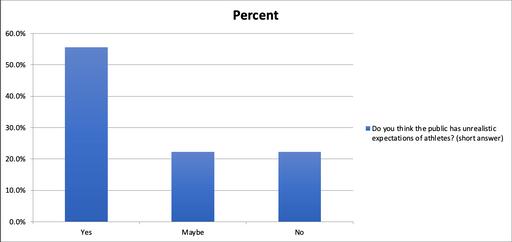
Qualtrics survey displaying 55% of people think the public has unrealistic expectations of athletes.
An example of fans influencing athlete behavior is Naomi Osaka's withdrawal from the 2021 French Open. Fans and the media expected her to participate in press conferences and keep up a strong public image. Osaka told the press that skipping confrences was because of mental health issues, and the intense pressure negatively impacted her wellbeing.
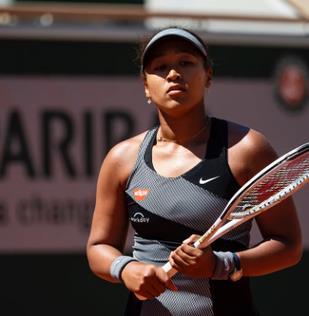
This decision led to mixed reactions: some fans criticized her for not fulfilling her professional responsibilities, while others applauded her for prioritizing her mental health. Osaka's actions showed athletes' pressure to conform to society's expectations while dealing with private mental healthrelated problems.
In The Role of Sports Media in Athlete Mental Health, Moritz stated, “Osaka’s decision came at a time when many athletes had been talking more openly about their own struggles with mental health. But what made Osaka’s story stand out is that it was the first time an athlete publicly and explicitly connected mental health and media obligations.”
Osaka has helped generate a movement about the pressures athletes face outside of the game. She has gone against traditional norms, having fans and journalists rethink their expectations, which has shown its impact on the players. By prioritizing her mental health, Osaka has advocated for herself and also shed light on the change needed to balance mental health with professional responsibilities in sports.
The challenges that high-level athletes face are fan expectations, media obligations, and their mental health. Athletes like Naomi Osaka and Grant Holloway have spoken out about the mental and emotional effects that media pressure and scrutiny have on them. They are speaking out to challenge traditional norms and advocating for change. Their experiences show the understanding that fans, media, and sports organizations need.
As fans in the sports media world, we must support causes that stand by plays by speaking out on mental health and supporting a healthier balance between professional media obligations and personal well -being. Athletes are human, too, and just trying to perform a job they were hired to do.
O’Boyle, N., & Gallagher, A. (2023). Sports organizations and their defensive mediatization strategies: The sports journalist’s perspective. Media, 4(2), 665 -678. https://doi.org/10.3390/journalmedia4020042
Hutchins, B., & Rowe, D. (2023). The evolution of sports journalism in the digital age: Insights from Fabrizio Romano. Media and Communication, 11(3), 43 -54. https://doi.org/10.17645/mac.8135
Brian Moritz (2022, May 17). The role of sports media in athlete mental health. Global Sport Matters. https://globalsportmatters.com/culture/2022/05/17/sportsmedia-role-athlete-mental-health/
By: Emma Price
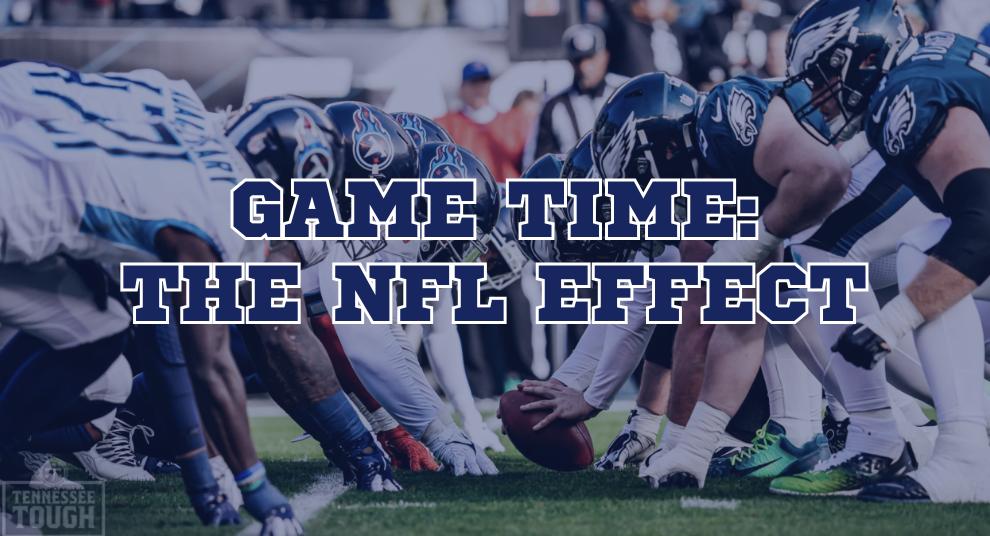
Brown, M. (2022). Game photos: Week 13 at Eagles [Photograph]. Tennessee Titans.
What could it be about the game of football that captivates the hearts of millions every Sunday? Marketing, public relations, and societal trends have come together to build the brand stories told by teams in the National Football League. I chose this subject to understand further how professional football teams use public relations and unique marketing tactics to stay culturally relevant. Through the use of focus group findings, background research, and survey results I will be able to thoroughly explore the monetary and cultural impact of media in the NFL.
This phase of background research is what would be referred to as “pre-game scouting” for a football team. Before I can dive into the meaningful role that sports play in people’s lives, it is important to understand the objective job of a PR professional in the world of athletics. People who work in public relations are responsible for shaping the image of athletes, teams, and cultural narratives. “Public relations professionals embrace
the complex sporting value chain and strategically manage communication...” (Serbanica & Constantinescu, 2016). Since the professional sports industry generates billions of dollars each year, effectively managing communication and protecting reputations is of utmost importance.
Sports PR specialists deal with a range of duties, such as maintaining athlete profiles and using digital media to interact with fans. “Sport public relations practitioners fill roles dealing with media relations, new media, Web management and design, print publication development, community relations, promotion, special event planning, integrated communication, and sport marketing” (Stoldt, Dittmore & Branvold, 2012). This source from Sports Public Relations offers a thorough examination of the many duties performed by PR specialists in the sports sector. It emphasizes event preparation, community outreach, and the blending of digital and traditional media.
In addition, this highlights how complex sports public relations is and how professionals must have a broad range of abilities to be successful in the current, ever-changing media environment. “Every sports team, whoever its owners are, is an independent entity interested in winning a group of fans, being a point of attraction for new players and developing a positive image, in order to advance its club both professionally and financially” (Galily & Tamir, 2012). Reading this may seem like a tall task, but that is the role of PR professionals. This scholarly source goes into detail on the commercial objectives of sports public relations, including image management and fan acquisition. This demonstrates how PR helps a team gain a competitive edge in luring talent and supporters by explicitly linking PR tactics to both financial and professional success. After scouting out the role of PR in athletics, it is clear that their job is the backbone of success for teams, athletes, and brands.
After pre-game scouting, it’s time for the game. Similar to the first half of a football game, a focus group involves strategy, flexibility, and observation. Whether the goal is to score points on the field or to collect useful insights in research, both require a
strong start, constant adjustment, and efficient time management. We were challenged with conducting our own focus group to gain insight into the opinions on marketing in athletics. The example we decided to focus on is the effects of Super Bowl advertising.
The Super Bowl as a Cultural Event:
One participant confirmed it as a crucial part of American culture by stating, "Football feels like a family event. No matter what, it’s always going to be big because it’s such a big part of American culture." Another participant described the Super Bowl experience as, “an all-day event. People wake up, go to a house, whatever, and just spend the day watching." The Super Bowl reaches viewers from all audiences, "I don’t really care about the game itself; I just watch the halftime show." People of all interests tune into the game simply because it is the social norm.
Memorable Brands:
Successful brands build identity and emotional connections through strategic campaigns. The brands that advertise during the Super Bowl are ones we know and love. The findings from the focus group show that the general opinion about Super Bowl advertisements is that the return on investment is high. Opinions on the significance of these advertisements were consistent throughout the focus group. As one participant stated, "Super Bowl night is the one night a year for marketing—brands put all their money into one huge successful campaign." Another agreed, "If you’re in the Super Bowl, that means you’re a reputable brand."
Super Bowl advertisements are frequently recalled for their ability to firmly establish brand identity amongst consumers. As confirmed by a participant, "I think the commercials remind me of brands, like Doritos or Taco Bell, even if I don’t immediately buy something." Overall, participants highlighted how these brands' distinctive features and imaginative storytelling constantly leave a lasting impression.
In my opinion, the most important and influential factor of advertising in sports, is the promotion of social inclusivity and helping the less fortunate. In recent years, athletes have taken stances on relevant social issues, bringing them to relevancy for sports fans
everywhere. In addition, advertisements have helped push these narratives in hope to promote equality in many ways. According to the participants, "Social issues, particularly with race and stuff, have become a huge part of NFL players taking a stance, and the commercials cater to that." Socially inclusive Super Bowl ads go beyond financial gain by promoting community, raising cultural knowledge, and tying the company to important social ideals. As said by a participant, "The NFL has become a platform for social issues, and that shows in their ads."
In addition to fighting racial injustice, the NFL helps to promote causes such as curing cancer, getting children into sports, and helping impoverished communities. One participant spoke on this, "The NFL does a great job adding brands and awareness groups like 'Crucial Catch' for cancer or the 'My Cleats, My Cause' campaign." Such advertisements serve to celebrate and validate athletes’ presence in the larger cultural discourse, which fosters goodwill, rather than merely promoting sales.
Like the second half of a football game, doing a survey calls for perseverance, flexibility, and concentration. Achieving significant results is the ultimate goal, whether that be winning on the field or producing useful data for decision-making. The value that sports hold in our society is truly unlike anything else. Americans love their sports and they particularly love their football. The influence that is held by athletes is uncanny to any other public figure. From children to grown adults, athletes are looked to as role models.
The role of PR professionals in professional football is to maintain that reputation for their athletes and the team brands as a whole. For this portion of the project, we were tasked with developing and distributing our own survey through Qualtrics. I crafted my own questions, used the software to create the survey, then sent it out to my peers to get honest answers. The most insightful questions that helped me with this project were the ones that required a short answer response. These answers gave a broad variety of perspectives on the effect athletes have on our society. For example, Question #14 said,
“PR professionals are responsible for when working with professional football players.” Another helpful question for my research was Question #10, “How much do you pay attention to statements made by athletes on social media?” Here are three charts:
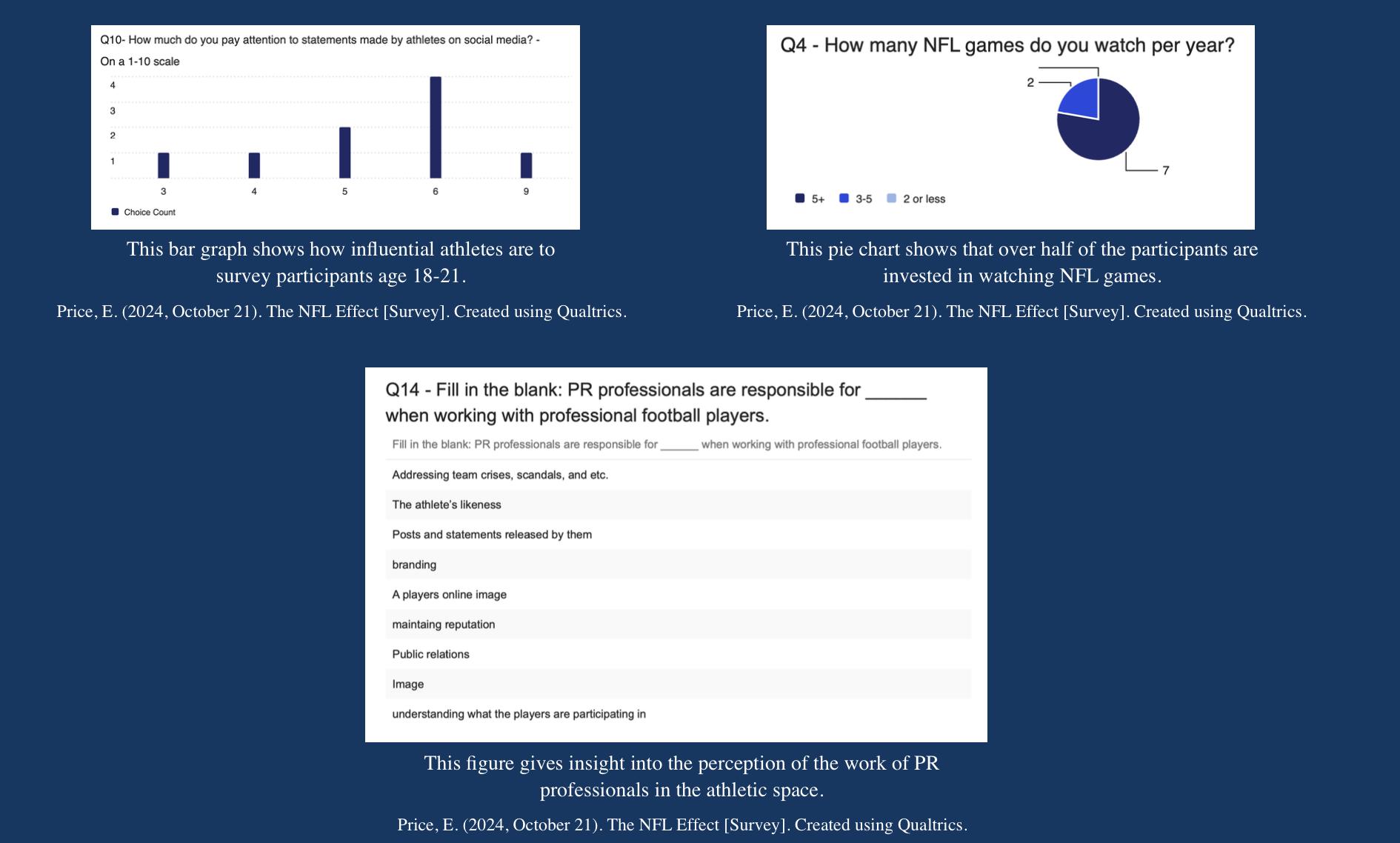
Conclusion:
The game is over It is time to give the post-game speeches. In our case, let's tie up all the loose ends. The monetary value that all of these promotion strategies have is undeniable. That aspect is easily seen by the numbers. The more important aspect, which has made a personal impact on myself, is the effects that professional football has had in a more special way. I have witnessed communities bond over teams’ success and failure. I have seen underprivileged areas benefit from the generosity of athletes. I have worked directly with these organizations that connect NFL affiliates with people in need, and what I can say from that: sports are powerful. When taken as a whole, these components
constructive social change that goes well beyond just ROI of marketing endeavors.
demonstrate how professional sports are a force for connection, opportunity, and constructive social change that goes well beyond just ROI of marketing endeavors.
Throughout this article we have discussed how public relations and marketing intersect to promote teams, individual athletes, and brands. We have seen the influence that football has on our culture and how important it is to many Americans. I challenge you to get involved with a sports organization in your area. Whether it’s a multi-million dollar NFL team or a local youth club. If athletes that we look up to on the Super Bowl screen can convince us to buy a bag of Doritos, imagine what a personal relationship could inspire people to do.
Throughout this article we have discussed how public relations and marketing intersect to promote teams, individual athletes, and brands. We have seen the influence that football has on our culture and how important it is to many Americans. I challenge you to get involved with a sports organization in your area. Whether it’s a multi-million dollar NFL team or a local youth club. If athletes that we look up to on the Super Bowl screen can convince us to buy a bag of Doritos, imagine what a personal relationship could inspire people to do.
Word Count: 1491
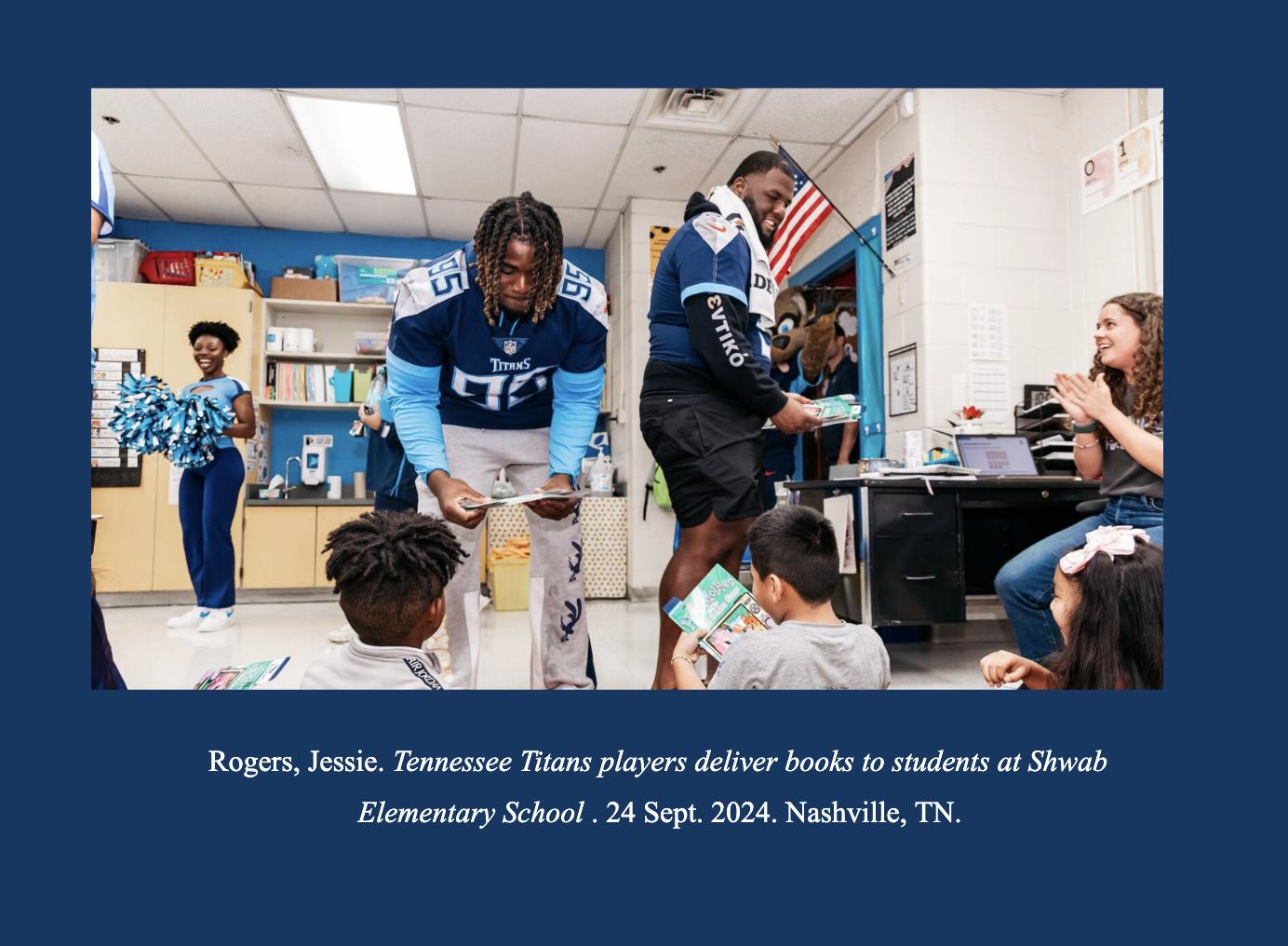
References:
Word Count: 1491
Galily, Y., & Tamir, I. (2012). The organization and business of sport: A sociological perspective. International Journal of Sport Management and Marketing, 12(1/2), 25–36.
References:
Price, E. (2024, October 21). The NFL Effect [Survey]. Created using Qualtrics.
Galily, Y., & Tamir, I. (2012). The organization and business of sport: A sociological perspective. International Journal of Sport Management and Marketing, 12(1/2), 25–36.
Serbanica, D., & Constantinescu, M. (2016). Public relations in sports: An overview and research agenda. Management & Marketing. Challenges for the Knowledge Society, 11(1), 155–179.
Stoldt, G. C., Dittmore, S. W., & Branvold, S. E. (2012). Sport public relations: Managing organizational communication. Human Kinetics.
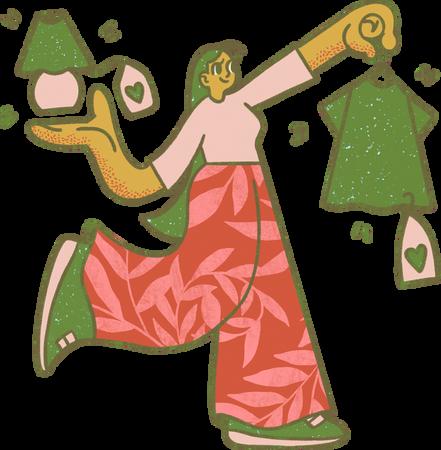
By: Sherry Lin
Do you frequently experience the pressure to keep up with the latest trends, only to feel overwhelmed by the cycle of overconsumption?
Recognizing the harmful effects of fast fashion and realizing that shopping for secondhand items can fulfill your desire to stay trendy while also benefiting the environment.
By choosing to shop secondhand, you can reduce the demand for new clothing production, which in turn helps decrease the environmental impact of the fashion industry Additionally, emphasizing sustainable fashion practices can lead to a more conscious and responsible approach to personal style

The fashion industry causes an alarming amount of harmful environmental impacts each year “The fashion industry is expected to emit 2791 million tons of CO2, consume 118 billion cubic meters of water and contribute to 148 million tons of textile waste by the year 2030” (Rausch et al., 2021, pg 1) This academic journal shows that a numerous amount of people recognize the issues of overconsumption and ethical concerns, but only a handful of those people actually allow these factors to influence their purchasing decisions. Many individual’s consumer behavior is often influenced due to their social comparison through social media platforms.
“The research also offers new perspectives on the effects of social comparison on purchase decisions, showing that comparison on social media platforms leads to pressures to conform and emulate others’ lifestyles ”(Heikkila, A , 2024, pg.2) This article reveals the pressure to confirma and mirror others lifestyles through their purchasing choices, which often leads to making unnecessary purchases.
Not only does thrifting significantly aid in slowing down the progression of the fast fashion industry's negative impacts on the environment, but it also allows consumers to grow a stronger connection with the items. “Through thrifting, online or in person, participants felt a deeper connection to the articles of clothing, which then compels them to keep the clothing longer.” (Peters, R., 2023, May 1, pg 15) It is important to make a conscious purchasing decision on items you genuinely like and will have for a long time rather than trending items that will be in landfills in a few months
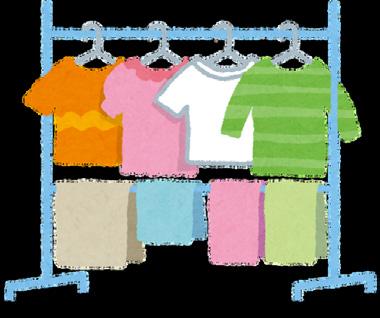

I conducted a focus group with 3 other members where 10 female/male participants ages18-24 years old agrees to participate Throughout my focus group there were three prominent themes that emerged The first theme centered around sustainable shopping and thrifting, reflecting a growing interest in purchasing second-hand items influenced by social media Participants discussed the sustainability benefits, affordability, and reduced waste associated with thrifting One 18-24-year-old participant expressed, "I’ve started buying second hand because I see people finding really good stuff, and it’s also cheaper " Another participant highlighted the environmental impact, stating, "The environmental impact is a big reason for thrifting. I don’t want to add to all the waste " (18-24 year old female/male) Participants also found joy in the unique items they discovered while thrifting, with one individual sharing, "It’s fun and rewarding to find something secondhand, and I feel better about not contributing to fast fashion." (18-24 year old female/male)
Another theme discovered in the focus group was the pressure to follow fashion trends: social media fosters a sense of urgency to buy trending items, leading to potential overconsumption and pressure to keep up with new styles. One participant expressed, "Seeing everyone wearing the same brand or item makes me feel like I should get it, too "(18-24 year old female/male)
Another participant shared, "Sometimes I buy things because they’re trendy, but then I regret it because I didn’t really need them."(1824 year old female/male) Despite efforts to resist trend-driven purchases, participants acknowledged the challenge of avoiding trend influence, with one stating, "I try not to let trends control my choices, but it’s hard when it’s all over social media." (18-24 year old female/male)

The last theme that was displayed in the focus group was the impact of social media on consumerism: discussion on how platforms like Instagram and TikTok influence shopping habits, often leading to impulsive or trendy purchases. One individual felt pressured to make purchases through ads. The 18-24 year old female/male stated, "I feel like on TikTok, you're just being fed ad after ad after ad they kind of push that on you." Another 18-24 year old individual stated “"Sometimes I’ll just buy something because I see it on social media, even though I don’t actually need it " Another participant stated, "Seeing certain products repeatedly on my feed makes me think, 'Maybe I should get it before it’s gone,' even if I wasn’t looking for it." (18-24 year old female/male)
Survey participants were asked a variety of questions about social media and how they believe it influences their purchase decisions as well as their thoughts of secondhand shopping.

Individuals were asked “Which of the aspects do you think are significant in discouraging people from shopping second hand?” with a majority of participants believing it is due to the cleanliness around thrifting at 82% and the second highest aspect being perceived quality concerns at 55%. These stigmas could be easily resolved by thrift stores washing clothing before putting them on shelves and also filtering out dinghy items as well. This shows me that a lot of these aspects that discourage consumers from shopping secondhand are fixable things that people are not willing to sacrifice to put an end to the environmental effects of fast fashion

Participants were asked “Which are you more likely to purse?(These are the same item) A majority of them picked either the item used from Goodwill for $10 or the item used from Plato’s for $20. Although a large amount of individuals still would rather purchase the item brand new from a name brand store for $50. Regardless that these items are all the same it seems it is still very important to some consumers that the items they purchase need to be new Some individuals trust consignment stores more than thrift stores even if they are selling the same item at 2x the price than Goodwill would be and both being pre-owned
Survey participants were asked “What do you think are the negative effects of social media on consumer behavior?” The individuals responded with a variety of answers. One individual states, “It causes people to be pressured to overspend on things they do not need and feel pressured to keep up with trends that won't affect anyone. ” A lot of individuals are aware of the negative effects social media has on consumerism but still will find themselves becoming victims of falling for microtrends

Social media influences consumer behavior, often driving individuals to make impulsive purchases to keep up with trends, contributing to overconsumption and environmental harm As a solution the benefits of thrifting as a sustainable alternative, reducing the demand for new clothing and minimizing the fashion industry's environmental impact. Despite growing interest in secondhand shopping, consumers often face challenges, such as concerns over cleanliness and quality, which discourage them from thrifting. Focus group and survey data reveal that while many recognize the negative effects of social media on spending, they still feel pressured to buy trendy items Promoting thrifting as a viable option requires addressing these misconceptions and resisting social media-driven consumerism
I urge you to take a step towards sustainability today. Go home and declutter your wardrobe, donate clothes you no longer need, and consider thrifting as a sustainable alternative to fast fashion. You are still able to find these trendy items at the thrift store or even secondhand online instead of contributing to the very environmentally damaging fast fashion industry. While also being able to support your local thrift stores and be able to purchase these items at a fraction of the cost rather than buying them for full price at the name brand stores
Melsom, T. W. (1970, January 1). Getting to know the conscious consumer: The fast fashion vs. second-hand consumers UiS Brage https://uis brage unit no/uis-xmlui/handle/11250/3022983 Peters, R (2023, May 1) The connection between gen Z and online fast fashion media. ScholarWorks@UARK https://scholarworks uark edu/cgi/viewcontent cgi?article=1003&context=artsuht Heikkila, A (2024) Negative consumption behavior in the era of social media. jyx.jyu fi https://jyx.jyu.fi/bitstream/handle/123456789/96355/URN:NBN:fi:jyu-202407085182.pdf?sequence=1&isAllowed=y
By Sofia Sanchez
Everywhere you look, fast fashion brands are claiming to be “sustainable” or “eco-friendly,” but how much of it can we actually trust? In a world where trends change at lightning speed and clothes are made to be disposable, it’s easy to get swept up in the buzzwords. Understanding what sustainability truly means and how to spot the difference between genuine efforts and empty promises can empower us to shop smarter and make a real impact.

By Sofia Sanchez
Everywhere you look, fast fashio “sustainable” or “eco-friendly,” but trust? In a world where trends c clothes are made to be disposable, buzzwords. Understanding what su how to spot the difference betwe promises can empower us to sh impact

The fashion industry’s push for sustainability is marked by a mix of progress and barriers as consumers seek to align their values with their shopping habits. Thrifting, while increasingly popular, faces limitations such as affordability, convenience, and skepticism about corporate transparency. Meanwhile, fast fashion’s rapid production cycles and social media-driven trends exacerbate overconsumption, creating a disconnect between ethical intentions and purchasing behaviors.
The fashion industry’s push for susta align their values with their shoppin affordability, convenience, and ske production cycles and social media-drive
Insights from Zara’s Join Life collection emphasize the critical role of transparency in bridging this gap By detailing sourcing, production methods, and sustainability measures, brands can empower consumers to make informed decisions However, as studies have shown, affordability and doubts about the sincerity of these claims often overshadow ethical considerations in consumer choices. Transparency, paired with accessible pricing, is essential for fostering trust and driving meaningful change
Insights from Zara’s Join Life colle detailing sourcing, production metho informed decisions However, as studie often overshadow ethical considerati essential for
For a sustainable future, corporations must integrate ethical practices into their supply chains, focusing on ecofriendly production, fair labor, and clear communication about their initiatives Consumers, in turn, need education on the broader impact of their choices, enabling a shift from fast fashion toward a more circular economy. Together, these efforts can transform sustainability from an idea to a widespread reality, benefiting both society and the environment.
For a sustainable future, corporations friendly production, fair labor, and clear on the broader impact of their choices, e these efforts can transform sustainab
The focus group I held provided rich insights into consumer attitudes toward sustainable shopping and the barriers they face in adopting such practices. Participants highlighted the challenges of researching ethical brands, especially for students balancing tight budgets and limited time Convenience and accessibility often take precedence, with one participant noting that they associate sustainability more with the longevity of their purchases than with the production methods of the brands they buy from.
The group also explored the role of thrifting in sustainable fashion. While some saw thrifting as a way to contribute to sustainability, others expressed skepticism about its impact, suggesting that its recent popularity might be driven more by fashion trends than by a genuine effort to reduce waste There was a consensus that thrifting helps, even in small ways, but participants felt it was insufficient to address the larger systemic issues in the fashion industry. Consumer habits and overconsumption emerged as significant concerns. Participants discussed how social media fuels the demand for new styles, exacerbating the fast fashion cycle. They debated the tension between consumer responsibility and corporate accountability, with many agreeing that while individual actions matter, the fashion industry itself bears a greater responsibility for implementing sustainable practices
Overall, the conversation revealed a mix of optimism and frustration, with participants acknowledging the complexity of balancing personal choices with broader industry change. They emphasized the need for systemic reforms alongside consumer education to create meaningful progress in sustainability.
The shift toward sustainable fashion is often easier said than done, with significant barriers preventing consumers from fully embracing ethical shopping habits From the challenges of affordability to the effort required to identify truly sustainable brands, these obstacles highlight the gap between good intentions and practical realities. One of the primary barriers is time and accessibility, particularly for young consumers like students. As one participant noted, “As much as I’d like to say I put research into all the brands that I buy from, I don’t have the time to simply do that as a student with a budget, I mean. ” This sentiment reflects the reality that ethical shopping often demands extra effort, whether it's scouring the internet for transparency reports or analyzing supply chain practices tasks that many find overwhelming in their busy daily lives.
Convenience also plays a significant role in shaping consumer choices. Fast fashion brands and mainstream retailers offer affordable, readily available options, making them the default choice for many. While thrifting is often touted as a sustainable alternative, some participants expressed doubts about its impact “I feel like so many factors go into it. It’s like convenience... I know if everyone has this mindset, then, like, nothing will change. But the mindset of me choosing to thrift isn’t really gonna make that big of an impact,” one participant explained, highlighting the tension between individual actions and systemic change.
Affordability remains another major hurdle Sustainable brands often come with higher price points due to their ethical production methods, which can be unattainable for budget-conscious consumers For many, the cost of sustainable fashion competes with the allure of cheap, trendy alternatives offered by fast fashion—a reality that perpetuates unsustainable buying habits.

These barriers underscore a broader challenge: the pressure placed on individuals to drive change in an industry dominated by billion-dollar corporations. While personal responsibility matters, the focus group emphasized that systemic changes, such as increased transparency and accountability from fashion brands, are essential to making sustainability a viable option for all consumers
Overconsumption has emerged as a significant hurdle in the journey toward sustainable fashion, with modern consumer habits being heavily influenced by media and social trends. Fast fashion's ability to churn out cheap, trendy clothing fuels a culture of excess, where shopping is less about necessity and more about staying on trend. One participant succinctly captured this sentiment: “I feel like overconsumption is like the biggest issue ever... the media is very much pushing up our consumption of everything.”
Social media platforms play a pivotal role in this cycle, with influencers and viral trends normalizing the idea of frequent wardrobe updates. The constant exposure to curated lifestyles and “hauls” encourages impulsive buying, often at the expense of sustainability. The ease of purchasing fast fashion online further exacerbates this problem, making it more challenging for consumers to resist overbuying. Even practices that are often linked to sustainability, like thrifting, can sometimes fall prey to the same consumerist mindset As one participant observed, “The whole trend of buying clothes now and just continuing to buy is part of that consumerism… I think trend thrifting now is more about that than it being a need option for people.” This highlights a concerning shift: while thrifting can reduce waste, its rising popularity as a fashion trend risks transforming it into yet another form of overconsumption.
The focus group expressed a shared frustration with how consumer habits have drifted away from intentionality. Instead of buying with long-term use in mind, many shoppers prioritize instant gratification, driven by trends and marketing. This behavior perpetuates the disposable nature of clothing and undermines sustainability efforts. Addressing overconsumption requires a fundamental shift in consumer habits, with a focus on quality over quantity and intentional purchasing. At the same time, systemic changes like regulating fast fashion practices and promoting sustainable alternatives must accompany these efforts to create a more balanced relationship between fashion and sustainability
The balance between consumer responsibility and corporate accountability is a critical issue in sustainable fashion. While individuals can make eco-conscious choices like thrifting or buying from sustainable brands, focus group participants emphasized that corporations have the power to drive meaningful change As one participant noted, “I feel like it’s a lot to put it on the consumer their responsibility should be on them [the companies] they’re gonna have a way bigger impact than me choosing to only thrift from now on. ”
Fast fashion’s affordability and economic impact complicate this issue, as it creates jobs but also harms the environment. Another participant highlighted this tension: “I hate to be a pessimist, but... fast fashion... it’s creating an economy and it’s also destroying the environment ” Ultimately, while consumer actions matter, systemic change driven by corporations is essential for achieving true sustainability in fashion
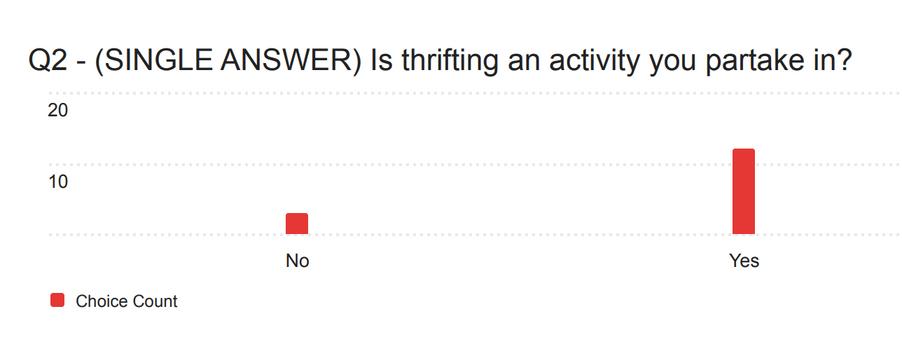
From my initial survey, I aimed to gain valuable insights into the perspectives and habits of my peers mostly ages 18 -30, particularly regarding sustainable fashion and thrifting. This data provided a foundation for understanding broader trends among students and helped refine the direction of the subsequent survey questions. Interestingly, the results revealed that a significant portion of participants actively engage in thrifting, highlighting its growing relevance among young consumers.
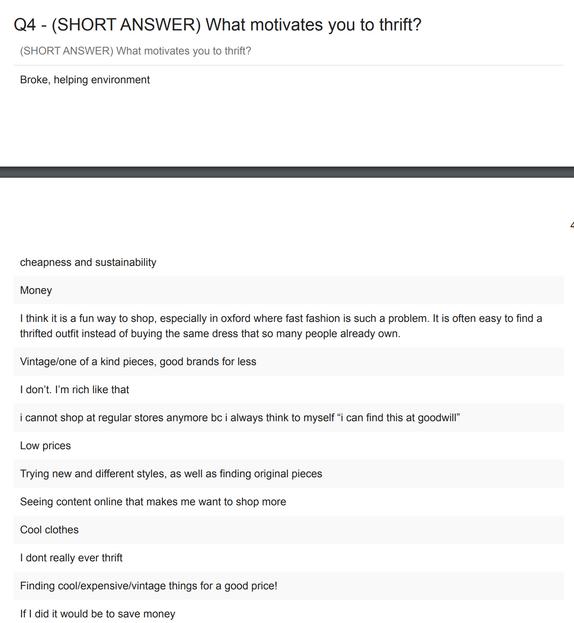
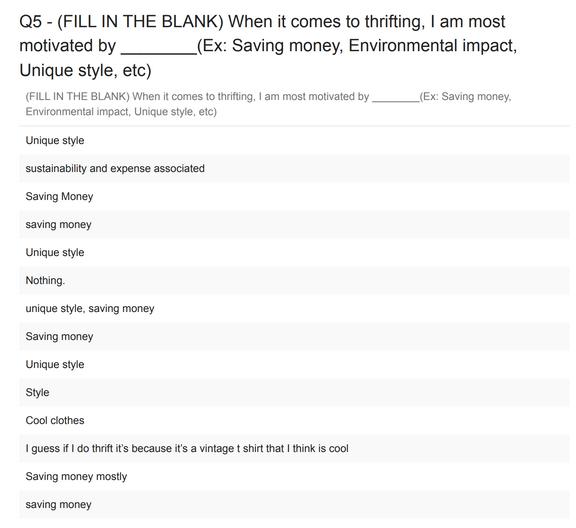
The responses from my peers revealed a mix of perspectives, with a predominant focus on style saving money, and finding good vintage pieces
However, it is concerning that many participants do not view thrifting as a significant motivator for embracing sustainability. This highlights a disconnect between the practice of thrifting and its potential role in driving environmental awareness and change

The path to sustainable fashion is as much about rethinking consumer habits as it is about holding corporations accountable. While individuals face hurdles like cost, convenience, and the ever-changing allure of trends, the real power to transform the industry lies with the brands themselves. As one participant emphasized, meaningful change requires companies to lead with transparency and ethical practices But consumers are not without influence By choosing quality over quantity, supporting genuinely sustainable initiatives, and demanding accountability, they can push the industry toward a greener future. Together, informed consumers and responsible corporations can redefine fashion not just as a means of expression, but as a force for environmental and social good.
The Impact of Fashion Brand Sustainability on Consumer Purchasing Decisionsby Doroteja Mandarić, Anica Hunjet * andDijana Vukovićhttps://doi.org/10.3390/jrfm15040176
Sustainability and Transparency Necessary Conditions for the Transition from Fast toSlow Fashion: Zara Join Life Collection’s Analysishttps://www.mdpi.com/2071-1050/13/19/11013
Author: Tyler Leonard
Author: Tyler Leonard
r
(Leonard
11/18/24)
By: Tyler Leonard
ever,

The fast fashion industry is moving faster than ever, with trends coming and going in just a few months. Shoppers eagerly buy the latest trending items, only to shove them in the back of their closets shortly after, fueling the rapid turnover that defines fashion sales today As someone who actively participates in this cycle, I buy, resell, and donate clothing regularly. I use platforms like Depop and stores like Plato's Closet to give new life to items I no longer wear and explore secondhand options that align with current trends. This hobby has shown me the growing appeal of secondhand shopping and renting as alternatives to traditional retail Combining analysis from background research, surveys, and focus groups, this article explores the rise of fast fashion, the expanding popularity of reselling and renting, and the influence of social media on modern fashion consumption
(Leonard, 11/18/24)
The fast fashion industry is moving faster than ever, with trends coming and going in just a few months. Shoppers eagerly buy the latest trending items, only to shove them in the back of their closets shortly after, fueling the rapid turnover that defines fashion sales today As someone who actively participates in this cycle, I buy, resell, and donate clothing regularly. I use platforms like Depop and stores like Plato's Closet to give new life to items I no longer wear and explore secondhand options that align with current trends This hobby has shown me the growing appeal of secondhand shopping and renting as alternatives to traditional retail. Combining analysis from background research, surveys, and focus groups, this article explores the rise of fast fashion, the expanding popularity of reselling and renting, and the influence of social media on modern fashion consumption.
These are the findings of my background research conducted on September 22, 2024
ving faster than ever, with trend
he latest trending items, only to e rapid turnover that defines fa his cycle, I buy, resell, and d
resale items" (section 4.3). This statistic reflects the growing popularity of secondhand luxury markets, where trendy but lightly used clothing finds new value Additionally, Garcia-Ortega et al. (2023) emphasize that “rental platforms and secondhand stores thrive because they offer a solution to the overflow of trendy, barely used clothes” (section 4). This illustrates how consumers are increasingly relying on alternative markets to address the surplus created by fast fashion Together, these findings underscore the link between fast-moving trends, impulsive buying, and the rise of alternative markets.
Pre-Owned
One key insight comes from a study on fast fashion, which states, "Fast fashion firms induce repeated buying of new products and disposal of 'old' ones, fueling runaway consumerism" (Garcia-Ortega, Galan-Cubillo, Llorens-Montes, & de-Miguel-Molina, 2023, section 1) This highlights how the industry's rapid turnover pushes constant consumption and disposal, a cycle that drives the growing demand for secondhand and rental clothing options. Elizabeth Cline also noted, "At least half of our clothing purchases are items we rarely wear, many bought because they’re heavily discounted" (FitzGerald, 2021, p. 1). This illustrates how shoppers, drawn in by low prices, often buy clothing impulsively, contributing to the surplus of unworn items Social media further amplifies this behavior A study by Tangri and Yu (2023) found, "The mean shopping frequency was 5 51 articles of clothing and the mean dollars spent was US$897 49 in the last 3 months on luxury
resale items" (section 4 3) This statistic reflects the growing popularity of secondhand luxury markets, where trendy but lightly used clothing finds new value. Additionally, Garcia-Ortega et al. (2023) emphasize that “rental platforms and secondhand stores thrive because they offer a solution to the overflow of trendy, barely used clothes” (section 4). This illustrates how consumers are increasingly relying on alternative markets to address the surplus created by fast fashion Together, these findings underscore the link between fast-moving trends, impulsive buying, and the rise of alternative markets
s like Plato's Closet to give ne s that align with current trends
These are the findings of my background research conducted on September 22, 2024 One key insight comes from a study on fast fashion, which states, "Fast fashion firms induce repeated buying of new products and disposal of 'old' ones, fueling runaway consumerism" (Garcia-Ortega, Galan-Cubillo, Llorens-Montes, & de-Miguel-Molina, 2023, section 1). This highlights how the industry's rapid turnover pushes constant consumption and disposal, a cycle that drives the growing demand for secondhand and rental clothing options. Elizabeth Cline also noted, "At least half of our clothing purchases are items we rarely wear, many bought because they’re heavily discounted" (FitzGerald, 2021, p. 1). This illustrates how shoppers, drawn in by low prices, often buy clothing impulsively, contributing to the surplus of unworn items. Social media further amplifies this behavior A study by Tangri and Yu (2023) found, "The mean shopping frequency was 5.51 articles of clothing and the mean dollars spent was US$897.49 in the last 3 months on luxury
“Two in five items in Gen Z's closet are preowned” (Wicker, 2024)
d shopping and renting as al round research, surveys, and fo anding popularity of
“Two in five items in Gen Z's closet are preowned” (Wicker, 2024)
Social media, especially platforms like TikTok, has a powerful influence on fashion trends. One participant mentioned, "The more you interact with a certain style on social media, the more you're going to want to wear it. Then it's out, and you won't wear it again" (18–24 female). This reflects the rapid cycle of trends that social media drives Another participant added, "Seeing something on TikTok and thinking 'that's not cool anymore' has a bigger impact than seeing it on a billboard" (18–24 female)
Everyday influencers on social media often hold more sway over consumers than traditional advertising, shaping preferences almost instantly Furthermore, one shopper explained, "Social media has changed the way that we are able to keep up with fashion trends" (18–24 female), highlighting the ease with which consumers can discover new styles This constant exposure fosters a cycle of rapid adoption and rejection of trends, increasing pressure to keep up with what’s “in” while driving fast-paced consumer behavior
Renting and secondhand shopping have gained popularity as alternatives to fast fashion. A participant shared, "I love using clothing rental services because it allows me to wear a variety of clothes without spending a fortune" (18–24 female). This highlights the financial appeal of renting. Another person added, "Plato's Closet is great because it's geared towards current trends" (18–24 female), showing how resale stores align with modern fashion.
One participant emphasized, "Renting clothes from closet accounts with friends is a good way to save money, especially for special events" (18–24 female) These insights underline the versatility of secondhand and rental options for consumers looking to balance affordability with trendiness. Not only are consumers turning to formal platforms, but they’re also creating peer-topeer networks for clothing rentals, particularly for one-time occasions, showing a shift in how younger generations view clothing ownership.
While secondhand shopping and renting are growing, many consumers still prefer new clothes, especially from fast fashion brands One person noted, "I prefer to buy new clothes because I want to own them, and I don't want to wear clothes that have been worn by someone else" (18–24 female) This highlights lingering resistance to secondhand items, driven by concerns about personal ownership and hygiene. Another participant explained, "I would rather buy new or rent because I don't want to feel bad if I damage someone else's clothes" (18–24 female), emphasizing worries about accountability with rented or secondhand items Additionally, someone shared, "At least half of my clothes are items I rarely wear that I only bought becuase they were heavily discounted" (18–24 female), showing how sales drive impulsive buying habits These behaviors illustrate that while alternatives like renting are on the rise, fast fashion’s affordability and convenience remain dominant forces in influencing consumer choices.
To clear space for new clothes
Because I no longer wear them
To earn money from reselling
To reduce waste
What motivates you to donate or resell your clothes?
The survey shows that the top motivators for donating or reselling clothes are clearing space, no longer wearing items, and earning money, each with six responses. Reducing waste received only three votes, indicating that practicality and financial benefits outweigh environmental concerns for most participants
The survey revealed that all respondents believe selling or donating clothes justifies buying new ones. This mindset reflects a common rationale among consumers to offset their shopping habits with actions perceived as responsible While this practice may alleviate guilt about overconsumption, it also perpetuates the fast fashion cycle by encouraging continuous purchasing.
Trends go out of style... Do you buy new clothes because they are trending?
Most respondents (60%) said trends go out of style every few months, while 40% felt they change even more frequently This highlights the rapid fashion cycle that drives constant wardrobe updates and fuels fast fashion.
The survey showed that most respondents (6 out of 9) buy clothes because they are trending, highlighting the influence of trends on shopping behavior However, three respondents prioritize personal style or practicality over trends.
The rapid turnover of fashion trends has created a cycle of constant consumption, where shoppers purchase trendy items only to discard them when they fall out of style. Background research reveals that fast fashion brands thrive on this pattern by encouraging frequent purchases and rapid disposal, while social media accelerates trend cycles and heightens the demand for new styles. Focus groups highlighted how platforms like TikTok amplify this behavior, with participants noting that trends on social media influence them more than traditional advertising Many also expressed a preference for renting or secondhand clothing, though others admitted they still prefer new items due to concerns about ownership or condition Survey findings reinforced these observations, showing that most people justify their purchases by reselling or donating their clothes, believing this offsets their consumption. However, this mindset often enables continued overbuying, particularly of discounted or trendy items. Respondents also indicated that while trends move quickly, they remain a powerful motivator for shopping decisions, with nearly half buying clothes primarily because they are in style.


These insights paint a picture of a fast fashion system sustained by consumer habits and a disposable approach to clothing To break this cycle, commit to reducing your clothing purchases by half over the next three months. Prioritize building a wardrobe with timeless staples rather than chasing fleeting trends, and focus on thoughtful choices that align with your personal style and long-term values.
Garcia-Ortega, B , Galan-Cubillo, J , Llorens-Montes, F J , & de-Miguel-Molina, B (2023) Sufficient consumption as a missing link toward sustainability: The case of fast fashion Journal of Cleaner Production, 399, 136678 https://wwwsciencedirect-com umiss idm oclc org/science/article/pii/S0959652623008363#sec4
FitzGerald, J (2021) Elizabeth Cline - Author of Overdressed: The Shockingly High Cost of Fast Fashion [Interview] Make Good https://www makegood world/interview-elizabeth-cline
Tangri, K., & Yu, H. (2023, May 23). Why buy used? Motivators and barriers for re-commerce luxury fashion. Emerald Insight. https://www-emeraldcom.umiss.idm.oclc.org/insight/content/doi/10.1108/IJRDM-10-20220417/full/html#sec004
Wicker, A. (2024, March 5). The trendy second-hand clothing market is huge and still growing – yet nobody is turning a profit. BBC News. https://www.bbc.com/worklife/article/20240301-international-second-handclothing-market-profitable Issue 1, Volume 1 | 37
By: C. Avery LaRosa

Are you someone having trouble finding clothing that fits you properly and comfortably? For many individuals shopping for clothes is not an easy task and many struggle with finding the appropriate clothing for their needs. As a 4’ll, 21-year-old woman, searching for clothing has always been a tremendous challenge. As I got into my teen years, I couldn't fit into certain brands or articles of clothing due to my petite size. Many of the brands my peers and I loved, I was unable to wear due to their limited size range. It’s embarrassing to admit, but much of my closet is filled with kids-sized clothing, and everything else is tailored. I specifically remember shopping for my senior prom dress to be such a difficult experience. I did not like how anything looked on me whatsoever and the styles I did like, they did not carry in my size. The dress I did end up going with, needed lots of alterations and thankfully was able to fit. I know many people find it challenging as I do to find the proper clothes they feel and look best in, no matter what size they are. As someone who loves fashion, it is difficult to not fit in the brands I love, and rarely have a smooth shopping experience. As I begin my career in the fashion industry, I have become more intrigued with size inclusion, and diversity amongst various fashion brands. In this article, I will indulge in the challenges petite shoppers face and would be more likely to purchase from petite-focused brands, if they
were as diverse, and inclusive as all clothing sizes
For a while many popular fashion brands have leaned more towards the “one-size-fits-all” approach, which over the years has not been very successful. Brands carrying one-size-only garments have been proven to leave many unsatisfied with their shopping experiences. For people who are shorter in height, it can be dreadful finding clothes. In recent years, many people have voiced their frustration with petite sizing being overlooked by many large companies. There has been an increase in diversity among petite-centered brands and the importance of size inclusivity
In the fashion industry, the petite size category has always been known to refer to people who are under 5’4. However, there has been recognition that petite sizes are not solely based on height, but proportions as well. An academic journal, The Journal of Consumer Affairs interviews multiple women with various body types and how they feel when looking for clothes. Kara, 22, told her thoughts on petite options. “I am envious when I see someone tall wearing a cute swing dress because they look so comfortable, but I can't wear something with that little shape because of my height.. I think I belong to the demographics that the retail industry wants to ignore. So, as a smaller-framed woman, who is a size 2, I shop at the Junior's section, but I do not
want to shop in the Junior's section anymore. Like any other women, I want to wear apparel for women because I am a woman—a bona fide woman! I am a regular-sized customer…only shorter…the selections of petite clothing are minimal, and the sales representatives are usually confused about how to deal with short women, which makes me so angry.. It is not shocking that many find it aggravating to find the right size, as much of what is seen is worn by 6’0 tall, size 0 models on the runway or in stores by unrealistic-looking mannequins. This leaves room for individuals to feel unseen. Studies have shown that 50% of women across the United States are 5’4 and under, therefore there are still very minimal retailers that design petite clothing articles and a lack of representation of diverse body types. Petite women are stereotyped to be tiny in every aspect just because they are short. That is not the case, “...pant length is not the only consideration for petite women. For instance, Kara stated that she needs regular-sized adult clothing to fit her developed female figure without any alteration, which means sleeves, skirts, tops, should also be shorter in length, armholes should be higher, shoulders should be narrower, and pants should have a shorter rise”. There is an inconsistency when it comes to what brands think petite sizes should be and what they are. Another study that was published in 2016, examines petite women's body size proportions to see if they reflect accurately to retailers sizing charts. The purpose of the study is for brands to be able to improve their measurements and sizing. During this, the author discovered that “industry sizing systems do not generally represent average petite size women precisely except for stature. Within the petite women, four body types were identified (top petite: 30.0 percent, bottom petite: 30.8 percent, regular petite: 23.6 percent, and plus size: 15.4
percent). Of the four groups, the ASTM D7878 generally represented the “top petite” sizing.” Even with various studies, and individuals who have voiced their concerns regarding petite sizing charts, there is still such a small variety of brands who carry accurate sizing of petite clothing.

To further deep-dive into the struggles of finding clothes and brands that fit, I conducted a focus group to provide further insights regarding how my community feels about sizing. During my focus group, I was able to ask questions, and opinions, and gather data among a diverse group of college students to help petite-focused brands better understand their target audience.
Inconsistencies in Sizing Across Brands During my focus groups, I discovered that many participants whether they are seeking petite clothes or not still find brands to be inconsistent when it comes to their sizing. A size 2 petite jeans from one store may fit perfectly, but the same size jeans and fit from another store are either too big or too small. One participant from the focus group stated, "Sometimes it depends because, like, some brand, like, sometimes I'm a large, and then sometimes I'm an extra-large. It just depends on the brand, I guess". Others agreed stating that they are unsatisfied and that it is one of the reasons it is impossible to shop in certain online stores. More insight was revealed showing that many of the participants are familiar with the sizing of their favorite brands "When I shop at Anthropologie, I’ll buy a shirt in a large
because I like the way it drapes, versus another product I’ll buy in an extra small just for a different fit". It was also noted that people tend to stick to what they know and brands they can trust to be true to size.
Based on many responses from my group, I decided to shift the focus towards questions about brand loyalty and how they feel about particular brands. Throughout the focus group, many participants seemed to talk about or focus on one brand when responding with their feedback. "I really like their clothes...I'm pretty loyal to them, I guess...I just love their jeans because...they actually fit me right." Here, the perfect fit contributes to the participant’s brand loyalty, showing the importance of a consistent and reliable product experience.” At the start of the focus group, I had asked them to write down their favorite brands. Many of them expressed which brands they love and keep going back to. "I'm loyal to Anthropology just because...I trust their vision so much and it always inspires me...they never fail to impress me or come out with something cooler again." While other group members have different factors that keep them buying more. "For me, it’s the comfort and durability...I feel like it’s a lot of like how the clothes fit you too." This underscores that comfort, durability, and reliable fit are key factors driving continued preference for a brand.” This highlights how a brand meeting it’s audience’s needs and alignment with personal style can foster loyalty.

Another topic that became apparent was the challenges brands face to become size-inclusive. Many brands aim to design clothing for petite women and still fail to meet their target audience. While on the other hand, there are brands that don't feel like size and inclusivity matters. One participant talked about a popular clothing brand that is not size-inclusive. "I think Brandy’s the main one... they intentionally make it exclusive... their goal isn’t to be size-inclusive at all" We also touched upon the incorrect placing of petite sizes on labels. "Sometimes when you go into the petite section, it feels like it’s just small sizes on sale. It’s hard to find consistency in actual petite sizing". Many stores label x-small clothes or small clothes as petite even though they have the same measurements as non-petite labeled clothing. Some members felt that stores shouldn’t exclude petite individuals from average-sized clothes and shouldn't put a label on a specific size. "I feel like a lot of stores aren’t going to make people feel isolated in that aspect. Like, if there’s a jean that is for a petite woman... it’s tagged just petite. I think it would reduce sales to isolate people like that".
Besides conducting a focus group, I also designed a survey regarding individuals between the ages of 18-24 shopping experiences and thoughts on sizing. I asked those who took the survey personal
questions regarding their shopping habits, brands they shop, for what drives them, and more. The first graph, well reflects the feedback received from the focus group, proving that a large margin of people, regardless of their size find it challenging to find clothes that fit.
The 2nd figure suggests that half of the individuals avoid shopping for clothes due to sizing issues and the frustration of looking for garments that fit comfortably. In the third graph, you can see that many people look for certain factors behind sizing when it comes to clothing and are more concerned with other elements such as material, proportions, brand, and quality.
For many petite individuals, it is difficult to find stylish clothing that they feel comfortable in and this has been an issue within the fashion industry for a while now Through my research, I believe that brands need to address sizing problems within sizing charts and start embracing diversity and inclusion. The future of the fashion industry is aimed at making everyone feel fabulous in what they are wearing. It is important to build a community where people of all sizes are heard, seen, and valued.




Sources: Cavusoglu, L., & Atik, D. (2023). Extending the diversity conversation: Fashion consumption experiences of underrepresented and underserved women. Journal of Consumer Affairs, 57(1), 387-417.
Kim, Y., Song, H.K. and Ashdown, S.P. (2016), "Women’s petite and regular body measurements compared to current retail sizing conventions", International Journal of Clothing Science and Technology, Vol. 28 No. 1, pp. 47-64.

Qualtrics survey: https://uofmississippi.yul1.qualtrics.com/reporting-dashboard/web/672bdd810c882600086bb4ed /pages/Page_23788e92-63be-43ab-865a-3eb4b1604740/view?surveyId=SV_d4sX16IPZsULfca
By: Rebecca Case

Coco Chanel. (Roger Viollet, Nov. 20, 2024)
Coco Chanel. (Roger Viollet, Nov. 20, 2024)
“In order to be irreplaceable, one must always be different” (Coco Chanel). I am a Junior Integrated Marketing and Communications (IMC) major at The University of Mississippi from Madison, Mississippi. Five fast facts that make up my personality are that I love my dog, Molly, my biggest inspirations are my two older sisters. With my older sisters being big influences in my life, I growed up aspiring to have their cool fashion sense and followed along closely to each fashion decision they made. From begging them to do my makeup, braid my hair, or to borrow their clothes, I developed an interest in fashion which later after several years of taking French and visiting France, merged to my adoration of French fashion brands. I chose to research European fashion branding amongst luxury brands in France, such as Louis Vuitton, Chanel, and Yves Saint Laurent. I’ll start off by showing my background research, my self-conducted survey, then my focus group.
“In order to be irreplaceable, one must always be different” (Coco Chanel). I am a Junior Integrated Marketing and Communications (IMC) major at The University of Mississippi from Madison, Mississippi. Five fast facts that make up my personality are that I love my dog, Molly, my biggest inspirations are my two older sisters. With my older sisters being big influences in my life, I growed up aspiring to have their cool fashion sense and followed along closely to each fashion decision they made. From begging them to do my makeup, braid my hair, or to borrow their clothes, I developed an interest in fashion which later after several years of taking French and visiting France, merged to my adoration of French fashion brands. I chose to research European fashion branding amongst luxury brands in France, such as Louis Vuitton, Chanel, and Yves Saint Laurent. I’ll start off by showing my background research, my self-conducted survey, then focus
For my research, I delved into branding strategies of majorly successful brands in France to figure out tactics that worked well for their brands. Starting with Yves Saint Laurent. Li writes, “Understanding of the development prospects of Saint Laurent's current Internet channel marketing and sales in the luxury consumer industry in the future, and analyzing its brand strategy and positioning as well as target groups through graphic analysis of market positioning data”. This academic journal goes over the general marketing strategies of Yves Saint Laurent.
Discussing the brand’s usage of Marketing Mix Four P’s of product, price, place, and promotion. The journal discusses statistics from comparing Yves Saint Laurent to its competitors, how it fairs in the Kering Group, and goes into much detail. Provides a SWOT analysis of the brand and discusses its usage of certain models or celebrities that help promote the brand while maintaining its look of prestige elegance.
Following my research on Yves Saint Laurent, I looked into Chanel. Chanel has remained a notoriously well known brand maintaining luxury, respect, and desirability. Guseva writes, “Brand stories appeal to the consumers’ emotions and dreams and help create a memorable experience associated with a brand”(Guseva, 2021, p. 18). This case study talks about the methodology of storytelling used as a marketing strategy in Chanel. Providing history of the brand along with its founder along with research results from the case study Also walks through Chanel’s 4P’s of Marketing mix.
Louis Vuitton, is a brand that started out small and over the years gradually climbed it’s way to the top of luxury brands, which made me question how they have maintained their status and how they proceed to excite their audiences. Nagasawa writes, “As part of Louis Vuitton’s promotional strategy, Louis Vuitton holds extravagant parties with calculated timing” (Nagasawa, 2010). This academic journal discusses the 4P’s of marketing. Discusses 18 product principles, 8 price principles, 11 place principles, and 9 promotion principles within Louis Vuitton. The journal serves as an analysis of Louis Vuittons branding and marketing, how they’ve taken these principles and marketing strategies into their luxury brand.
These articles come together with a shared aspect of the importance of diving deeper into what makes a brand successful. From different strategies of focusing on data, storytelling, and promotional events amongst targeted audiences. Tying these elements together would help create a persona and an image.
My IMC 404 class split into groups discussing a variety of topics; my group’s topic being fashion. Six of our classmates participated in our focus group where me and two of my peers conducted it as moderators and interviewers compiling nearly forty questions involving fashion, influencers, promotions, brand deals, and other subtopics involving fashion. The participants were all 18-21 year old females majoring in IMC. Their responses were audio recorded then later transcribed. After analyzing the responses, I concluded on three themes that provided further insight to my topic: Trendy vs. timeless fashion, fashion as self-expression, and desire for practicality in promotions. These themes tie together with my topic by providing perspective from young adults on fashion companies branding, fashion trends promoted by influencers and celebrities, and how they are sold on a product.
Starting off with the theme of trendy vs timeless fashion. One participant commented on how they budget their wardrobe, she says, "I feel like nowadays I don’t have enough money to, like, just spend it frivolously. So I normally, like, make sure I’m gonna wear that for, like, a long time period" (an 18-21 year old female). With regards to high-end luxury brands, their quality is long-lasting, however low-end brands, such as Shein, profit off of consumers’ quick-to-buy habits with trendy fashion pieces. Trends come and go, but quality should never fade. When making a purchase it’s important to consider how long you would want to wear it and how long you can wear it before it goes out of style or the article of clothing wears down due to poor manufacturing.
Which leads to my second theme of fashion as self expression. Fashion is subjective and personal to each individual. When asked to define fashion, the group paused with the collective agreeing on one participant’s answer, "I think it just kind of varies for everyone." (an 18-21 year old female). So when picking out what to purchase, while it relies on multiple factors behind the companies branding and the article of clothing, it depends on what the consumer wants based on how they can style it, what event it can be worn to, and as previously stated, if the consumer deems the product worthy of its price.
Amongst the group, there seemed to be an overwhelming majority focusing on a desire for practicality in promotions amongst brands. Part of a purchase is if the celebrity, influencer,or model promoting the article of clothing would actually wear it if they weren’t getting paid. "If
you’re promoting something, actually use it for yourself, and that’s how I know it’s genuine" (an 18-21 year old female). Seeking authenticity remains to surface in the focus group.
I created a survey about branding in luxury fashion through Qualtrics and retrieved responses from my peers, with a variety of majors, then after collecting responses, I analyzed those and charts. The responses were anonymous and the participants were all 18-21 year old females and males attending the University of Mississippi. In my Qualtrics survey, I asked 15 questions regarding fashion and luxury fashion companies branding strategies. Through this survey, I mostly tried to figure out what makes fashion campaigns memorable and if that persuades a consumer to purchase from them. In my survey, I asked what would make someone feel moved by a brand, and the responses were, to paraphrase, desiring relatability to everyday life or to the individual’s body shape, humanizing the brand, celebrities, agreeable values, and uniqueness of the campaign. With that being said, there's a variety of ways fashion brands can appeal to the consumer to boost their sales and to promote themselves.

Figure 1 shows what can persuade consumers. The data shows that when brands include a storyline in their promotion to tug on the heart strings of their audience, that it is the least effective method, as opposed to utilizing a relevant event.

Figure 2. (Case, Nov 20, 2024)
Figure 2 shows consumers' awareness of the values of brands they buy from. This data is important for when brands take a stance in social movements or involve themselves in controversial conversations. Brands gain and lose support from their audience because of their values, but providing consistency could help maintain their growth and customer loyalty. The data shows that audiences are aware, and take note of what a company showcases it’s values are.

Figure 3. (Case, Nov 19, 2024)
Figure 3 relates to the previous background research, including the brand’s already discussed in addition to other high-end luxury fashion brands. The data shows that Louis Vuitton is reaching more than its competitors in their advertising.
Through my research, I dug deeper into what makes a fashion brand’s campaign work. My background research delved into the marketing mixes of three luxury brands and my focus group paired with my survey gathered further insight from the consumers’ perspective. The “4 P’s Marketing Mix” strategy behind brands is: product, price, place, and promotion. I want you to take your favorite brand and write down what they do under each category, try to figure out
what makes them successful from this, then google your selected brand’s 4 P’s Marketing Mix to see how many you got right.
Notes
Guseva, I. (2021). Storytelling as a marketing tool: Case Study Chanel.
Li, M. (n.d.). The research on the brand marketing strategy of Yves Saint Laurent. Journal of Education, Humanities and Social Sciences. https://doi.org/10.54097/ehss.v5i.2877
Nagasawa, S. (2010). Luxury Brand Strategy of Louis Vuitton-Details of Marketing Principles (Doctoral dissertation, Waseda University).
Ward, M. (2016, August 13). 5 things you didn’t know about Coco Chanel. Vogue. https://www.vogue.com/article/5-things-you-didnt-know-about-coco-chanel
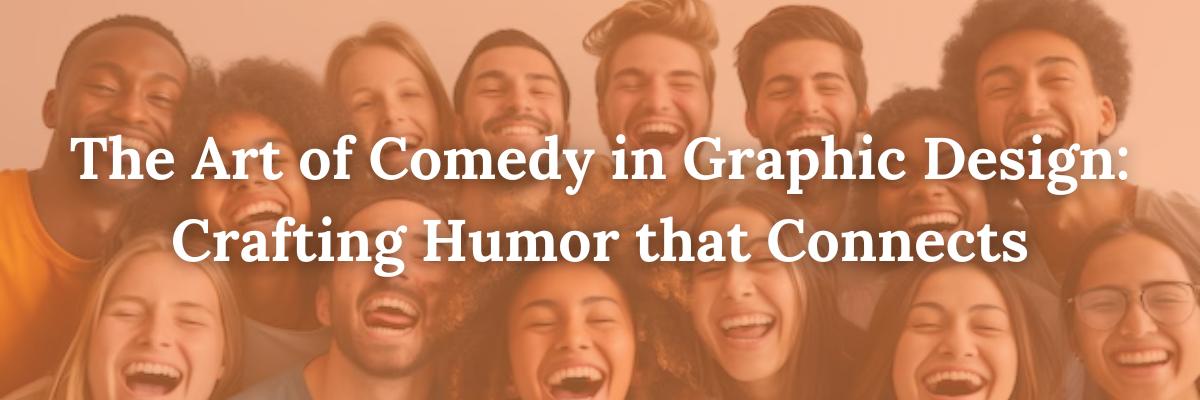
By: Markel Williams
"Comedy can build community, ease personal and shared pain, and enhance connections among cultures." (Hogue, 2023)
Imagine a billboard that makes you chuckle while you ' re stuck in traffic; that brief moment of joy could turn an otherwise frustrating experience into something just a little more bearable. Humor has always been a powerful communication tool, helping us relate to one another and make sense of the world For me, the art of comedy is not just about telling jokes it's about being able to walk into any room and lighten the atmosphere, whether it’s through a witty remark or a playful gesture. Comedy has the ability to disarm, to make people feel more human, and sometimes even make them forget that they're being advertised to. In that sense, it’s a little bit like sneaking vegetables into a brownie everyone ends up better for it, but nobody feels like they're sacrificing anything This article delves into the role of comedy in graphic design by exploring background research, focus group findings, and survey results.
Comedy in design is more than visual gags or funny taglines; it is a sophisticated tool that communicates ideas and builds relationships As Bev Hogue points out, teaching comedy in writing or design involves dissecting comedic timing and experimenting with its various types, including satire, parody, and slapstick (Hogue, 2023). This highlights that comedy, when used well, can make messages more memorable and engaging.
The evolution of comedy has seen its influence stretch into graphic design, making it a potent medium for businesses to connect with their audiences Anderson (2022) discusses how comedians like Billy Eichner and Eric Andre use humor to tackle complex social issues, providing entertainment while sparking thought. Graphic design can similarly address challenges, especially in branding, using humor to make content accessible and relatable. As Susan Kare (Wilson, 2022) noted, "Good design’s are not about what medium you ’ re working in It’s about thinking hard about what you want to do and what you have to work with before you start." In humor-based graphic design, every element color, font, and imagery must have purpose and intent, contributing to the overall message.
Finally, Chris Cookson (2024) explains that humor is effective because it is crafted carefully to fit a specific context For graphic designers, this means that the impact of humor is in its delivery, through the choice of fonts, colors, and visual arrangements, all of which influence how
an audience perceives and connects with the message. Successful humorous designs are relatable and maintain authenticity, ensuring that humor isn't forced but naturally fits the brand's story
To further understand the dynamics of comedy in graphic design, I conducted a focus group comprising individuals from various age groups and backgrounds We discussed the effectiveness of humor in creating engaging visual content, leading to three key themes:
Participants noted that humor in design can increase engagement and create lasting emotional connections with audiences. One participant explained, "I pay more attention to funny stuff," highlighting how humor effectively captures attention compared to traditional advertising Another participant added, "Funny things make people come together," emphasizing humor’s role in fostering a share d sense of enjoyment and connection. A third participant pointed out, "It humanizes [the brand] in a way, " suggesting that humor helps make brands more approachable and relatable on a personal level
This is further supported by data showing that brands known for their humorous campaigns, such as Old Spice, effectively build consumer recognition and emotional resonance. Humor adds a layer of personality to a brand, making it more memorable and approachable.
Another significant theme was how humor fosters a sense of community, particularly among groups with shared experiences. One participant remarked, "Laughing brings people together; it automatically creates a bond," underlining the power of humor in building connections. Another participant added, "It’s something we all went through, like a funny, shared experience," highlighting how humor can make even mundane experiences more relatable a nd memorable A third participant said, "Comedy makes things feel more relatable and memorable," suggesting that humor’s ability to connect people is crucial for fostering a sense of belonging.
Humor acts as a bridge, connecting people with similar experiences or interests. The survey results showed that 85% of respondents believe humor is an effective way for brands to connect people, with actions such as sharing, liking, or discussing humorous content proving popular. Humor, when successfully integrated into design, becomes a powerful tool for brands seeking to foster community and increase interaction, making audiences feel like part of something bigger.
The final theme focused on the visual aspects of humor in graphic design how fonts, colors, and imagery all contribute to the comedic tone of a piece. As one participant remarked, "Fonts definitely set the tone some look serious, others are playful." The choice of colors and imagery can set expectations, evoke emotions, and ultimately
determine whether the humor lands with the intended audience. Another participant mentioned, "Bright colors draw me in; they feel more fun and lighthearted," emphasizing how color choices can influence the perception of humor A third participant added, "Subtle visual jokes, like small text or hidden icons, make me look twice," indicating that humor can also be effectively used in more subtle, layered ways to engage audiences.
Understanding these preferences allows designers to tailor their work to appeal specifically to their target audience, ensuring the humor is well-received and effective Aligning visual elements with the intended humor style whether it’s the playful nature of absurd humor or the clever wit of satire helps create a cohesive and engaging design that resonates with the audience.
The survey results indicate that comedy in graphic design is an effective tool for building connections, easing tension, and creating community. Respondents frequently described humor in design as playful elements that catch attention, with 78% agreeing it makes brands more engaging This highlights its value, especially in industries like Food & Beverage and Retail, where humor can be an essential component of brand identity Respondents also noted that they often encounter humor on platforms like TikTok, with 85% reporting frequent exposure, which emphasizes how humor is embedded in everyday brand interactions.
Two key survey questions provide strong support for the claims made in this business article:
1 "Do you think humor in graphic design can build a sense of community at Ole Miss?" Approximately 82% of respondents answered affirmatively This suggests that humor is highly effective in fostering shared experiences and building a sense of belonging, demonstrating its potential to enhance community conne ctions in a relatable and approachable way.
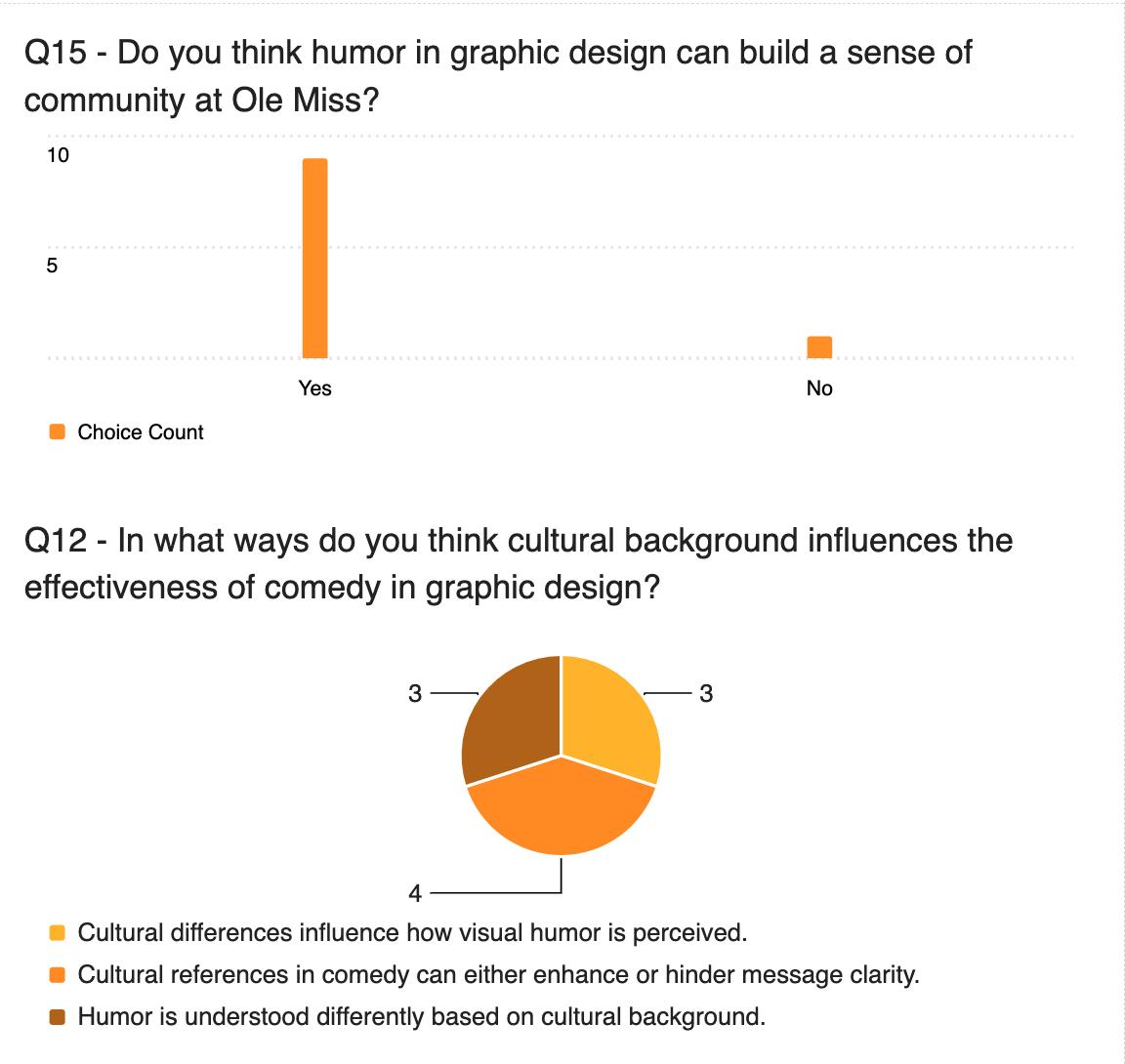

These survey insights clearly illustr ate how humor in graphic design goes beyond simply adding fun. It is a strategic approach to making brands more approachable, fostering connections, and increasing engagement. By using humor intentionally, brands can create content that resonates with diverse audiences, adding a layer of relatability and ensuring that their messaging stands out
For graphic designers and marketers, understanding how humor influences brand perception is crucial. The data shows that humor must align with audience expectations and cultural context to be effective. Humor adds warmth and relatability, making brands feel more human and approachable, while also increasing brand recall. When used effectively, humor can turn a brand interaction into a memorable experience that connects people and builds community This makes humor not just an entertaining aspect, but a core strategy in impactful graphic design
Comedy in graphic design is far more than just an element of entertainment; it is a strategic tool that can transform how brands connect with their audiences Humor brings a unique depth to communication by adding warmth, relatability, and personality to brand messages, turning them into experiences that resonate and stick with consumers. The focus group and survey findings have shown that humor can foster emotional connections, build a sense of community, and make brand messaging more engaging and memorable.
For designers and marketers, the key lies in using humor intentionally crafting every element, from fonts to colors to subtle visual cues, in a way that amplifies the comedic impact while staying true to the brand's voice. The result isn’t just about making someone laugh; it’s about creating a lasting impression that drives connection and action. Humor disarms audiences, makes content approachable, and invites interaction, often blurring the line between marketing and genuine human experience
As you embark on your next creative project, think about how humor can be woven into the story you are telling. Click on this link and choose one aspect to add humor to your next assignment. Reflect on the connections you spark and the communities you foster.
Cookson, C. (2024, August 9). From Bosch to Brat, humorous design sticks with the US The Drum.
https://www.thedrum.com/opinion/2024/08/06/bosch-brat-humorous-design-stickswith-us
Tate, M. (2024, August 29). Graphic Designers. U.S. Bureau of Labor Statistics. https://www.bls.gov/ooh/Arts-and-Design/Graphic-designers.htm#tab-1
Nikoosimaitak, L. [Campaign]. (2023, May 22), YunoJuno: Life as a motion graphics freelancer, https://www.youtube.com/watch?v=lA-NgUVJLVE&t=6s
Wilson, D. (2022). Using Design Knowledge To Tell Story (Master's thesis, Kent State University).
Anderson, A. (2022). Perhaps I Will: A Content Analysis and Media Production Focusing on Contemporary Comedy and Comedians (Master's thesis, Northern Illinois University).
Hogue, B. (Ed.). (2023, August). Teaching Comedy. Modern Language Association.
Williams, M. (2024, November 19). What Druski Can Teach Us About Crafting Insights. https://snobhop.substack.com/p/what-druski-can-teach-us-about-crafting
Figure 1 -Williams, M. (2024, November 19). https://www.freepik.com/premium-ai-image/group-diverse-people-laughing-together_ 152639228.htm
Figure 2 - Williams, M. (2024, November 18). https://www.qualtrics.com/
Figure 3 - Williams, M. (2024, November 18). https://www.qualtrics.com/
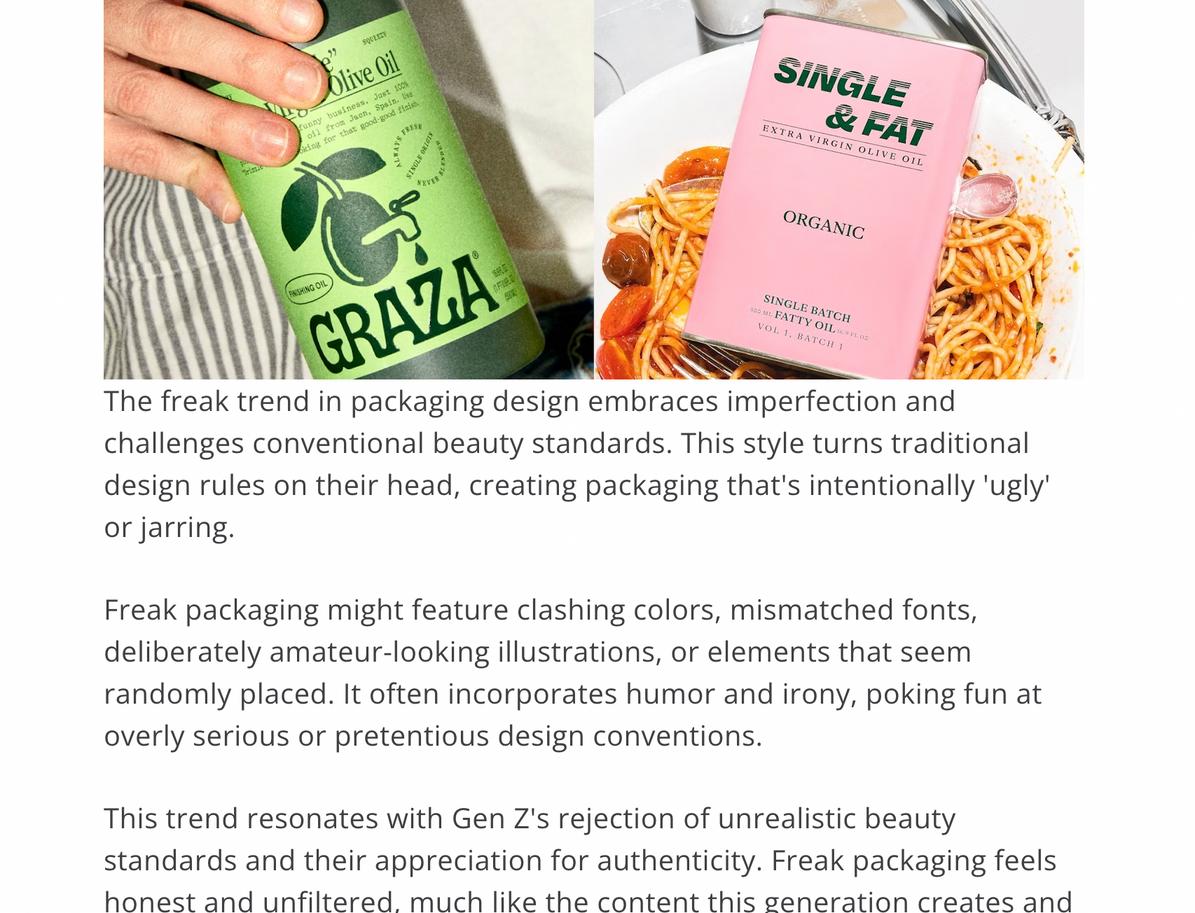
Am I weird, or does anyone else find it oddly fun to aimlessly wander the aisles of Whole Foods?
There’s something deeply satisfying about roaming through aesthetically pleasing, often “health-conscious” stores No real agenda, no list just gravitating towards unique, coolly branded products It’s not about needing anything; if anything, I’m almost hoping to be convinced that I do need to try something new
I’ve always been a romantic, though not exclusively in the relationship sense I find beauty in the mundane and romanticize my life without any particular purpose because, to me, that is the purpose
Am I weird, or does anyone else find it oddly fun to aimlessly wander the aisles of Whole Foods?
There’s something deeply satisfying about roaming through aesthetically pleasing, often “health-conscious”
Browsing the shelves and admiring the designs of each package, I feel strangely productive even though, in reality, I’m doing absolutely nothing
I’ve always been a romantic, though not exclusively in the relationship sense I find beauty in the mundane and romanticize my life without any particular purpose because, to me, that is the purpose
At first, I thought this mindset was niche, but social media trends have revealed that my generation, Gen Z, shares a similar experience This phenomenon, often referred to as “The Art of Romanticizing,” involves making life’s simple routines feel more intentional and special than they might objectively be
stores No real agenda, no list just gravitating towards unique, coolly branded products. It’s not about needing anything; if anything, I’m almost hoping to be convinced that I do need to try something new Browsing the shelves and admiring the designs of each package, I feel strangely productive even though, in reality, I’m doing absolutely nothing
The experience is more than just shopping; it’s immersive Packaging and branding communicate far beyond functionality When I see a sleek bag of potato chips or a vibrant indie bottle of olive oil, I’m not just looking at a product I’m imagining the lifestyle I’m buying into, the aesthetic I’m curating, and the identity I’m building for myself It feels intentional, even exciting Is that strange?
As an undergraduate in Integrated Marketing Communications and a romanticizer myself I’ve become fascinated by how romanticizing, or elevating the perceived value of something beyond its functional purpose, influences consumer behavior and purchasing decisions. This business article investigates the extent to which packaging and aesthetics influence the new-age consumer, particularly Gen Z, in their decision-making
The experience is more than just shopping; it’s immersive Packaging and branding communicate far beyond functionality When I see a sleek bag of potato chips or a vibrant indie bottle of olive oil, I’m not just looking at a product I’m imagining the lifestyle I’m buying into, the aesthetic I’m curating, and the identity I’m building for myself It feels intentional, even exciting. Is that strange?
At first, I thought this mindset was niche, but social media trends have revealed that my generation, Gen Z, shares a similar experience This phenomenon, often referred to as “The Art of Romanticizing,” involves making life’s simple routines feel more intentional and special than they might objectively be.
As an undergraduate in Integrated Marketing Communications and a romanticizer myself I’ve become fascinated by how romanticizing, or elevating the perceived value of something beyond its functional purpose, influences consumer behavior and purchasing decisions. This business article investigates the extent to which packaging and aesthetics influence the new-age consumer, particularly Gen Z, in their decision-making
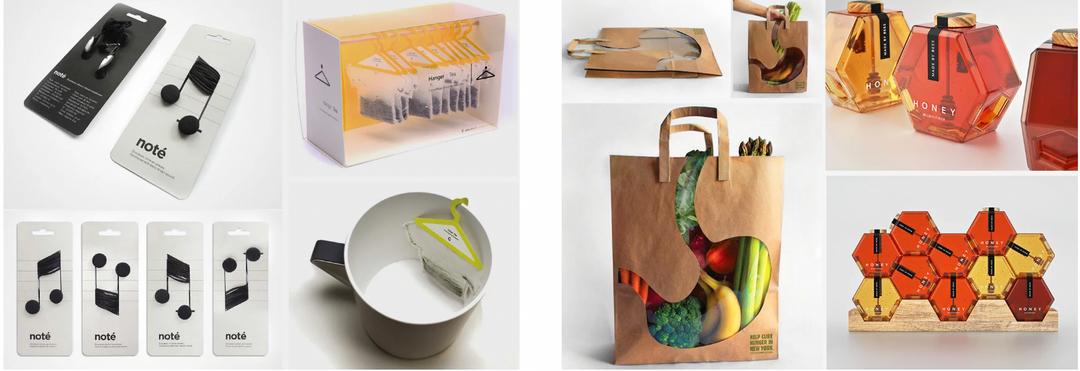
branding, businesses can directly influence consumer perceptions and enhance their product’s perceived value, ultimately driving sales for a generation whose expectations marry both function and form.
Packaging holds immense influence, often referred to as the "silent salesman of the shelf" for its ability to communicate solely through design A survey among Generation Z consumers found that 77% consider product value a key factor in purchasing decisions [1], emphasizing the importance of maximizing perceived value through packaging This perceived value includes not only a product’s practical utility but also the emotional and aesthetic appeal it creates for the buyer.
Research from the Asian Journal of Multidisciplinary Research & Review highlights a strong correlation between visually appealing packaging and consumer buying decisions The results of the study demonstrate how a product's aesthetics directly impact purchasing behavior [2] While rationality plays a role in shopping, emotions heavily influence our choices Packaging designers leverage this by creating emotional bonds between products and consumers, aligning packaging design with the values, identities, and aspirations of the target audience
Branded packaging is crafted to fulfill both functional and emotional needs, intentionally capturing attention and shaping consumer perceptions Studies reveal that visual and sensory elements of packaging can manipulate consumer expectations, allowing brands to elevate perceived product worth through thoughtful design. For reference, a 2023 study led by neuroscientist Dr Fabiana Carvalho explored how unique coffee packaging influenced taste perception through crossmodal cues like color [3] Participants experienced altered expectations and flavor perceptions, even when sampling identical coffee This affirmed the powerful role of visual packaging in shaping consumer experiences.

This phenomenon ties into the broader insight that humans, as visually dominant beings, rely heavily on visual cues for decision-making The human cortex devotes more processing power to visual information than any other sensory input, making packaging design especially color a pivotal tool for capturing attention and communicating product attributes This interplay, known as cross-modal correspondence, demonstrates how sensory cues affect both emotional and practical judgments
The conducted background research reinforces the growing emphasis on aesthetics in packaging, particularly for a generation like Gen Z, whose romanticized approach to consumerism values identity, emotion, and intentionality in purchasing decisions.
The focus group explored the influence of social media on Gen Z's consumer behavior. Participants, aged 20-22 from various U S states, discussed their primary social media apps (Instagram, TikTok, Snapchat) and social media's role in influencing purchasing decisions. The three key themes are as follows:
Participants shared that they are naturally drawn to products with attractive packaging, especially when browsing store shelves One noted, “I feel like we're drawn to the like, prettier things, like more aesthetically pleasing things ” This instinctive attraction often overrides familiarity with the product itself, emphasizing the power of design in retaining consumer attention.
The group also acknowledged that products with utility are often more desirable if they also have appealing packaging. One participant shared, “Trader Joe’s has prettier packaging I went there last year and thought, ‘Oh, this stuff is so cool I want to buy it ’ I don’t even know if it tastes good, but the look of it just makes me want it ”
Another point of discussion centered on celebrityowned brands, with minimalist and aesthetic branding, promoting sales and brand recognition “Every new thing that’s coming out especially stuff famous people are doing, like I think about Hailey Bieber and her Rhode stuff the packaging looks so, like, minimal; there are no words, none of that It is all super pretty and like something you could display without even knowing what it is. But everyone knows because of the marketing, yeah?”
These insights reinforce the importance of packaging design as an emotional driver in consumer purchasing decisions The visual appeal of a product's packaging can elevate a product’s perceived value and desirability because it makes the consumer feel productive with its purchase
While social media certainly popularizes the idea of romanticizing daily routines, participants emphasized that it’s also a lifestyle choice that they find personally fulfilling This tendency to add beauty and intention to daily activities reveals a cultural shift where aesthetics and functionality are intertwined in purchasing decisions
One participant emphasized the natural human tendency to romanticize life, explaining, “I think some people are natural romantics like you have optimists versus pessimists Some people will always try to make a situation positive, so for them, romanticizing life isn’t a trend But by using social media to push the idea of romanticizing little things in your life, it can reach people who don’t normally think that way, and it could have a positive impact on their lives.”
There was further consensus that romanticizing life is more than a niche tendency, and reflects deeper values as a lifestyle Another participant said, “I think it’s our values deep down, like our fundamental values as a person ” For Gen Z, even seemingly simple acts of consumption are imbued with meaning, driven by the desire to enhance their sense of identity and well-being
Others noted how romanticizing often intertwines with consumerism, particularly in small, intentional purchases As one participant shared, “Whenever I’m having a day where I want to romanticize life, I’ll go buy flowers or a coffee, rather than just doing something that doesn’t involve spending money ”
One participant had a powerful quote that seemed to resonate with the other participants, “I feel like if I feel put together for myself, that I do better ” This quote directly emphasizes the emotional value placed on purchases.
Romanticizing purchases aligns with the generation's focus on personal productivity and fulfillment, illustrating how emotional satisfaction and self-image are key drivers behind consumer decisions.
There was a consensus that there is indeed a market for “tangible romantics” products that, beyond their functionality, appeal to an aesthetic or lifestyle ideal One participant shared their experience with the Hatch alarm clock: “I don’t even use it to set an alarm I still do that on my phone But just having it sitting there, knowing it'll shine in the morning, makes me feel like I've got some routine on the days I want to feel woken up by the light ” This sentiment captures how the aesthetic appeal of a product can provide emotional comfort or a sense of routine, even if its functionality is secondary

Similarly, another participant brought up the phenomenon of buying luxury items for their visual appeal rather than for use: “Yeah, think about Veuve so many people buy it and never drink it; they just use it as decor. I guess if your financial status is higher, you might actually drink it regularly But a lot of college students just keep it sitting on their bar cart, while they hide other alcohol with uglier packaging ”
Similarly, another participant brought up the phenomenon of buying luxury items for their visual appeal rather than for use: “Yeah, think about Veuve so many people buy it and never drink it; they just use it as decor I guess if your financial status is higher, you might actually drink it regularly But a lot of college students just keep it sitting on their bar cart, while they hide other alcohol with uglier packaging ”
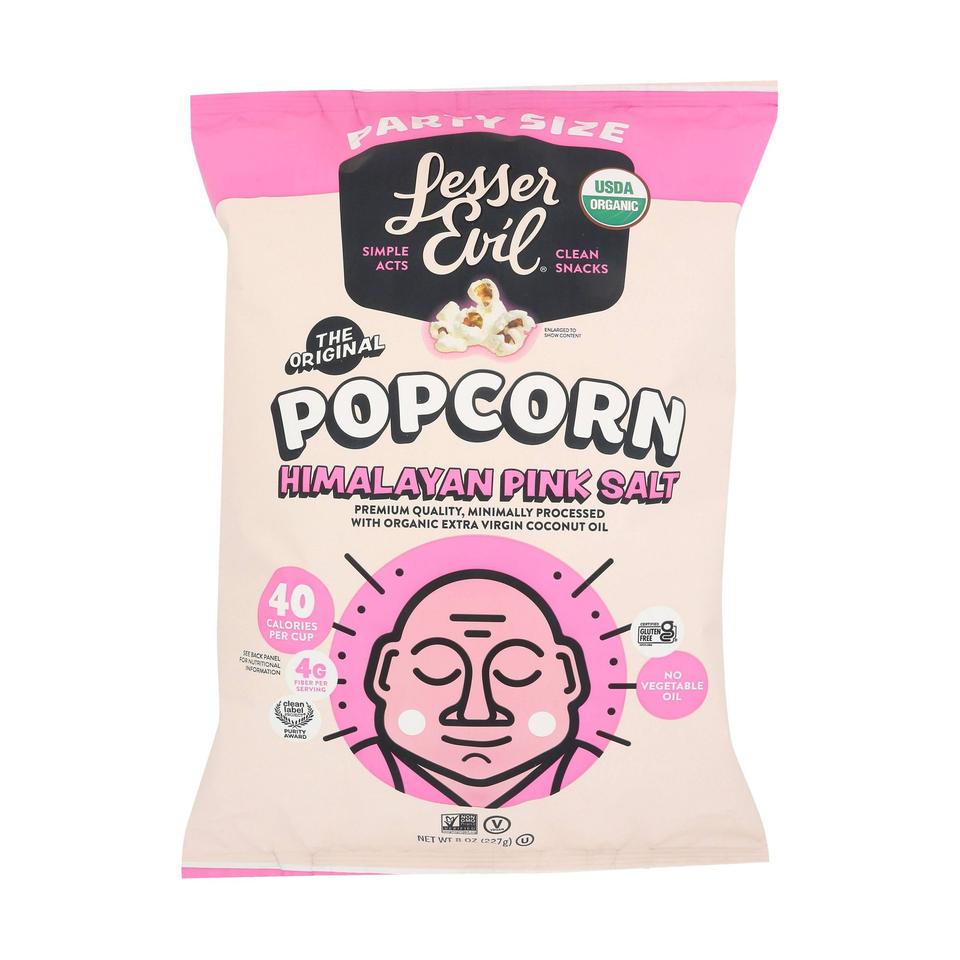


To explore the impact of branding and packaging design on consumer preferences, focus group participants were offered two brands of white-cheddar popcorn: Himalayan and SkinnyPop. The Himalayan popcorn featured a more aesthetically pleasing design with a carefully curated color palette and branding, while SkinnyPop represented a more recognizable brand with a less creative design.
0 5
To explore the impact of branding and packaging design on consumer preferences, focus group participants were offered two brands of white-cheddar popcorn: Himalayan and SkinnyPop. The Himalayan popcorn featured a more aesthetically pleasing design with a carefully curated color palette and branding, while SkinnyPop represented a more recognizable brand with a less creative design

The bags were placed in the center of the focus group table and were equidistant from all participants allowing unbiased access to both options. Participants were free to choose and consume the popcorn during the session
gs were placed in the center of the focus group nd were equidistant from all participants g unbiased access to both options. Participants e to choose and consume the popcorn during on sults suggest that the Himalayan popcorn ’ s g or packaging may have been more compelling to participants At the end of the session, 5 out of 10 SkinnyPop bags remained, compared to only 2 out of 8 Himalayan bags This disparity implies that design elements such as the Himalayan popcorn ’ s visuals, color schemes, or brand messaging may have played a significant role in attracting attention and encouraging preference
The results suggest that the Himalayan popcorn ’ s branding or packaging may have been more compelling to participants At the end of the session, 5 out of 10 SkinnyPop bags remained, compared to only 2 out of 8 Himalayan bags This disparity implies that design elements such as the Himalayan popcorn ’ s visuals, color schemes, or brand messaging may have played a significant role in attracting attention and encouraging preference
This experiment highlights how aesthetics in packaging can influence consumer choices, even when the functional qualities (e g , flavor) of the products are not explicitly compared or evaluated It further supports the hypothesis that visually appealing design can enhance a product’s perceived value and desirability
This experiment highlights how aesthetics in packaging can influence consumer choices, even when the functional qualities (e g , flavor) of the products are not explicitly compared or evaluated It further supports the hypothesis that visually appealing design can enhance a product’s perceived value and desirability
In this study, a descriptive research design using quantitative data was employed. The survey was distributed to a sample of 30 participants in a classroom setting, and additional responses were collected through a sorority forum. The total sample size for the study was 38 respondents, all of whom were female and identified as Gen Z consumers within the age range of 18-21 The survey was administered via Qualtrics and included a mix of Likert scale questions, multiple-choice questions, and short-answer responses Preliminary analysis was performed to ensure data reliability and validity, focusing on responses that were both coherent and relevant to the research objectives This approach aimed to understand how packaging design influences purchasing decisions, particularly for Gen Z consumers

According to a survey conducted among Generation Z consumers in the United States in September 2023, 77 percent said the value of products and services was a leading driving factor when they were making purchasing decisions This was followed by 73 percent of respondents citing a brand's reputation Sustainability practices were mentioned by 66 percent [1]
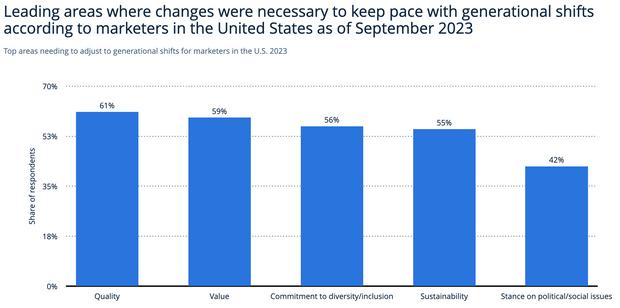
During a September 2023 survey among in-house marketing decision-makers in the United States, 61 percent of respondents said changes were necessary in the area of quality in order to keep up with generational shifts Sustainability was cited by 55 percent of the interviewees

The graph reveals that when considering the category of products respondents prioritize based on aesthetics, 81% of participants selected Beauty and Personal Care products, with Fashion and Accessories closely following at 68%. This data highlights the industries where female consumers are most influenced by product packaging and design

The graph illustrates which element of packaging most influences respondents' purchasing decisions. The survey results show that Color is the leading factor, with 10 respondents selecting it as the most influential packaging element Graphics followed closely, with 9 participants indicating that it played a key role in their decision-making process Printed information is shown to be the least influential element in consumers' impressions. This connects back to research of humans being strongly influenced by visuals, particularly colors

100% of participants believe that aesthetically pleasing packaging increases the perceived quality of a product Definitive data that aesthetically pleasing packaging increases the perception and value of a product
For Generation Z, products are expected to resonate with their identities and values, combining aesthetics with functionality. This research demonstrates that packaging plays a crucial role in shaping consumer decisions, influencing not only perceptions of quality but also emotional value.
Gen Z, more than any previous generation, seeks emotional connection in the products they buy making romanticized, aesthetically pleasing packaging a significant factor in their purchasing behavior
This research has deepened my understanding of the powerful influence of design on consumer behavior, especially for Gen Z. It highlights how brands and products are no longer just judged on utility but on the emotional and aesthetic appeal they offer. Understanding this shift is crucial not only for marketers but also for anyone interested in consumer trends and how personal identity influences purchasing decisions
With this in mind, I encourage marketers, designers, and anyone interested in consumer trends to consider the emotional aspect of product design in their strategies If you ’ re still curious about this topic and want to dive deeper, I recommend reading articles on sensory marketing and consumer psychology, or even following experts in brand strategy and design.
As consumers continue to evolve, so must the way we approach branding Consider how products in your own life have been influenced by emotional value whether it’s a beautifully packaged item you bought for the aesthetic or a product that aligns with your personal values. Now more than ever, how a product makes us feel can be just as important as its functionality
[1] Statista (2024) Millennials & Gen Z in the U S : Consumer goods and shopping behavior, 42.
[2] Maryam, N. (2022). Aesthetics of Packaging Design and Consumers Purchase Intention of Ready-To-Eat Food Products at The Point of Sale Asian Journal of Multidisciplinary Research & Review, 3(2), 153-166.
[3] Specialty Coffee Association, & Carvalho, F. (2023, October 23) Beyond freshness: How packaging color influences consumer behavior. 25(20). Specialty Coffee Association
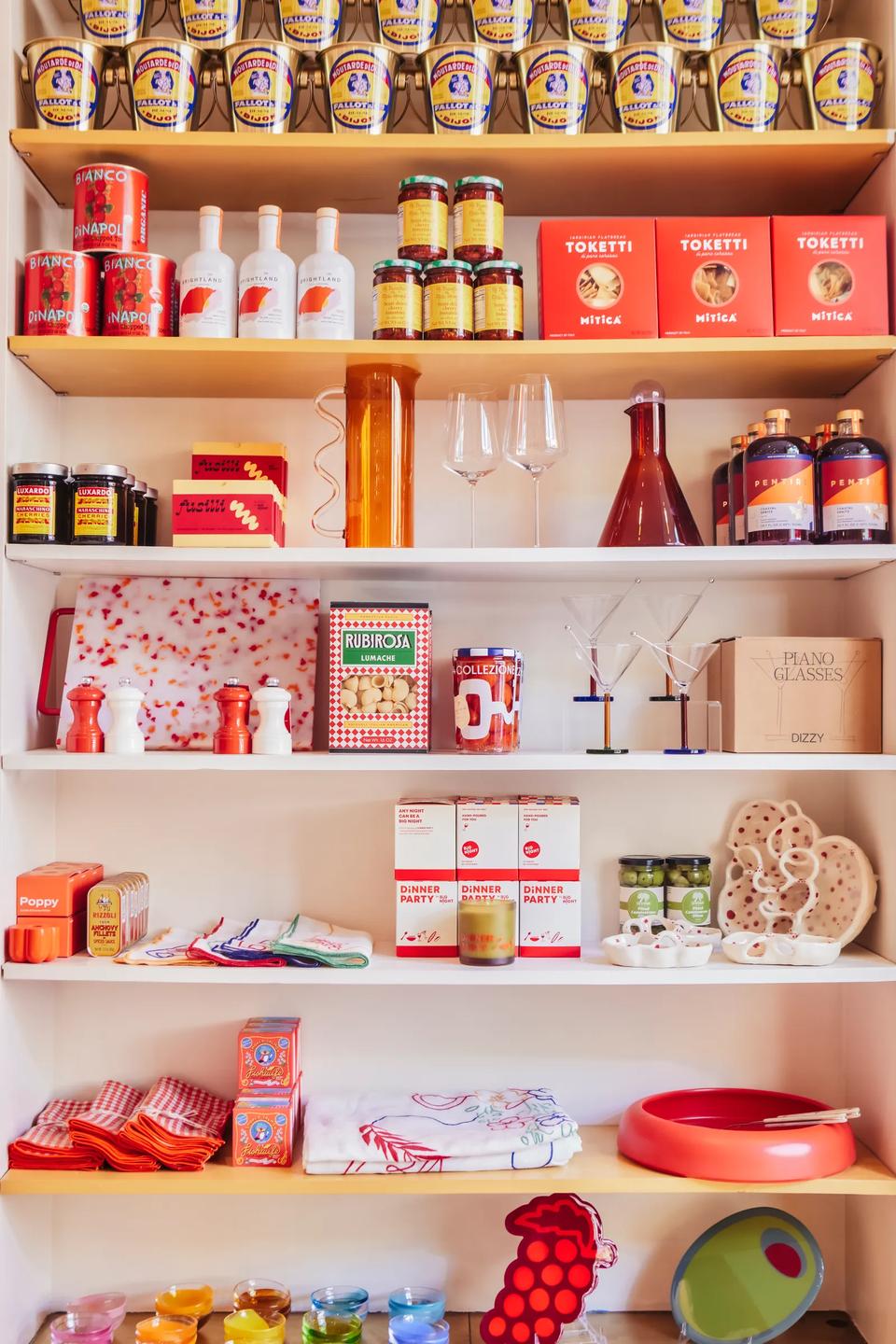
SStarting a new business is always fun and exciting, especially for something as delicious as banana bread!

By: Caroline Cavett
The topic of food packaging in advertising is an important aspect when designing eye-catching packaging. My skill is designing an appealing logo and creative packaging I know how to create a brand identity that connects with customers I also recognize the importance of eco-friendly packaging while keeping it appealing. This matters to me because my friend recently decided to turn a passion of hers, making banana bread, into a business. I had a chance to help her with a few important things: the logo, Instagram posts, and designing packaging we wanted to understand how people perceive food packaging and how it influences their purchasing decisions. When it came to the packaging of the bread, the goal was to make sure that it not only tasted great but looked appealing as well We knew we wanted to make the packaging eco-friendly, but still practical and cute Each load was wrapped in kraft paper, which is biodegradable and can be recycled, along with a custom sticker with the company ’ s logo This gave the bread a homemade touch, which we wanted to convey By using background research, conducting a focus group, and making a survey, I got an understanding and feedback from others to perform this article
The article “Influencing Eating Choices: Biological Food Cues in Advertising and Packaging Alter Trajectories of Decision Making and Behavior”, shows how the realistic imagery of food or certain colors influence subconscious preferences “One reason food marketing may be particularly successful in encouraging individuals to make poor eating decisions is that it endeavors to use human instinctual responses to best advantage by showing food products in advertisements as appetizing and ready to be eaten/being eaten. Previous research has found that advertisements that portray food in these ways create a pattern of appetitive dynamic processing and more positive attitudes toward the food products” (Bailey, 2015)
SThe article, “Smooth or rough? The impact of food packaging design on product healthiness perception” Packaging not only protects the product but also conveys product information and, more importantly, plays a marketing role The visual cues from packaging would influence consumers ’ perception and evaluation of the products “The roughness may imply a signal that the food would be healthier (Biswas, Szocs, Krishna, & Lehmann, 2014). Because a rough surface gives the impression that the product is closer to nature or less artificially processed (Labbe et al., 2013).” This shows how small elements like texture, can shape consumer ’ s perceptions of a product’s healthiness, even without talking about the product’s ingredients
Starting and excit as delicio
Starting a new busin and exciting, especia as delicious as banana
The topic of food packagin important aspect when packaging. My skill is desig and creative packaging I kno identity that connects with cu the importance of eco-frie keeping it appealing. This ma friend recently decided to t making banana bread, into a to help her with a few imp Instagram posts, and designin to understand how people p and how it influences their pu When it came to the packagin as well. We knew we wanted t kraft paper, which is the bread a homemade touch and making a survey, I got an
Starting a new business is always fun and exciting, especially for something as delicious as banana bread! The topic of food packaging in advertising is an important aspect when designing eye-catching packaging. My skill is designing an appealing logo and creative packaging I know how to create a brand identity that connects with customers. I also recognize the importance of eco-friendly packaging while keeping it appealing. This matters to me because my friend recently decided to turn a passion of hers, making banana bread, into a business I had a chance to help her with a few important things: the logo, Instagram posts, and designing packaging we wanted to understand how people perceive food packaging and how it influences their purchasing decisions When it came to the packaging of the bread, the goal wa as well. We knew we wanted to make the packaging eco kraft paper, which is biodegradable and can be recycled, the bread a homemade touch, which we wanted to con and making a survey, I got an understanding and feedba
The topic of fo important aspec packaging. My s and creative pack identity that conn the importance keeping it appeal friend recently d making banana b to help her with Instagram posts, to understand ho and how it influen When it came to t as well. We knew kraft paper, which the bread a home and making a sur
Lastly, the article “Impact of Snack Food Packaging Design Characteristics on Consumer Purchase Decisions” To attract consumers ’ attention successfully, it is essential to influence their decisions by meeting their packaging needs This study examines the interrelationship between different packaging design characteristics and their influence on consumers ’ purchase decisions Because consumers cannot directly see the actual food inside “Furthermore, when choosing a snack, consumers start to touch the packaging until purchase They cannot see authentic food; they only know food information through packaging (Chandon, 2013; Rettie & Brewer,2000).”
The article “Influencing Eatin Cues in Advertising and Pack Decision Making and Behavi imagery of food or certain co preferences. “One reason particularly successful in enco poor eating decisions is that instinctual responses to best products in advertisements as eaten/being eaten Previous advertisements that portray f pattern of appetitive dyna positive attitudes toward th 2015)
The article “Influencing Eating Choices: Biological Foo Cues in Advertising and Packaging Alter Trajectories Decision Making and Behavior”, shows how the realist imagery of food or certain colors influence subconsciou preferences. “One reason food marketing may b particularly successful in encouraging individuals to mak poor eating decisions is that it endeavors to use huma instinctual responses to best advantage by showing foo products in advertisements as appetizing and ready to b eaten/being eaten Previous research has found th advertisements that portray food in these ways create pattern of appetitive dynamic processing and mo positive attitudes toward the food products” (Baile 2015)
The article “Influ Cues in Advertisi Decision Making imagery of food preferences. “On particularly succe poor eating decis instinctual respon products in adver eaten/being eaten advertisements th pattern of appe positive attitudes 2015)
The article “Influencing Eating Choices: Biological Food Cues in Advertising and Packaging Alter Trajectories of Decision Making and Behavior”, shows how the realistic imagery of food or certain colors influences subconscious preferences “One reason food marketing may be particularly successful in encouraging individuals to make poor eating decisions is that it endeavors to use human instinctual responses to best advantage by showing food products in advertisements as appetizing and ready to be eaten/being eaten Previous research has found that advertisements that portray food in these ways create a pattern of appetitive dynamic processing and more positive attitudes toward the food products” (Bailey, 2015) Advertisements often show very appealing ways to get customers excited and crave the product.
The article, “Smooth or rough? The impact of food packaging design on product healthiness perception” Packaging not only protects the product but also conveys product information and, more importantly, plays a marketing role The visual cues from packaging would influence consumers perception and evaluation of the products “The roughness may imply a signal that the food would be healthier (Biswas, Szocs, Krishna, & Lehmann, 2014). Because a rough surface gives the impression that the product is closer to nature or less artificially processed (Labbe et al., 2013).” This shows how small elements like texture, can shape consumer ’ s perceptions of a product’s healthiness, even without talking about the product’s ingredients
Lastly, is the article “Impact of Snack Food Packaging Design Characteristics on Consumer Purchase Decisions”. To attract consumers ’ attention successfully, it is essential to influence their decisions by meeting their packaging needs This study examines the interrelationship between different packaging design characteristics and their influence on consumers ’ purchase decisions Because consumers cannot directly see the actual food inside. “Furthermore, when choosing a snack, consumers start to touch the packaging until purchase. They cannot see authentic food; they only know food information through packaging (Chandon, 2013; Rettie & Brewer,2000) ” The packaging serves as their primary source of information about the product, without actually seeing the product This makes the packaging design important in creating appeal and building trust.
When it comes to my focus group, I asked multiple questions to college students ages 18-24 This focus group showed me that packaging does matter to the consumers Female aged 18-24 stated, “I bought, like, chicken wings And it was like, the color of it was like, really bright And I was like, it could be good Let me try it ” Seeing that the packaging had fun colors made the female participant lean more towards this packaging, and decided to give it a try “It just depends on who they're trying to market towards,” (male age 18-24) This participant thought the packaging only depends on who they are trying to market to Lastly, another female participant, states a specific brand that has always stuck out to her with their packaging, Ben and Jerry’s. “I automatically think of Ben and Jerry’s, because, like, it differentiates when you're looking on a shelf, there's so much stuff, and if your eye goes into one that one direction and you're automatically, mostly, I'm gonna choose it.”
The Role of Eco-Friendly Packaging did not stick out to the participants. “I don’t really know anything about eco-friendly It doesn’t really matter to me ” , “If I pick up a box, and it happens to be ecofriendly, that’s cool, but I’m not gonna look for it”, “Like, I don't really know anything about ecofriendly. So I’m good.” (males age 18-24) Most participants were not searching for eco-friendly packaging, but if it happened to be eco-friendly, they were happy to purchase it
Bananas in store, March 1, 2024, Oxford, MS
Starting a new business is always fun and exciting, especially for something as delicious as banana bread! The topic of food packaging in advertising is an important aspect when designing eye-catching packaging. My skill is designing an appealing logo and creative packaging I know how to create a brand identity that connects with customers. I also recognize the importance of eco-friendly packaging while keeping it appealing. This matters to me because my friend recently decided to turn a passion of hers, making banana bread, into a business I had a chance to help her with a few important things: the logo, Instagram posts, and designing packaging we wanted to understand how people perceive food packaging and how it influences their purchasing decisions When it came to the packaging of the bread, the goal was to make sure that it not only tasted great but looked appealing as well. We knew we wanted to make the packaging eco-friendly, but still practical and cute. Each load was wrapped in kraft paper, which is biodegradable and can be recycled, along with a custom sticker with the company ’ s logo This gave the bread a homemade touch, which we wanted to convey. By using background research, conducting a focus group, and making a survey, I got an understanding and feedback from others to perform this article

Bread, February 17, 2024, Oxford, MS
Brand recognition and consistency were shown a lot through this focus group. The main brands that kept coming up were Ben and Jerry’s Ice Cream and Fiji Water “I automatically think Ben & Jerry’s because it differentiates when you're looking on a shelf” (male age 18-24) Bright and fun patterns on the shelf at stores this is more eye-catching to customers, making them more likely to buy it. “Ben and Jerry's, like, no one else, yes, packaging like this, if you see, like, the cows and the sky and the grass and all that” (female age 18-25) The other brand that was recognized was the Fiji water bottle. “I just want the Fiji bottle better than I want, like, one of these, just because, like, it has the pretty vacation colors” (male 18-24) The bottle does a great job of making you feel like you are somewhere tropical or on vacation Overall, eye-catching packaging catches the attention of consumers.
The article “Influencing Eating Choices: Biological Food Cues in Advertising and Packaging Alter Trajectories of Decision Making and Behavior”, shows how the realistic imagery of food or certain colors influence subconscious preferences. “One reason food marketing may be particularly successful in encouraging individuals to make poor eating decisions is that it endeavors to use human instinctual responses to best advantage by showing food products in advertisements as appetizing and ready to be eaten/being eaten Previous research has found that advertisements that portray food in these ways create a pattern of appetitive dynamic processing and more positive attitudes toward the food products” (Bailey, 2015).
By designing a survey myself, I got to get classmate’s opinions on how they feel about food packaging in advertising and how they feel about eco-friendly packaging This is important to me to get feedback to help my friend with her banana bread business. I asked a question to help get a better understanding of what customers are looking for. The first question I asked was “If you were to pay attention to food packaging, what would you find most appealing?”

The article, “Smooth or rough? The impact of food packaging design on product healthiness perception” Packaging not only protects the product but also conveys product information and, more importantly, plays a marketing role. The visual cues from packaging would influence consumers ’ perception and evaluation of the products. “The roughness may imply a signal that the food would be healthier (Biswas, Szocs, Krishna, & Lehmann, 2014). Because a rough surface gives the impression that the product is closer to nature or less artificially processed (Labbe et al , 2013) ” This shows how small elements like texture, can shape consumer ’ s perceptions of a product’s healthiness, even without talking about the product’s ingredients.
Lastly, the article “Impact of Snack Food Packaging Design Characteristics on Consumer Purchase Decisions”. To attract consumers ’ attention successfully, it is essential to influence their decisions by meeting their packaging needs This study examines the interrelationship between different packaging design characteristics and their influence on consumers ’ purchase decisions Because consumers cannot directly see the actual food inside “Furthermore, when choosing a snack, consumers start to touch the packaging until purchase. They cannot see authentic food; they only know food information through packaging (Chandon, 2013; Rettie & Brewer,2000) ”
By this chart we can see that 82% of customers are more likely to buy a product by the design and graphics
Consumers are often attracted to the visual appeal of the brand, before even considering taste or ingredients A strong graphic design is often used to establish a brand’s identity A recognizable logo, consistent color scheme, and familiar design elements can trigger a sense of familiarity 18% of customers find the material most appealing

SThe graph above was the result of the question: “Do you strickly buy sustainable packaging?” Customers are not buying sustainable products for a variety of reasons Not all consumers are aware of the environmental impact of packaging or the benefits Sustainable packaging often costs more to produce the materials and processing involved This cost can be passed on to the consumer, making the product more expensive than other alternatives.
Starting a new business is always fun and exciting, especially for something as delicious as banana bread! The topic of food packaging in advertising is an important aspect when designing eye-catching packaging My skill is designing an appealing logo and creative packaging. I know how to create a brand identity that connects with customers I also recognize the importance of eco-friendly packaging while keeping it appealing This matters to me because my friend recently decided to turn a passion of hers, making banana bread, into a business I had a chance to help her with a few important things: the logo, Instagram posts, and designing packaging. we wanted to understand how people perceive food packaging and how it influences their purchasing decisions. When it came to the packaging of the bread, the goal was to make sure that it not only tasted great but looked appealing as well We knew we wanted to make the packaging eco-friendly, but still practical and cute Each load was wrapped in kraft paper, which is biodegradable and can be recycled, along with a custom sticker with the company ’ s logo. This gave the bread a homemade touch, which we wanted to convey By using background research, conducting a focus group, and making a survey, I got an understanding and feedback from others to perform this article.
The article “Influencing Eating Choices: Biological Food Cues in Advertising and Packaging Alter Trajectories of Decision Making and Behavior”, shows how the realistic imagery of food or certain colors influence subconscious preferences “One reason food marketing may be particularly successful in encouraging individuals to make poor eating decisions is that it endeavors to use human instinctual responses to best advantage by showing food products in advertisements as appetizing and ready to be eaten/being eaten. Previous research has found that advertisements that portray food in these ways create a pattern of appetitive dynamic processing and more positive attitudes toward the food products” (Bailey, 2015)
This project taught me how important the aesthetic of food packaging is in influencing customer’s decisions. From background research to focus groups and surveys, I learned that packaging goes far beyond just protecting the product The packaging contributes to how others perceive the brand For my friend’s banana bread business, we used this knowledge to keep our eco-friendly packaging while keeping it appealing. While eco-friendly is not on the top of everyone ’ s radar, this showed me that designs and graphics played a huge role in getting customer’s attention Helping my friend turn her passion into a business was a rewarding experience, and I'm excited to see how her thoughtful package will succeed. `As a reader, I aspire you to try to be more eco-friendly. I want to challenge you to look for products with biodegradable, recyclable, or no packaging

Bailey, R. L. (2016). Influencing eating choices: Biological food cues in advertising and packaging alter trajectories of decision making and behavior Health Communication, 32(10), 1183–1191 https://doi org/10 1080/10410236 2016 1214222
The article, “Smooth or rough? The impact of food packaging design on product healthiness perception” Packaging not only protects the product but also conveys product information and, more importantly, plays a marketing role The visual cues from packaging would influence consumers ’ perception and evaluation of the products “The roughness may imply a signal that the food would be healthier (Biswas, Szocs, Krishna, & Lehmann, 2014) Because a rough surface gives the impression that the product is closer to nature or less artificially processed (Labbe et al , 2013) ” This shows how small elements like texture, can shape consumer ’ s perceptions of a product’s healthiness, even without talking about the product’s ingredients
Peng, M., Liang, F., Yu, L., & Huang, H. (2024). Shibboleth Authentication Request. Oclc.org. https://www-sciencedirect-com.umiss.idm.oclc.org/science/article/pii/S0950329323001647
Lastly, the article “Impact of Snack Food Packaging Design Characteristics on Consumer Purchase Decisions” To attract consumers ’ attention successfully, it is essential to influence their decisions by meeting their packaging needs. This study examines the interrelationship between different packaging design characteristics and their influence on consumers ’ purchase decisions. Because consumers cannot directly see the actual food inside. “Furthermore, when choosing a snack, consumers start to touch the packaging until purchase They cannot see authentic food; they only know food information through packaging (Chandon, 2013; Rettie & Brewer,2000).”
Wang, H., Aziz, A., & Liu, C. (2023). Impact of Snack Food Packaging Design Characteristics on Consumer Purchase Decisions. SAGE Open, 13(2), 215824402311671-215824402311671. https://doi.org/10.1177/21582440231167109

By: Ryan Roylance
RYAN ROYLANCE SENIOR AT THE UNIVERSITY OF MISSISSIPPI
Just think of your favorite influencers jetting off on allexpenses-paid trips and unboxing endless brand freebies… because nothing says ‘RELATABLE’ quite like a private island getaway and a suitcase full of designer products! The real question is, just how are all expense paid vacays and giveaways affecting the brand, and the influencers enjoying them?


As an avid scroller, if I do of my time is spent watc videos of A-list influence limitless items brands h gush about just how awe , but I find myself frequently wondering, just how honest are they being? I mean, if I was shipped a box of every shade, color, and line of a brand, I am pretty sure I would love it too! When I found myself beginning to ask the question to others about how they are affected by these choices brands make, I decided to do some research and get to the bottom of it Through personal research, focus group discussion, and a survey, I sought to find out just how much does marketing with influencers, brand trips, and free items positively benefit the company?
SENIOR AT THE UNIVERSITY OF MISSISSIPPI
Just think of your favorite influencers jetting off on allexpenses-paid trips and unboxing endless brand freebies… because nothing says
Before starting into my focus group and survey, I decided to dig deeper first with some personal research As someone who spends more time than I’d like to admit on social media, I thought I had a pretty good sense of the influencer world and how giveaways and influencer promotion affect audiences and the brand But I wanted to take things a step further and move beyond just social media impressions So I decided to start with research to expand on the knowledge I had gathered from my daily scrolls Here is what I uncovered about influencers, the influencer market, and how giveaways are shaping the way we perceive influencers and whether it’s all adding up to more trust or more skepticism.
If you were to ask me how much the influencer market is worth, I do not think I would even have a toe in the pond of the true amount with my guess That being said, I will give you some time to think Now, according to the University of Iowa Press in their article An Influencer's World : A Behind-The-Scenes Look at Social Media Influencers and Creators, “Influencers are part of a $15 billion industry it is projected to reach $85 billion by 2028.” The amount of money within this industry truly shows just how much control these influencers have
When I personally think of the word influencer, my definition would be someone who holds the ability to sway or form an opinion, positive or negative To me, it's more about how they make me feel and what they represent In a street interview conducted by VOX London, one consumer expressed this feeling, saying, “If I see an ad from an influencer who I know, I will buy it.” This shows how influencers today are more than just marketing tools, they are relatable figures constantly refining their brand in each video
The decline of an influencer and their relationship with their audience can start when they begin to feel like a billboard to the consumer
Nicole Wagner writes in Power of Social Media Influencers: Why It Works, “There’s a fine line when it comes to advertising products and services to your audience People often feel annoyed when they’re trying to read through a blog or email and all they find are advertisements ”
An influencer can be extremely successful if they show genuine opinions, genuine products they use, and honesty with their audience Wagner continues forward by saying, “when an influencer promotes a product, most users don’t view it as a corporate advertisement despite the fact influencers are required to be transparent about the relationships that they have with brands when promoting a product. They see it more as an endorsement of a product from someone that they trust ” When an influencer is given the platform to speak on a product, the consumer is then seeing a real person using the real product, rather than seeing a stale street advertisement or a picture of a beautiful girl next to a “trustworthy” skin cream. Ultimately, influencers hold a unique position in the marketing world where they can shape opinions, promote products, and create personal connections with their followers But with that power comes responsibility. As much as audiences crave authenticity, there’s a fine line between genuine endorsements and overt commercialization.
The question becomes: Can influencers maintain their credibility when they’re constantly surrounded by lucrative brand deals and luxury experiences?
To explore this dynamic further, I turned to my focus group research Specifically, I focused on three key areas: the impact influencers have on consumer behavior, how brand trips shape perceptions of authenticity, and whether these high-end experiences create a sense of commercialization that ultimately undermines trust Here's what I discovered about the balance influencers must maintain between authenticity and commercialization in their content
When asking questions focusing on the perception of influencers and brands on my fellow consumers and classmates, the majority of them agreed that one of the most important factors when it comes to influencers and brands, is their authenticity
We live in a world now where you can get any amount or kind of information with the snap of a finger, whether it be true or false, and we have all kinds of information being funneled at us at all times
Having a person to watch and follow who is true to themselves and honest with their information makes them way more likable. Within my focus group, I had eight participants, all female upperclassmen students at the University of Mississippi One 20 year old female of the focus group stated that,
Audiences can sense when content is genuine versus when it's purely promotional. Authenticity in influencer content builds long-term trust, while overly commercialized posts feel forced and less impactful
When you are able to trust an influencer and know their content, the information and ad being presented to you feels way more genuine Another 21 year old female participant said, “Brands that allow influencers creative freedom often see better results when influencers can speak in their own voice, the content resonates more deeply with followers." The key component behind all of these thoughts is the truth People say that trust takes time and when you are given that time to develop trust through an influencer it makes you way more likely to purchase a product they promote Further developing this point, this argument was made by a 20 year old female participant that,
Influencers who prioritize authenticity over constant brand deals foster loyal communities. Followers want to feel like they’re getting real insights, not just another ad.
These insights highlight how crucial authenticity is to an influencer’s reputation, as it can be the deciding factor in fostering trust and long-term loyalty among followers
Building on my focus group, I conducted a survey to explore more on influencers and social media usage. This survey allowed me to gather quantitative data on how audiences perceive influencers' authenticity, the appeal of brand partnerships, and the impact of promotional content on trust The findings show perspectives on how much influence social media personalities have over purchasing decisions, how well followers perceive sponsored content, and the level of transparency audiences expect in influencer-brand collaborations.
Before we dive into the statistics and numbers revealed by my survey, I want to take a moment to break down the sampling frame to provide proper context. The group of individuals who participated in this survey consisted entirely of upperclassmen women currently attending the University of Mississippi To begin, I asked these participants about their social media habits, specifically how much time they spend online daily This question was designed to gauge just how chronically online this demographic is The responses were telling: 50% of the participants indicated that they spend anywhere from three to five hours per day on social media platforms, highlighting the significant role that these digital spaces play in their daily lives
How much time per day do you spend on social media?
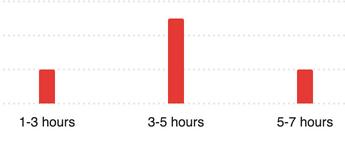
Seeing as these participants are more than familiar with social media, I wanted to dive further into my topic by asking specifically how familiar these participants were with influencers, more than just their time on social media

How familiar are you with influencer marketing?
Majority, to all participants, responded that they were extremely familiar with influencer marketing Seeing as it is a major tool used now by brands to show off their products, I am not necessarily surprised by these responses, especially within this demographic However, my most interesting and curious section of my survey came into play when I asked the question “What factors would make you less likely to trust an influencer promoting a brand?”
What factors would make you less likely to trust an influencer promoting a brand?
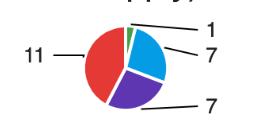
I have found that the main reasons why people are not trusting within an influencer is mainly lack of transparency, however, aligning with values and overpromotion are not far behind It is hard to balance, because I truly think an influencer would be all the more successful if they were to just integrate the item into their everyday lives, rather than make a big show of promoting it with #sponsored all over your screen. What do you think?
Baker, Caroline, and Don Baker An Influencer's World : A BehindThe-Scenes Look at Social Media Influencers and Creators, University of Iowa Press, 2023. ProQuest Ebook Central, https://ebookcentral proquest com/lib/olemiss/detail action? docID=7188596.
Lee, J A , Sudarshan, S , Sussman, K L , Bright, L F , & Eastin, M S (2021). Why are consumers following social media influencers on Instagram? Exploration of consumers’ motives for following influencers and the role of materialism. International Journal of Advertising, 41(1), 78–100. https://doiorg umiss idm oclc org/10 1080/02650487 2021 1964226
Wagner, Nicole “Power of Social Media Influencers: Why It Works ” Stevens & Tate Marketing, Nicole Wagner https://stevenstate.com/wp-content/uploads/STLogo-websml-biggerAM.png, 27 Nov 2023, stevens-tate com/articles/the-power-of-social-mediainfluencers-why-it-works/.
Let’s bring this all home, because unlike those influencers on brand trips, I didn’t get flown out to write this My research highlights how strategies like giveaways and brand-sponsored vacations impact our perceptions of influencer authenticity. From survey results to focus group discussions, it’s clear these tactics are a double-edged sword: they grab attention and drive engagement but sometimes leave followers wondering what’s genuine and what’s just part of the deal. However, positives or negatives aside, I do not blame these brands for taking part in influencer marketing
The International Journal of Advertising” found that “ recent reports suggest that businesses are making $5.20 for every $1 spent on influencer marketing”. Ultimately, while the authenticity of influencer marketing may be up for debate, the undeniable return on investment speaks for itself.
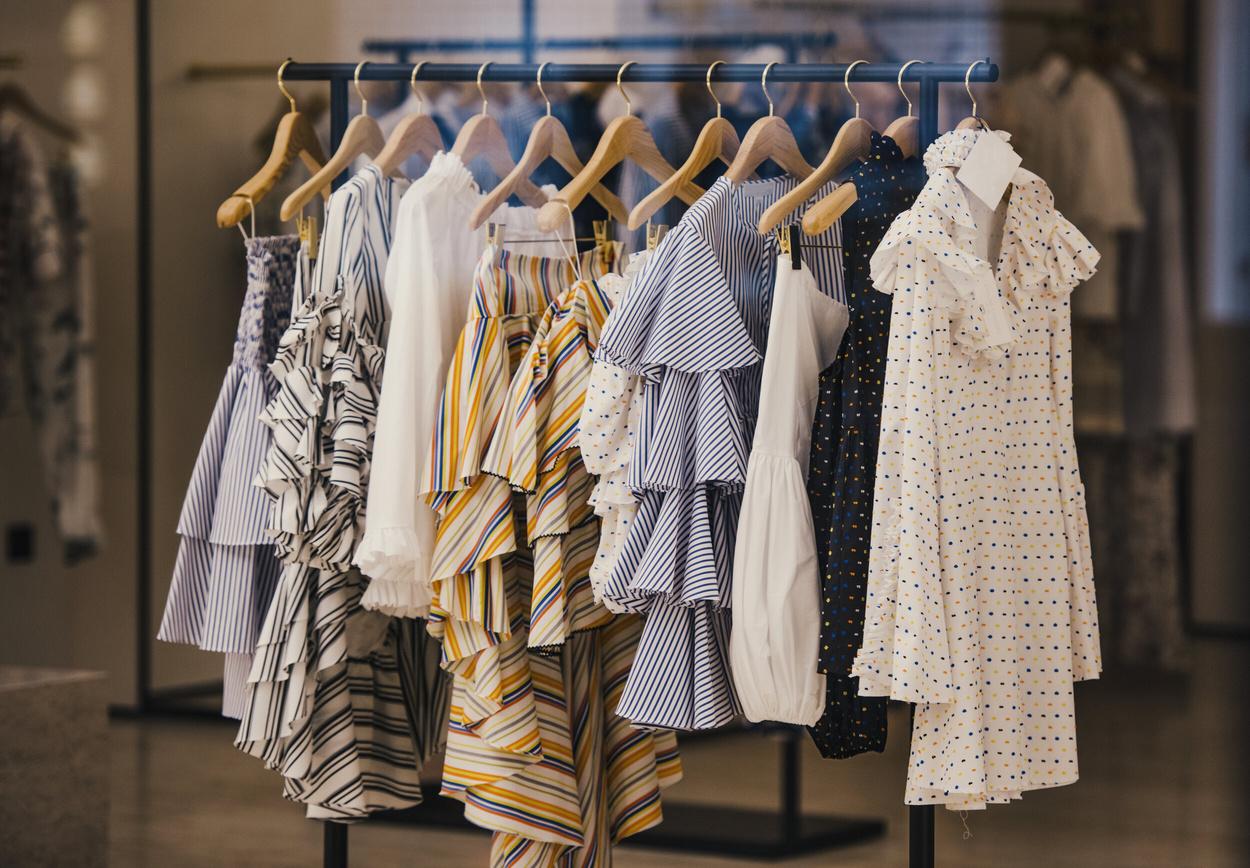
By: Ainsley Counce
Have you ever been scrolling on social media and found yourself stumbling upon a new trend with each swipe? In a world where we are constantly bombarded with ads and influencer marketing, it can feel overwhelming to keep up with all the latest trends. In a world where TikTok videos and Instagram influencers dictate what's 'in' and 'out' at lightning speed, fast fashion has become a race against time and social media is firmly in the driver’s seat But how is this digital whirlwind shaping consumer habits, brand loyalty, and the future of fashion?"
Fashion has always been a topic of interest in my life. From everyday clothing, to runway looks, to broadway costumes, I’ve always found myself intrigued by the world of fashion As a current IMC student at the University of Mississippi, I was also interested to learn about the world of influencer marketing and social media’s impact This led to me to question if the two were intertwined, do they impact one another, and how do they correlate. For these reasons, I chose the topic of social media’s impact on fashion marketing for my research class
I

I went through a 3 step process. The process began with background research from academic journals. Next, I conducted a focus group with my fellow classmates. Finally, I sent out a survey to my peers The results led me to a deeper understanding of fashion marketing Counce

Throughout my background research process, I found that research confirms that social media's impact on consumer preferences is profound. According to Emma (2024), “Findings indicate that social media significantly influences consumer preferences and purchasing decisions in fashion.” This influence is most apparent in the success of ultra-fast fashion brands like Shein and Fashion Nova, which capitalize on viral trends and the desire for immediacy This led me to think about how fast fashion has impacted the longevity of clothes in society As noted by Priedel (2024), “Ultra-fast fashion encourages the purchase and wearing of cheap clothes…
The fashion industry has been dramatically reshaped by the rise of social media, which now serves as a critical driver of trends, marketing strategies, and consumer behavior. Platforms like TikTok, Instagram, and Pinterest have introduced an unprecedented speed to the trend cycle, enabling consumers to instantly discover, embrace, and discard styles. This shift has created both opportunities and challenges for brands and consumers alike
only to discard them after a few wears, ” highlighting the role of social platforms in driving overconsumption But how does this impact businesses? For businesses, understanding and leveraging social media is vital to remaining competitive in the market. “Exploring how social media is impacting business and noting its significance is crucial for a company to stay at the forefront of competition.”
(McCarthy, 2013) By integrating social media platforms into their strategies, brands can target specific demographics, increase engagement, and convert trends into sales This allows them to reach a diverse global audience at their fingertips.
For example, the visual nature of Pinterest and Instagram allows businesses to connect directly with consumers, often providing links to purchase items with just one click. This not only allows them to reach their target audience, but also to be present in spaces that people scroll on for entertainment. In this rapidly evolving landscape, social media has redefined the relationship between fashion brands and consumers. While this offers exciting opportunities, it also raises concerns about sustainability and over consumption. However, by balancing these factors, businesses can harness social media's power while addressing the challenges it presents.

Consumers often grapple with the trade-off between affordability and quality, a dilemma exacerbated by fast fashion's rise. In discussing this, one participant noted, “I prefer to own those things and buy them new 'cause I know I'm gonna wear them all the time,” emphasizing the importance of perceived durability in purchasing decisions. However, impulsive buying behavior, driven by discounts and trends, can frequently lead to regret. Another participant admitted, “I definitely have bought things in the past just because it was a sale then it comes back and it wasn’t what I was expecting ”
In order to dive deeper into this topic, I conducted a focus group of 18-25 year olds at the University of Mississippi. The focus group provided valuable insights into how social media influences consumer behavior in the fast fashion industry Participants revealed how platforms like TikTok and Instagram shape their purchasing habits, influence brand loyalty, and alter perceptions of quality. These findings emphasize the importance of businesses understanding the digital landscape in the rapidly growing and fast-paced fashion market.
These habits highlight the need for businesses to balance trend responsiveness with sustainable practices to build long-term trust with consumers. If people are constantly changing their wardrobe, the trends will become unsustainable and over done. Consumers can feel overwhelmed with the constantly changing trends
One aspect of my initial research that the focus group confirmed was how social media's influence on consumer preferences cannot be underestimated. The focus group discussed that platforms like TikTok and Instagram are powerful tools for disseminating trends and shaping perceptions
When asked about social media’s presence in the marketing realm, one participant stated, “Social media has changed the way we are able to keep up with trends,” demonstrating the speed at which digital platforms drive consumer engagement. Moreover, another participant shared, “If I see multiple people posting it on TikTok, I’m constantly seeing it versus like a billboard that I might not remember two seconds later,” which underscores the repetitive and immersive nature of social media marketing. For brands, this highlights the importance of leveraging user-generated content and influencer partnerships to create authentic connections

While social media helps brands gain visibility, it also challenges their ability to build loyalty. When asked about this topic, participants expressed mixed feelings about visible logos and branding. One participant shared, “I don’t like big logos; I’d rather buy something for quality than to show off a brand.” However, the trustworthiness of influencers and peers often has a more significant impact A participant noted, “I don’t trust sponsored posts because influencers are getting paid, but I trust someone on campus wearing something I can see in real life,” this highlights the importance of authentic, localized marketing strategies.
In order to dive deeper into this topic, I conducted a focus group of 18-25 year olds at the University of Mississippi The focus group provided valuable insights into how social media influences consumer behavior in the fast fashion industry. Participants revealed how platforms like TikTok and Instagram shape their purchasing habits, influence brand loyalty, and alter perceptions of quality These findings emphasize the importance of businesses understanding the digital landscape in the rapidly growing and fast-paced fashion market
It also showcases how the younger generations value authenticity over sponsored content. Social media has further empowered Gen Z to hold brands accountable, not just for product quality but also for their values and actions. Participants noted that they would reconsider their loyalty to a brand if it engaged in practices they found objectionable, such as poor treatment of workers or environmental harm For brands, this highlights the importance of cultivating an authentic presence both online and offline. Building loyalty among social media requires more than just trendy products it demands transparency, ethical practices, and relatable messaging.
Social media campaigns should focus on storytelling, user-generated content, and partnerships with microinfluencers who genuinely align with the brand’s values. By fostering these authentic connections, brands can earn the trust and loyalty of a generation that values purpose and substance over style alone Overall, these findings demonstrate that while social media drives fast fashion trends and purchases, consumers are increasingly aware of quality, authenticity, and sustainability. Brands that align their digital strategies with these values will be better positioned to foster long-term loyalty and success in an ever-changing market.
In a survey polling social media and fashion trends, respondents highlighted distinct approaches employed by trendy and luxury fashion brands A significant proportion (28.57%) identified that trendy brands prioritize frequent, fast-paced posts showcasing new arrivals. In contrast, luxury brands were noted for their emphasis on exclusivity and storytelling (also 28.57%). Another notable trend was the heavy reliance of trendy brands on influencer partnerships (14.29%), compared to luxury brands' focus on limited releases to maintain brand prestige (28.57%). These findings suggest that trendy brands thrive on immediacy and influencer-driven visibility, while luxury brands leverage exclusivity and high production value to reinforce their market positioning
A survey was conducted of 18-25 year old students at the University of Mississippi. The survey data provided insights into the role of social media in shaping consumer behavior and preferences in the fashion industry. Three key areas were explored: differences in social media strategies for trendy vs. luxury fashion brands, the influence of social media influencers on purchasing decisions, and the preferred platforms for following fashion content

When asked about the extent of social media influencers' impact on purchasing decisions, half of the respondents (50%) reported a moderate influence. Interestingly, the remaining responses were split evenly, with 25% stating influencers have a significant impact and 25% saying they have no influence at all. This indicates that while influencers are pivotal for a portion of the audience, there remains a segment that remains relatively unaffected, possibly due to other factors like brand loyalty or personal shopping habits

From the survey results, Instagram and TikTok emerged as the most popular platforms for following fashion-related content, each capturing 33% of responses Pinterest followed with 22%, and Twitter had the least engagement at 11% The dominance of Instagram and TikTok underscores the importance of visually-driven and short-form content in engaging fashion audiences This demonstrates the importance of brands having an online presence and how short videos can effect fashion trends. These platforms' user-friendly formats and high engagement rates make them ideal for showcasing fashion trends and influencer collaborations Demonstrating a collaboration with influencer marketing.
A survey was conducted of 18-25 year old students at the University of Mississippi. The survey data provided insights into the role of social media in shaping consumer behavior and preferences in the fashion industry Three key areas were explored: differences in social media strategies for trendy vs. luxury fashion brands, the influence of social media influencers on purchasing decisions, and the preferred platforms for following fashion content.

Overall, the survey findings emphasize the need for brands to tailor their social media strategies based on their positioning. Trendy brands should continue leveraging fast-paced content and influencer partnerships to maintain visibility and relevance. Conversely, luxury brands can benefit from enhancing their storytelling and exclusivity while strategically engaging on highvisibility platforms like Instagram and TikTok. Furthermore, with a significant portion of consumers influenced by social media, influencer partnerships remain an essential tactic for brands aiming to sway purchasing decisions. By understanding and addressing these dynamics, fashion brands can refine their digital strategies to better connect with their target audiences and foster brand loyalty in a competitive market It can also give brands a competitive advantage in the growing influencer marketing digital age.

For fashion brands looking to thrive in this digital age, it’s crucial to understand the shifting dynamics of consumer behavior To stay ahead of the curve, prioritize building authentic relationships with your audience through social media Focus on creating high-quality, sustainable products that resonate with your customers’ values, and partner with influencers who genuinely align with your brand Embrace transparency in your practices and adapt your marketing strategies to foster long-term loyalty. Now is the time to evolve beyond fast fashion and lead the charge toward a more conscious, connected, and sustainable fashion future
In conclusion, the findings from the focus group and survey provided critical insights into how social media shapes consumer behavior and brand perceptions in the fast fashion industry. Consumers, particularly Generation Z, are heavily influenced by digital platforms like TikTok and Instagram, which rapidly spread trends and drive impulse purchasing Social media’s ability to shape realtime fashion trends has led to an increased focus on quick, affordable fashion choices. However, this has created a paradox of fast consumption and the constant desire for newness, often resulting in buyer’s remorse when the thrill of a purchase fades.
This has also led to a normalization of over consumption and increasingly unsustainable fashion practices.
The role of authenticity in brand loyalty has become more pronounced, with consumers prioritizing quality over conspicuous branding. Social media influencers play a key role, but their influence is most effective when they align with the consumer’s values and personal style. The findings indicate that while social media is a powerful tool for brands, it also requires careful navigation Brands that leverage authenticity, transparency, and sustainable practices are more likely to cultivate lasting loyalty from the increasingly discerning
consumer base Ultimately, these insights underscore the growing complexity of the fast fashion market. Brands must adapt to the rapidly evolving landscape of social media while addressing consumers' desire for both trendiness and ethical consumption Moving forward, businesses in the fashion industry will need to balance the fast-paced nature of digital trends with longterm strategies focused on quality, sustainability, and genuine connections with their audience. Social media has played an integral part in the fashion marketing economy and will continue to be a staple in trends and ads for the years to come
As a lifelong superfan of Taylor Swift, I was thrilled to see her appear on my TV during NFL games. Watching her do something new and be more open than she ever has in the past was so exciting, but not everyone shared that same feeling.
AAAs a lifelong superfan of Taylor Swift, I was thrilled to see her appear on my TV during NFL games Watching her do something new and be more open than she ever has in the past was so exciting, but not everyone shared that same feeling.
By: Kylie Britton
s a lifelong superfan of Taylor Swift, I was thrilled to see her appear on my TV during NFL games. Watching her do something new and be more open than she ever has in the past was so exciting, but not everyone shared that same feeling.
s a lifelong superfan of Taylor Swift, I was thrilled to see her appear on my TV during NFL games Watching her do something new and be more open than she ever has in the past was so exciting, but not everyone shared that same feeling.
s a lifelong superfan of Taylor Swift, I was thrilled to see her appear on my TV during NFL games. Watching her do something new and be more open than she ever has in the past was so exciting, but not everyone shared that same feeling.
What struck me most wasn’t just her presence at the game– it was the overwhelming reaction from NFL fans and the media While a majority of viewers were quick to analyze and critique her presence on the screen, I began to wonder why all this was happening The more I thought about it, the more I realized this situation raised important questions about privacy, celebrity culture, and the ethics of marketing From my perspective, Taylor Swift didn’t ask to be featured in those broadcasts but the NFL and media outlets capitalized on her fame for commercial gain. This realization got me thinking deeply about the balance between the right to privacy and effective marketing
What struck me most wasn’t just her presence at the game– it was the overwhelming reaction from NFL fans and the media. While a majority of viewers were quick to analyze and critique her presence on the screen, I began to wonder why all this was happening. The more I thought about it, the more I realized this situation raised important questions about privacy, celebrity culture, and the ethics of marketing From my perspective, Taylor Swift didn’t ask to be featured in those broadcasts but the NFL and media outlets capitalized on her fame for commercial gain This realization got me thinking deeply about the balance between the right to privacy and effective marketing
This article will explore the delicate balance between privacy and ethics in the realm of Integrated Marketing Communications Conducting research, a focus group and a survey resulted in numerous insights into the world of privacy and ethics
Examining the ethical complexities of celebrity privacy and commercial interests by focusing on Taylor Swift’s media coverage in the NFL highlights many ideas and beliefs that will be discussed in this article.
What struck me most wasn’t just her presence at the game– it was the overwhelming reaction from NFL fans and the media While a majority of viewers were quick to analyze and critique her presence on the screen, I began to wonder why all this was happening The more I thought about it, the more I realized this situation raised important questions about privacy, celebrity culture, and the ethics of marketing From my perspective, Taylor Swift didn’t ask to be featured in those broadcasts but the NFL and media outlets capitalized on her fame for commercial gain. This realization got me thinking deeply about the balance between the right to privacy and effective marketing.
What struck me most wasn’t just her presence at the game– it was the overwhelming reaction from NFL fans and the media. While a majority of viewers were quick to analyze and critique her presence on the screen, I began to wonder why all this was happening. The more I thought about it, the more I realized this situation raised important questions about privacy, celebrity culture, and the ethics of marketing From my perspective, Taylor Swift didn’t ask to be featured in those broadcasts but the NFL and media outlets capitalized on her fame for commercial gain This realization got me thinking deeply about the balance between the right to privacy and effective marketing
What struck me most wasn’t just her presence at the game– it was the overwhelming reaction from NFL fans and the media While a majority of viewers were quick to analyze and critique her presence on the screen, I began to wonder why all this was happening The more I thought about it, the more I realized this situation raised important questions about privacy, celebrity culture, and the ethics of marketing From my perspective, Taylor Swift didn’t ask to be featured in those broadcasts but the NFL and media outlets capitalized on her fame for commercial gain. This realization got me thinking deeply about the balance between the right to privacy and effective marketing
This article will explore the delicate balance between privacy and ethics in the realm of Integrated Marketing Communications. Conducting research, a focus group and a survey resulted in numerous insights into the world of privacy and ethics. Examining the ethical complexities of celebrity privacy and commercial interests by focusing on Taylor Swift’s media coverage in the NFL highlights many ideas and beliefs that will be discussed in this article.
This article will explore the delicate balance between privacy and ethics in the realm of Integrated Marketing Communications Conducting research, a focus group and a survey resulted in numerous insights into the world of privacy and ethics Examining the ethical complexities of celebrity privacy and commercial interests by focusing on Taylor Swift’s media coverage in the NFL highlights many ideas and beliefs that will be discussed in this article
This article will explore the delicate balance between privacy and ethics in the realm of Integrated Marketing Communications Conducting research, a focus group and a survey resulted in numerous insights into the world of privacy and ethics. Examining the ethical complexities of celebrity privacy and commercial interests by focusing on Taylor Swift’s media coverage in the NFL highlights many ideas and beliefs that will be discussed in this article.
This article will explore the delicate balance between privacy and ethics in the realm of Integrated Marketing Communications Conducting research, a focus group and a survey resulted in numerous insights into the world of privacy and ethics
Examining the ethical complexities of celebrity privacy and commercial interests by focusing on Taylor Swift’s media coverage in the NFL highlights many ideas and beliefs that will be discussed in this article.
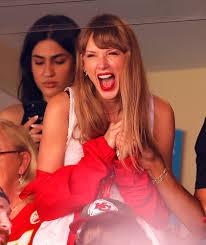
Privacy is a fundamental human right, yet it is often overlooked in today’s society. As said by legal scholar Neil Richards, “Unlike security or innovation, though, privacy often gets marginalized, seen as a backward or oldfashioned value, or maybe just something vague and misunderstood” (Richards 5) In the age of social media we currently live in , this observation has certainly been proven true. For celebrities, privacy becomes even more confusing and controversial.
Privacy is a fundamental human right, yet it is often overlooked in today’s society As said by legal scholar Neil Richards, “Unlike security or innovation, though, privacy often gets marginalized, seen as a backward or oldfashioned value, or maybe just something vague and misunderstood” (Richards 5). In the age of social media we currently live in , this observation has certainly been proven true. For celebrities, privacy becomes even more confusing and controversial
Privacy is a fundamental human right, yet it is often overlooked in today’s society As said by legal scholar Neil Richards, “Unlike security or innovation, though, privacy often gets marginalized, seen as a backward or oldfashioned value, or maybe just something vague and misunderstood” (Richards 5) In the age of social media we currently live in , this observation has certainly been proven true For celebrities, privacy becomes even more confusing and controversial.
Privacy is a fundamental human right, yet it is often overlooked in today’s society. As said by legal scholar Neil Richards, “Unlike security or innovation, though, privacy often gets marginalized, seen as a backward or oldfashioned value, or maybe just something vague and misunderstood” (Richards 5). In the age of social media we currently live in , this observation has certainly been proven true. For celebrities, privacy becomes even more confusing and controversial
Privacy is a fundamental human right, yet it is often overlooked in today’s society. As said by legal scholar Neil Richards, “Unlike security or innovation, though, privacy often gets marginalized, seen as a backward or oldfashioned value, or maybe just something vague and misunderstood” (Richards 5) In the age of social media we currently live in , this observation has certainly been proven true. For celebrities, privacy becomes even more confusing and controversial.
2024
ACelebrity culture presents an extremely challenging situation when it comes to privacy. While celebrities choose to share certain aspects of their lives with their audiences, they also have the right to keep aspects private In a paper on consumer fandom, Patterson states, “Celebrities have a right to privacy for things that are not meant for public consumption, even though they may voluntarily share portions of their lives with the public through their work, interviews, and social media” (Patterson 3) For example, Taylor Swift may choose to share aspects of her life through appearances and her music, but does that mean we as the public have the right to invade her personal space when she is existing in public as we all do?
s a lifelong superfan of Taylor Swift, I was thrilled to see her appear on my TV during NFL games. Watching her do something new and be more open than she ever has in the past was so exciting, but not everyone shared that same feeling.
The best example of the unclear notion of celebrity privacy comes from Swift herself, who states, “‘I don’t know how they know what suite I’m in,’ she says. ‘There’s a camera, like, a half-mile away, and you don’t know where it is, and you have no idea when the camera is putting you in the broadcast, so I don’t know if I’m being shown 17 times or once ’” (Lansky). It is evident that Swift is uncomfortable with the amount of attention she is receiving simply from attending an NFL game, yet they continue to broadcast her to generate views and revenue, blurring the line between the ethics of effective marketing and respecting privacy.
What struck me most wasn’t just her presence at the game– it was the overwhelming reaction from NFL fans and the media While a majority of viewers were quick to analyze and critique her presence on the screen, I began to wonder why all this was happening
In today’s media driven society, the balance between respecting privacy and exploiting it for commercial gain has become an ongoing ethical challenge I conducted a focus group in effort to gain insights on three main themes: the right to privacy, media ethics and exploitation, and evolving ethical standards.
The more I thought about it, the more I realized this situation raised important questions about privacy, celebrity culture, and the ethics of marketing From my perspective, Taylor Swift didn’t ask to be featured in those broadcasts but the NFL and media outlets capitalized on her fame for commercial gain. This realization got me thinking deeply about the balance between the right to privacy and effective marketing.
Privacy is said to be a fundamental human right, but many people disagree with the extent to which privacy is owed and how it is best achieved. One participant stated, “The privacy is definitely owed to them (celebrities). Or it should be” (Britton 2024) While this statement reflects the belief that celebrities are owed privacy, it seems that media outlets and corporations act with conflicting viewpoints. However, through the insights learned from the background research, focus group and survey, it is clear that media and corporations should respect the boundaries of privacy
This article will explore the delicate balance between privacy and ethics in the realm of Integrated Marketing Communications Conducting research, a focus group and a survey resulted in numerous insights into the world of privacy and ethics
Examining the ethical complexities of celebrity privacy and commercial interests by focusing on Taylor Swift’s media coverage in the NFL highlights many ideas and beliefs that will be discussed in this article
Privacy is a fundamental human right, yet it is often overlooked in today’s society As said by legal scholar Neil Richards, “Unlike security or innovation, though, privacy often gets marginalized, seen as a backward or oldfashioned value, or maybe just something vague and misunderstood” (Richards 5) In the age of social media we currently live in , this observation has certainly been proven true For celebrities, privacy becomes even more confusing and controversial.
KYLIE BRITTON NOVEMBER 20, 2024
KYLIE BRITTON NOVEMBER 20, 2024

The Taylor Swift-NFL case is an excellent example of the media infringing upon privacy for profit. A participant of the focus group stated, “Greed is kind of the root of most of these problems. Like they're showing her because it increases views, which increases money from it. So from her perspective, expect to be on TV” (Britton 2024) Clearly there is a financial motivation guiding the exploitation of celebrities' privacy, and celebrities like Swift and countless others are caught in a complex dilemma: their personal lives are being exploited for commercial gain and there is little they can do to control the narrative
Univeristy of Mississippi 01
AArguably the most important insight from the focus group is that ethical standards regarding privacy are ever evolving One participant stated, “It's going to take some time for laws to be put in place just based off what people are thinking. And so right now, it's kind of blurry, like, what's okay and what's not okay, but everyone has their own ethics about it and I think that's just something we need to talk about and work through so we can come up with good laws for it” (Britton 2024) This participant's statement reflects the ongoing challenge of balancing effective marketing and ethical practices surrounding privacy Looking to the future, individuals and companies alike must be aware of these uncertainties and navigate with caution
s a lifelong superfan of Taylor Swift, I was thrilled to see her appear on my TV during NFL games. Watching her do something new and be more open than she ever has in the past was so exciting, but not everyone shared that same feeling.
What struck me most wasn’t just her presence at the game– it was the overwhelming reaction from NFL fans and the media While a majority of viewers were quick to analyze and critique her presence on the screen, I began to wonder why all this was happening The more I thought about it, the more I realized this situation raised important questions about privacy, celebrity culture, and the ethics of marketing From my perspective, Taylor Swift didn’t ask to be featured in those broadcasts but the NFL and media outlets capitalized on her fame for commercial gain. This realization got me thinking deeply about the balance between the right to privacy and effective marketing.
To further expand my research, I conducted a survey to collect more information on privacy and ethics The survey resulted in quantitative data that further explains how individuals view their own privacy as well as celebrity privacy in this digital age. The main objective of the survey was to prove that individuals who believe that celebrities have a right to privacy regardless of setting are more likely to disapprove of corporations and the media exploiting personal data for marketing purposes and profit, compared to those who believe celebrities forfeit their right to privacy for fame Corporations and the media often handle privacy in an unethical and selfserving manner, although most individuals are unaware of how exactly their personal data is being used. Through my research, I found that varying perspectives on ethical considerations, societal norms and empathy translates into their views on privacy
Taylor Swift at a Kansas City Chiefs game David Eulitt/Getty Images
The sampling frame for this survey was exclusively upperclassmen aged 19-22 who currently attend the University of Mississippi. Both men and women participated in this survey to ensure the data accounted for all viewpoints or biases To begin, I asked the participants how important personal privacy is to them This question generated thoughtful responses, but it will also be used later on to compare the number of individuals that value their own privacy, but not that of celebrities The results showed that 100% of participants view their personal privacy as important or extremely important.
This article will explore the delicate balance between privacy and ethics in the realm of Integrated Marketing Communications Conducting research, a focus group and a survey resulted in numerous insights into the world of privacy and ethics
Examining the ethical complexities of celebrity privacy and commercial interests by focusing on Taylor Swift’s media coverage in the NFL highlights many ideas and beliefs that will be discussed in this article
Privacy is a fundamental human right, yet it is often overlooked in today’s society As said by legal scholar Neil Richards, “Unlike security or innovation, though, privacy often gets marginalized, seen as a backward or oldfashioned value, or maybe just something vague and misunderstood” (Richards 5) In the age of social media we currently live in , this observation has certainly been proven true For celebrities, privacy becomes even more confusing and controversial.
KYLIE BRITTON NOVEMBER 20, 2024

20,
Univeristy of Mississippi 01
This is a good starting point, but I wanted to dive deeper into their exact beliefs on how corporations and the media use personal information
How do you feel about the way corporations and the media use celebrities personal information and image?
As a lifelong superfan of Taylor Swift, I was thrilled to see her appear on my TV during NFL games Watching her do something new and be more open than she ever has in the past was so exciting, but not everyone shared that same feeling.
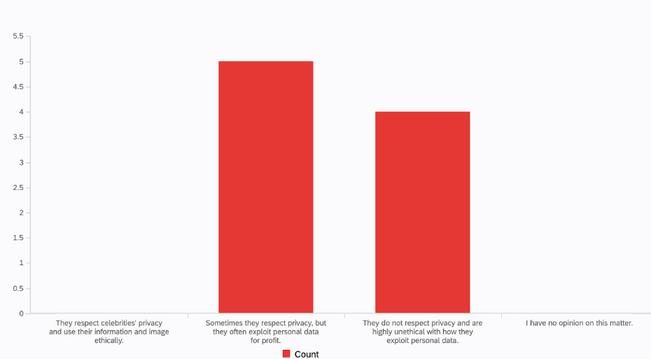
Once again, 100% of participants believe that corporations and the media either sometimes or never respect privacy. What is even more telling is that none of the participants believe that corporations and the media use individuals' information and image ethically
Taylor Swift at a Kansas City Chiefs game David Eulitt/Getty Images
Combining all the previous research, beliefs, and questions already asked, I wanted to find out just how everything tied together when looking at an actual case, such as the one involving Taylor Swift and the NFL
What struck me most wasn’t just her presence at the game– it was the overwhelming reaction from NFL fans and the media. While a majority of viewers were quick to analyze and critique her presence on the screen, I began to wonder why all this was happening. The more I thought about it, the more I realized this situation raised important questions about privacy, celebrity culture, and the ethics of marketing From my perspective, Taylor Swift didn’t ask to be featured in those broadcasts but the NFL and media outlets capitalized on her fame for commercial gain This realization got me thinking deeply about the balance between the right to privacy and effective marketing
This article will explore the delicate balance between privacy and ethics in the realm of Integrated Marketing Communications Conducting research, a focus group and a survey resulted in numerous insights into the world of privacy and ethics. Examining the ethical complexities of celebrity privacy and commercial interests by focusing on Taylor Swift’s media coverage in the NFL highlights many ideas and beliefs that will be discussed in this article.
Rank the following aspects of Taylor Swift’s involvement with the NFL.
Privacy is a fundamental human right, yet it is often overlooked in today’s society. As said by legal scholar Neil Richards, “Unlike security or innovation, though, privacy often gets marginalized, seen as a backward or oldfashioned value, or maybe just something vague and misunderstood” (Richards 5). In the age of social media we currently live in , this observation has certainly been proven true. For celebrities, privacy becomes even more confusing and controversial.
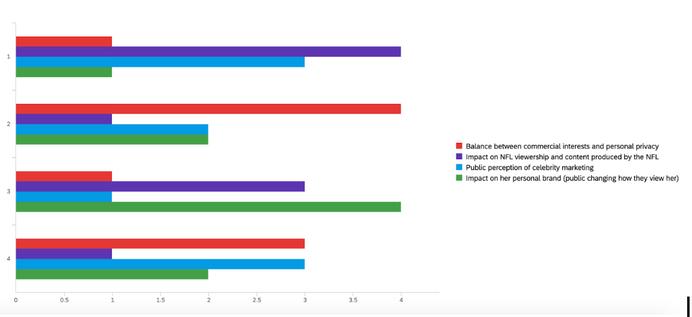
KYLIE BRITTON NOVEMBER 20, 2024
Univeristy of Mississippi 01
KYLIE BRITTON NOVEMBER 20, 2024
With 1 being the most important and 4 being the least important, it is evident that somewhere along the way people stopped caring about balancing the right to personal privacy and commercial interests. The results from this specific survey question tie back with an idea I mentioned earlier: celebrities like Swift are caught in a complex dilemma where their personal lives are being exploited for commercial gain and there is little they can do to control the narrative Only when the public begins to criticize the corporation or media behind the content rather than the subject of the content can a productive conversation that results in real change for the world of privacy and ethics be had.
AThe case of Taylor Swift’s media coverage at NFL games is more than just an example of celebrity culture– it illustrates a deep ethical issue at the intersection of marketing, privacy, and media exploitation. Celebrities like Swift have the right to privacy, even when they are in the public eye, and corporations and the media must navigate how to respect that privacy while using their fame for commercial gain As privacy concerns continue to grow, individuals and businesses alike must work towards achieving standard practices that are ethical for all parties involved In the next five years, the goal should be to create and implement privacy guidelines following a clear ethical framework that does not infringe upon celebrities, or anyone ’ s, personal lives, ensuring that marketing practices are handled with integrity and responsibility
s a lifelong superfan of Taylor Swift, I was thrilled to see her appear on my TV during NFL games Watching her do something new and be more open than she ever has in the past was so exciting, but not everyone shared that same feeling.
The case of Taylor Swift’s media coverage at NFL games is more than just an example of celebrity culture– it illustrates a deep ethical issue at the intersection of marketing, privacy, and media exploitation. Celebrities like Swift have the right to privacy, even when they are in the public eye, and corporations and the media must navigate how to respect that privacy while using their fame for commercial gain As privacy concerns continue to grow, individuals and businesses alike must work towards achieving standard practices that are ethical for all parties involved In the next five years, the goal should be to create and implement privacy guidelines following a clear ethical framework that does not infringe upon celebrities, or anyone ’ s, personal lives, ensuring that marketing practices are handled with integrity and responsibility
The case of Taylor Swift’s media coverage at NFL games is more than just an example of celebrity culture– it illustrates a deep ethical issue at the intersection of marketing, privacy, and media exploitation. Celebrities like Swift have the right to privacy, even when they are in the public eye, and corporations and the media must navigate how to respect that privacy while using their fame for commercial gain. As privacy concerns continue to grow, individuals and businesses alike must work towards achieving standard practices that are ethical for all parties involved In the next five years, the goal should be to create and implement privacy guidelines following a clear ethical framework that does not infringe upon celebrities, or anyone ’ s, personal lives, ensuring that marketing practices are handled with integrity and responsibility
What struck me most wasn’t just her presence at the game– it was the overwhelming reaction from NFL fans and the media While a majority of viewers were quick to analyze and critique her presence on the screen, I began to wonder why all this was happening. The more I thought about it, the more I realized this situation raised important questions about privacy, celebrity culture, and the ethics of marketing From my perspective, Taylor Swift didn’t ask to be featured in those broadcasts but the NFL and media outlets capitalized on her fame for commercial gain. This realization got me thinking deeply about the balance between the right to privacy and effective marketing
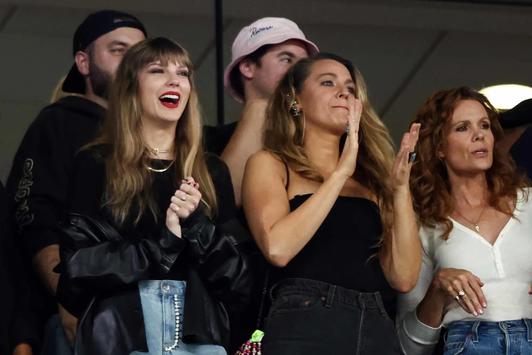
and Blake
Taylor Swift and Blake Lively cheering at a Kansas City Chiefs game
This article will explore the delicate balance between privacy and ethics in the realm of Integrated Marketing Communications Conducting research, a focus group and a survey resulted in numerous insights into the world of privacy and ethics Examining the ethical complexities of celebrity privacy and commercial interests by focusing on Taylor Swift’s media coverage in the NFL highlights many ideas and beliefs that will be discussed in this article.
Kevin Sabitus / Getty Images
“Comparison Charts: U S State vs EU Data Privacy Laws ” Bloomberg Law, 11 July 2023, pro bloomberglaw com/insights/privacy/privacy-laws-us-vs-eu-gdpr/#the-basics-of-each-law
“Comparison Charts: U.S. State vs. EU Data Privacy Laws.” Bloomberg Law, 11 July 2023, pro bloomberglaw com/insights/privacy/privacy-laws-us-vs-eu-gdpr/#the-basics-of-each-law
“Comparison Charts: U S State vs EU Data Privacy Laws ” Bloomberg Law, 11 July 2023, pro.bloomberglaw.com/insights/privacy/privacy-laws-us-vs-eu-gdpr/#the-basics-of-each-law.
Hines, T -A (2022b) The Right of Publicity in The Age of Technology, Social Media, and Heightened Cultural Exchange.
https://assets pubpub org/sy1ur8t2/51676910295337 pdf
Hines, T -A (2022b) The Right of Publicity in The Age of Technology, Social Media, and Heightened Cultural Exchange.
KYLIE BRITTON NOVEMBER 20, 2024
Hines, T -A (2022b) The Right of Publicity in The Age of Technology, Social Media, and Heightened Cultural Exchange. https://assets pubpub org/sy1ur8t2/51676910295337 pdf
KYLIE BRITTON NOVEMBER 20, 2024
Privacy is a fundamental human right, yet it is often overlooked in today’s society. As said by legal scholar Neil Richards, “Unlike security or innovation, though, privacy often gets marginalized, seen as a backward or oldfashioned value, or maybe just something vague and misunderstood” (Richards 5). In the age of social media we currently live in , this observation has certainly been proven true. For celebrities, privacy becomes even more confusing and controversial. Univeristy of Mississippi
https://assets pubpub org/sy1ur8t2/51676910295337 pdf
Hoffman, Benjamin “How Often Is Taylor Swift Actually Shown at N F L Games?” The New York Times, 25 Jan 2024, www.nytimes.com/2024/01/25/style/taylor-swift-nfl-broadcasts.html.
Hoffman, Benjamin “How Often Is Taylor Swift Actually Shown at N F L Games?” The New York Times, 25 Jan 2024, www.nytimes.com/2024/01/25/style/taylor-swift-nfl-broadcasts.html.
Hoffman, Benjamin “How Often Is Taylor Swift Actually Shown at N F L Games?” The New York Times, 25 Jan. 2024, www nytimes com/2024/01/25/style/taylor-swift-nfl-broadcasts html
Lanksy, S. (2023). 2023 Person of the Year Taylor Swift. https://time com/6342806/person-of-the-year-2023-taylor-swift/
Lanksy, S. (2023). 2023 Person of the Year Taylor Swift. https://time com/6342806/person-of-the-year-2023-taylor-swift/
Lanksy, S (2023) 2023 Person of the Year Taylor Swift https://time com/6342806/person-of-the-year-2023-taylor-swift/
APatterson, A (2023) Consumer Fandom - Managing the Participatory Environment: Taylor Swift, Surveillance, and Privacy in Fan Communities https://ecampusontario.pressbooks.pub/comm3p18/chapter/consumer-fandom-managing-the-participatoryenvironment-taylor-swift-surveillance-and-privacy-in-fan-communities/
s a lifelong superfan of Taylor Swift, I was thrilled to see her appear on my TV during NFL games. Watching her do something new and be more open than she ever has in the past was so exciting, but not everyone shared that same feeling
“Richards, N (2022) Why privacy matters Oxford University Press https://books.google.com/bookshl=en&lr=&id=OARREAAAQBAJ&oi=fnd&pg=PP1&dq=privacy+in+public +spaces&ots=sHB56KbAP&sig=6gKSIIvVCrRJTiOgCo0n3gEI26A#v=onepage&q=privacy%20in%20public %20spaces&f=false
What struck me most wasn’t just her presence at the game– it was the overwhelming reaction from NFL fans and the media While a majority of viewers were quick to analyze and critique her presence on the screen, I began to wonder why all this was happening The more I thought about it, the more I realized this situation raised important questions about privacy, celebrity culture, and the ethics of marketing From my perspective, Taylor Swift didn’t ask to be featured in those broadcasts but the NFL and media outlets capitalized on her fame for commercial gain. This realization got me thinking deeply about the balance between the right to privacy and effective marketing.
This article will explore the delicate balance between privacy and ethics in the realm of Integrated Marketing Communications Conducting research, a focus group and a survey resulted in numerous insights into the world of privacy and ethics Examining the ethical complexities of celebrity privacy and commercial interests by focusing on Taylor Swift’s media coverage in the NFL highlights many ideas and beliefs that will be discussed in this article
Swift at a Kansas City Chiefs game David Eulitt/Getty Images
Privacy is a fundamental human right, yet it is often overlooked in today’s society As said by legal scholar Neil Richards, “Unlike security or innovation, though, privacy often gets marginalized, seen as a backward or oldfashioned value, or maybe just something vague and misunderstood” (Richards 5) In the age of social media we currently live in , this observation has certainly been proven true For celebrities, privacy becomes even more confusing and controversial
By: Anna Higginbotham

In our society, language is constantly evolving. The word cancelled’ once used to define the act of diminishing something's orce or validity, now shifts to refer to a person Welcome to the wenty-first century, where cancel culture is a common occurrence n the social media world Being an IMC major as well as a chronic ocial media user, have brought me an immense amount of knowledge on how social media works from both a consumer and business perspective. Uploading content is something I have found myself particularly fond of including how viewers respond to ertain types of media. With this being said, influencers and elebrities are constantly being cancelled by internet users in this oxic cycle they believe holds accountability. Through extensive background research, a focus group, and a survey it is clear that cancel culture and its results are now a recognizable phenomenon
In our society, language is constantly evolving. The ‘cancelled’ once used to define the act of diminishing someth force or validity, now shifts to refer to a person. Welcome to twenty-first century, where cancel culture is a common occurr in the social media world. Being an IMC major as well as a ch social media user, have brought me an immense amoun knowledge on how social media works from both a consumer business perspective. Uploading content is something I have f myself particularly fond of including how viewers respon certain types of media With this being said, influencers celebrities are constantly being cancelled by internet users in toxic cycle they believe holds accountability. Through exte background research, a focus group, and a survey it is clear cancel culture and its results are now a recognizable phenomen
In recent years, as cancel culture has grown, there has been an increase in research focused on understanding how consumers perceive it. “We conceptualize the process of ‘cancelling’ as a relationship between three main stakeholders, the consumer, the celebrity, and the brand” (Saldanha 2023) The idea that cancelling someone is dynamic interaction between three key players: the consumer, the celebrity, and the brand, each leading to their own process. Examining influencers' reputations as brands reveals how cancel culture can have a damaging impact on their careers In a public relations view, “The cancel culture movement has forced corporations to rethink their crisis communication strategies in the event that their brand comes under attack” (Azevedo 2024) As a result, influencers must be more proactive in developing comprehensive responses to address controversies and protect their public image In addition, the range of cancel culture is consistently expanding. “The term is shambolically applied to incidents both online and off that range from vigilante justice to hostile debate to stalking, intimidation and harassment” (Mishan 2020) Using cancel culture in various situations complicates the understanding, making it difficult to differentiate between legitimate accountability and harmful behavior
In recent years, as cancel culture has grown, there has been an increase in research focused understanding how consumers perceive it. “We conceptualize the process of ‘cancelling’ as a relation between three main stakeholders, the consumer, the celebrity, and the brand” (Saldanha 2023). The idea cancelling someone is dynamic interaction between three key players: the consumer, the celebrity, and brand, each leading to their own process. Examining influencers' reputations as brands reveals how c culture can have a damaging impact on their careers. In a public relations view, “The cancel cu movement has forced corporations to rethink their crisis communication strategies in the event that brand comes under attack” (Azevedo 2024). As a result, influencers must be more proactive in develo comprehensive responses to address controversies and protect their public image. In addition, the ran cancel culture is consistently expanding. “The term is shambolically applied to incidents both online an that range from vigilante justice to hostile debate to stalking, intimidation and harassment” (Mishan 2 Using cancel culture in various situations complicates the understanding, making it difficult to differen between legitimate accountability and harmful behavior.
Through a focus group, I gathered valuable insight from students who are likely familiar with cancel culture and its impact. While conducting this focus group I noticed three themes in my peers ’ responses. The first aspect focuses on the role of influencers, particularly exploring how individuals perceive and interpret the influence of these figures in the context of cancel culture When asked how much they trust influencers on a scale of one to ten the consensus was, “maybe seven or eight depending on who it is.” Many had influencers they trusted over others, one commonly mentioned was Alix Earle, who had previously been cancelled. One student stated, “I think that Alex Earle thing happened recently I think I was little dramatic like all those tweets and stuff from like her high school and stuff I think that was a little much ” Alix Earle faced cancellation due to racist remarks she made in middle school, which resurfaced after she gained fame. However, Earle swiftly recovered from this and students continued to follow her influence, stating, “I always do that stuff, because I bought the little eye Puffs like the Alex Earle ones that are like little Triangle Eye Puffs right when it started becoming popular ”
Through a focus group, I gathered valuable insight from students who are likely familiar with c culture and its impact. While conducting this focus group I noticed three themes in my peers ’ responses first aspect focuses on the role of influencers, particularly exploring how individuals perceive and inte the influence of these figures in the context of cancel culture. When asked how much they trust influe on a scale of one to ten the consensus was, “maybe seven or eight depending on who it is.” Many influencers they trusted over others, one commonly mentioned was Alix Earle, who had previously cancelled One student stated “I think that Alex Earle thing happened recently I think I was little dram
Moreover, another key theme that emerged from the focus group was the importance of transparency among influencers. The discussion consisted of how they expect influencers to be transparent about their personal lives, brand partnerships, and the challenges they face, as this fosters a sense of authenticity. Advertisements have made it even harder to trust influencers, making it even more difficult when conflicts arise Another factor influencing trust is the growing number of influencers, which the group collectively agreed on, saying, "Like they just keep getting bigger and like there's more and more every day so all of the sudden " The overwhelming increase in influencers has contributed to the rise of cancel culture, as more public figures are subject to scrutiny. One student reflected on influencers gaining rapid popularity, stating, "If I can find somebody like randomly that doesn't know before that has a million followers on like, I feel like I would have known about them if like if they were relevant." Finally, I found that participants were able to see through influencers' scripted content and calculated publicity stunts One student stated, “They're literally just paying to get their view like we talk about how we see celebrities now that millions of followers and no one knows who they are. ” Given these issues, it becomes increasingly common for followers to feel compelled to cancel influencers In addition, influencers are expected to update their followers on all aspects of their lives, further portraying a “picture-perfect” image. One student said, “You can never like truly enjoy life because you always constantly have to be like oh, I need to be recording this I need to be doing this schedule ” The overall pressure influencers face ultimately leads to their downfall when cancel culture comes into play.
By using a survey I developed on Qualtrics, I was able to gather more detailed data on how individuals aged 18-21 perceive cancel culture Using the Qualtrics platform, I collected individual feedback on this topic, obtaining more detailed responses about real-life experiences with cancel culture. For example, a question asked was, “What do you think an influencer can do to regain the support of their followers?” This open-ended question received a variety of responses, reflecting the participants' personal views on how they feel an influencer can recover Some of the common suggestions included offering a sincere apology and being open and honest about their actions. When discussing an influencer’s actions, I specifically asked participants to assess the severity of the reasons behind their cancellation. The list included these options; offensive comments, dishonesty, political views, and problematic partnerships The result of this question was a staggering forty-four percent being offensive comments Similarly, I asked participants to rank different forms of apologies from influencers, they were given the options of; TikToks, Instagram stories, apology videos on YouTube, and Instagram posts. The options were ranked as the following apology videos on YouTube, TikToks, Instagram posts, and lastly, Instagram stories. I believe this ranking occurred because the video formats on both TikTok and YouTube enable viewers to perceive the apologies as more sincere, while giving influencers more time to discuss their response Furthermore, I complied more data into charts included below:
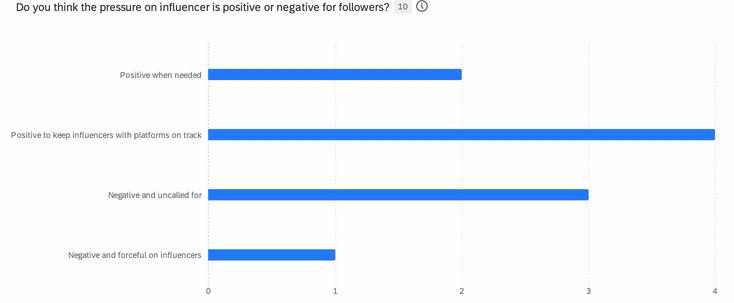
This chart displays the results of the question: Do you think the pressure on influencer is positive or negative for followers? The overall consensus was that it can be Positive to keep influencers with platforms on track Showing that cancel culture can be beneficial with regulations.
The chart to the right, shows the question: Do you think cancel culture is a misuse of power? The responses were limited to a simple yes or no option, with the majority resulting in a yes. Which disputes the previous chart in a way, because power of cancel culture depends on the followers

As cancel culture continues to evolve, influencers and celebrities must be mindful of their words and actions while maintaining their online presence. Based on all forms of research, the final conclusion is that cancel culture can be beneficial when applied with proper regulation and strong ethical principles As you scroll through social media, take a moment to reflect on how the cancellation of influencers or celebrities affects your perspective and decisions as a viewer. Consider how these events shape your views, trust, and engagement with the content you consume.
Notes
Saldanha, N , Mulye, R , & Rahman, K (2023) Cancel culture and the consumer: A strategic marketing perspective Journal of Strategic Marketing, 31(5), 1071–1086. https://doiorg.umiss.idm.oclc.org/10.1080/0965254X.2022.2040577
Mishan, L. (2020, December 3). The Long and Tortured History of Cancel Culture. The New York Times https://www nytimes com/2020/12/03/t-magazine/cancel-culture-history.html
Costa C, Azevedo A Antecedents and consequences of the “cancel culture” firestorm journey for brands: is there a possibility for forgiveness? Journal of Marketing Management. 2024;40(3/4):289-312. doi:10.1080/0267257X.2023.2266465
Czum, J (2018b) Concrete Building Under Blue Sky. Pexels Retrieved November 19, 2024, from https://www pexels com/photo/concrete-building-under-blue-sky-4004291/.
food is
and is ed heir od.
moted tent hat their ds food.
The Character Chef Gousteau from Disney's Ratatouille once said, "Anyone can cook, but only the fearless can be great." In today's digital age, you do not have to be a Michelin-star chef to create a meal worth sharing. With the rise of social media platforms such as TikTok and Instagram, food influencers worldwide inspire millions of people daily. Food Marketing has shifted to viral videos where influencers are shaping our food choices and highlighting food trends. To understand why this is the case, I conducted a focus group and created a survey that allowed for open discussion about personal beliefs towards short-form video content, influencers, and food-related marketing The study that I made helped me develop insights to identify specific platform usage, the trust of consumers, and the overall influence of food-related content With this background research, this article delves into the impact of short-form videos, the importance of authenticity in food influencer marketing, and the platforms that steer these trends.
The Character Chef Gousteau from Disney's Ratatouille once said, "Anyone can cook, but only the fearless can be great." In today's digital age, you do not have to be a Michelin-star chef to create a meal worth sharing With the rise of social media platforms such as TikTok and Instagram, food influencers worldwide inspire millions of people daily. Food Marketing has shifted to viral videos where influencers are shaping our food choices and highlighting food trends To understand why this is the case, I conducted a focus group and created a survey that allowed for open discussion about personal beliefs towards short-form video content, influencers, and food-related marketing The study that I made helped me develop insights to identify specific platform usage, the trust of consumers, and the overall influence of food-related content. With this background research, this article delves into the impact of short-form videos, the importance of authenticity in food influencer marketing, and the platforms that steer these trends
The Character Chef Gousteau from Disney's Ratatouille once said, "Anyone can cook, but only the fearless can be great." In today's digital age, you do not have to be a Michelin-star chef to create a meal worth sharing. With the rise of social media platforms such as TikTok and Instagram, food influencers worldwide inspire millions of people daily. Food Marketing has shifted to viral videos where influencers are shaping our food choices and highlighting food trends. To understand why this is the case, I conducted a focus group and created a survey that allowed for open discussion about personal beliefs towards short-form video content, influencers, and food-related marketing The study that I made helped me develop insights to identify specific platform usage, the trust of consumers, and the overall influence of food-related content. With this background research, this article delves into the impact of short-form videos, the importance of authenticity in food influencer marketing, and the platforms that steer these trends.
By: Ella Moraes
The Character Chef Gousteau from Disney's Ratatouille once said, "Anyone can cook, but only the fearless can be great." In today's digital age, you do not have to be a Michelin-star chef to create a meal worth sharing With the rise of social media platforms such as TikTok and Instagram, food influencers worldwide inspire millions of people daily. Food Marketing has shifted to viral videos where influencers are shaping our food choices and highlighting food trends To understand why this is the case, I conducted a focus group and created a survey that allowed for open discussion about personal beliefs towards short-form video content, influencers, and food-related marketing. The study that I made helped me develop insights to identify specific platform usage, the trust of consumers, and the overall influence of food-related content With this background research, this article delves into the impact of short-form videos, the importance of authenticity in food influencer marketing, and the platforms that steer these trends
Social media platforms such as Instagram, TikTok, and Facebook have greatly impacted the way food is marketed. These platforms have influenced individuals to start home cooking and promoted different viral food trends, along with content creators who are molding the new ways that their audiences' attitudes have changed towards food
Social media platforms such as Instagram, TikTok, and Facebook have greatly impacted the way food is marketed These platforms have influenced individuals to start home cooking and promoted different viral food trends, along with content creators who are molding the new ways that their audiences' attitudes have changed towards food.
Social media platforms such as Instagram, TikTok, and Facebook have greatly impacted the way food is marketed These platforms have influenced individuals to start home cooking and promoted different viral food trends, along with content creators who are molding the new ways that their audiences' attitudes have changed towards food.
Social media platforms such as Instagram, TikTok, and Facebook have greatly impacted the way food is marketed. These platforms have influenced individuals to start home cooking and promoted different viral food trends, along with content c a



inspire global audien Influencers and the P
Food influencers have played an important role in evolving specific audiences' habits and choices By tuning into the article Home Cooking in the Digital Age: When observing food influencers on social media triggers the imitation of their practices, we discover the influence social media food content has on French social media users This research revealed that "Food influencers can impact society positively by advocating for home cooking, which is associated with healthier behaviors than snacking or dining out" (Sokolova, Vessal, & Perez, 2024). The study concluded that posts with entertaining content, short-form videos, and easy-to-follow recipes are more likely to engage the audience and encourage home cooking. In contrast, the health and economic benefits of cooking at home appeared to have a lesser impact on motivating the audience to try a recipe
Food influencers have played an important role in evolving specific audiences' habits and choices. By tuning into the article Home Cooking in the Digital Age: When observing food influencers on social media triggers the imitation of their practices, we discover the influence social media food content has on French social media users This research revealed that "Food influencers can impact society positively by advocating for home cooking, which is associated with healthier behaviors than snacking or dining out" (Sokolova, Vessal, & Perez, 2024) The study concluded that posts with entertaining content, short-form videos, and easy-to-follow recipes are more likely to engage the audience and encourage home cooking. In contrast, the health and economic benefits of cooking at home appeared to have a lesser impact on motivating the audience to try a recipe.
Food influencers have played an important role in evolving specific audiences' habits and choices By tuning into the article Home Cooking in the Digital Age: When observing food influencers on social media triggers the imitation of their practices, we discover the influence social media food content has on French social media users. This research revealed that "Food influencers can impact society positively by advocating for home cooking, which is associated with healthier behaviors than snacking or dining out" (Sokolova, Vessal, & Perez, 2024) The study concluded that posts with entertaining content, short-form videos, and easy-to-follow recipes are more likely to engage the audience and encourage home cooking In contrast, the health and economic benefits of cooking at home appeared to have a lesser impact on motivating the audience to try a recipe.
Food influencers have also played a massive role in the growth of specific trends in the media to inspire global audiences. The Article Social Media Influencers and the Promotion of home-cooking: The Role of Vicarious Experiences and Behavioral Intentions highlights the different roles that famous food influences have played in global trends. There are two influencers specifically that were given an honorable mention because of their techniques and fusion with modern trends that have captivated food connoisseurs, “Famous food influencers like Gordon Ramsay and Jamie Oliver have transformed the way we perceive cooking. Their engaging content showcases a fusion of classic and modern cooking styles, appealing to food lovers worldwide” Sokolova, K , Kefi, H., & Perez, C. (2024). These influencers have an essential role in concocting recipes that are made to be approachable and inspiring for all audiences.
Food influencers have played an important role in evolving specific audiences' habits and choices. By tuning into the article Home Cooking in the Digital Age: When observing food influencers on social media triggers the imitation of their practices, we discover the influence social media food content has on French social media users. This research revealed that "Food influencers can impact society positively by advocating for home cooking, which is associated with healthier behaviors than snacking or dining out" (Sokolova, Vessal, & Perez, 2024). The study concluded that posts with entertaining content, short-form videos, and easy-to-follow recipes are more likely to engage the audience and encourage home cooking In contrast, the health and economic benefits of cooking at home appeared to have a lesser impact on motivating the audience to try a recipe.
Food influencers have also played a massive role in the growth of specific trends in the media to inspire global audiences The Article Social Media Influencers and the Promotion of home-cooking: The Role of Vicarious Experiences and Behavioral Intentions highlights the different roles that famous food influences have played in global trends There are two influencers specifically that were given an honorable mention because of their techniques and fusion with modern trends that have captivated food connoisseurs, “Famous food influencers like Gordon Ramsay and Jamie Oliver have transformed the way we perceive cooking. Their engaging content showcases a fusion of classic and modern cooking styles, appealing to food lovers worldwide” Sokolova, K., Kefi, H , & Perez, C (2024) These influencers have an essential role in concocting recipes that are made to be approachable and inspiring for all audiences
Food influencers have also played a massive role in the growth of specific trends in the media to inspire global audiences. The Article Social Media Influencers and the Promotion of home-cooking: The Role of Vicarious Experiences and Behavioral Intentions highlights the different roles that famous food influences have played in global trends There are two influencers specifically that were given an honorable mention because of techniques and fusion with modern trends that have captivated food connoisseurs, “Famous food influencers like Gordon Ramsay and Jamie Oliver have transformed the way we perceive cooking Their engaging content showcases a fusion of classic and modern cooking styles, appealing to food lovers worldwide” Sokolova, K , Kefi, H., & Perez, C. (2024). These influencers have an essential role in concocting recipes that are made to be approachable and inspiring for all audiences
The Character Chef Gousteau from Disney's Ratatouille once said, "Anyone can cook, but only the fearless can be great." In today's digital age, you do not have to be a Michelin-star chef to create a meal worth sharing. With the rise of social media platforms such as TikTok and Instagram, food influencers worldwide inspire millions of people daily. Food Marketing has shifted to viral videos where influencers are shaping our food choices and highlighting food trends. To understand why this is the case, I conducted a focus group and created a survey that allowed for open discussion about personal beliefs towards short-form video content, influencers, and food-related marketing. The study that I made helped me develop insights to identify specific platform usage, the trust of consumers, and of food-related content. With rch, this article delves into the videos, the importance of nfluencer marketing, and the hese trends. Social media platforms such as Instagram, TikTok, and Facebook have greatly impacted the way food is
Food influencers have also played a massive role in the growth of specific trends in the media to inspire global audiences The Article Social Media Influencers and the Promotion of home-cooking: The Role of Vicarious Experiences and Behavioral Intentions highlights the different roles that famous food influences have played in global trends. There are two influencers specifically that were given an honorable mention because of their techniques and fusion with modern trends that have captivated food connoisseurs, “Famous food influencers like Gordon Ramsay and Jamie Oliver have transformed the way we perceive cooking. Their engaging content showcases a fusion of classic and modern cooking styles, appealing to food lovers worldwide” Sokolova, K., Kefi, H., & Perez, C. (2024). These influencers have an essential role in concocting recipes that are made to be approachable and inspiring for all audiences.
The Role of Vica Intentions highli famous food infl trends. There ar were given an ho their techniques that have captiv food influencers Oliver have tran cooking. Their e fusion of classic appealing to foo
The Role of Vicarious Intentions highlights famous food influen trends. There are tw were given an honor their techniques and that have captivated food influencers like ver have transfor oking. Their engag ion of classic and appealing to food
Young adults continue to set the trends of interacting with social media content; this provides helpful insight for specific food marketers to connect with certain audiences. Camargo, Botelho, Dean, and Fiates's (2024) study examines how Brazilian young adults engage with certain cooking content. This study shows that the clarity and practicality of a recipe are essential in capturing their attention: "If in "the description there are ingredients, then let's introduce the preparation method in the video" (Cam" Go et al , 2024) The importance of a food content creator's appeal ensures that viewers can follow along easily and replicate the recipes A young audience needs to create this critical balance of determining engagement
The focus group I conducted explored different social elements and how audiences respond to social media content, specifically food content It shows how social media users can influence audiences' decisions based on authenticity and how impactful short-form video content is Understanding these insights was essential to designing a survey where the questions could relate to actual audience behavior. The focus group provided the foundation for more profound research on this topic.
The Focus Group participants shared the impact of social media influencers on their food choices One participant highlighted, "I think right now, with the popularity of influencers becoming a huge thing, they have a bigger say than actually what the brand posts" (18-21 Year Old, Female) Even though the participants think that influencers are a helpful marketing tool, they also felt skeptical about the trustworthiness of a post. With social media influencers promoting a brand, they could be doing it for financial gain. The participants agreed that it is essential for brands to prioritize authenticity in their partnerships to build trust with their audience.

Authenticity is a crucial factor in the effectiveness of food-related social media content. Participants in the focus group expressed frustration with food posts that needed to be completed or more specific One participant stated, "I don't like it when the post shows the final product without providing the recipe. Or when they say to find the recipe in the comments" (18-21 Year Old, Female). This highlights the importance of food influencers sharing helpful content, including straightforward recipes, detailed instructions, and descriptive videos with specific times and measurements. Doing so helps build trust with their audience. Brands are more likely to partner with authentic influencers who can create strong connections with their audience, ultimately making their campaigns more successful
Food influ yed a massive role in the grow s in the media to inspire glo Article Social Media Influencers and the Promotion of home-cooking: The Role of Vicarious Experiences and Behavioral Food influencers have played an important role in evolving specific audiences' habits and choices. By tuning into the article Home Cooking in the Digital Age: When observing food influencers on social media triggers the imitation of their practices, we discover the influence social media food content has on French social media users. This research revealed that "Food influencers can impact society positively by advocating for home cooking, which is associated with healthier behaviors than snacking or dining out" (Soko Vessal, & Perez, 2024). The study concluded that posts with entertaining content, short-form videos, and easy-to-follow recipes are more likely to engage the audience and encourage home cooking. In contrast, the health and economic benefits of cooking at home appeared to have a lesser impact on motivating the audience to try a recipe.

Short-form videos have revolutionized food and fitness trends They have become a tool for influencers to help engage with their audience and share their lifestyles, such as recipes, meal ideas, and healthy lifestyles These videos are captivating and can quickly motivate the audience to be inspired A focus group participant shared, "Those kinds of videos are always entertaining. They make me feel healthier and more motivated in my fitness journey. I feel like many people who watch them are also really invested in improving their health" (18-21-year-old Female). Short-form content, if done right, can easily connect the audience emotionally A possible response from a viewer would be encouraged to adopt a healthier lifestyle and food habits This content format quickly shares ideas for food influencers, making it essential in today's digital world
The Survey that I created and published in Qualtrics was to expand on the insights that the focus group shared, such as consumer behavior, preferences, and different attitudes toward food influencers and other social media content
The Survey specifically targeted individuals ages 18-35 who follow food influencers on social media platforms The Survey also questioned the surveyor's engagement with cooking-related topics.
The First Qualtrics question is, "Which social media platforms do you use to watch cooking-related content?"
This question is essential to understanding where survey participants engage with their food-related content
The next question asked participants to rank the importance of five factors when trying a recipe they found on social media: health benefits, difficulty level, visual appeal, ingredient availability, and time required Each factor was rated on a scale from 1 (least important) to 5 (most important) This question provides insights into what aspects of social media content drive consumer behavior and decision-making in food choices.


The survey results from this question indicate that most survey participants are in tune with food-related content. Over half of the surveyers watch cooking-related content several times a week. Moreover, about 23% engage in this content daily. This content highlights that there is regularity when it comes to watching cooking content
This is a factor that food influencers need to be motivated by, and brands need to connect with their specified audience The viewers are a high percentage that share that this content needs to remain consistent and on-trend with the influencer's audiences
The results indicate that the most critical factors are visual appeal and the time required to prepare a recipe The survey suggests that participants are more likely to try visually engaging and quick recipes Ingredient availability also received high rankings, underscoring the importance of accessibility and convenience. While health benefits and difficulty levels were less influential overall, they still mattered to some participants. These findings emphasize the need for food influencers to create content that is not only visually appealing but also practical and timeefficient to engage a broader audience
The survey included an open-ended question asking participants, “In your opinion, what makes a food influencer trustworthy or reliable?” This question aimed to identify the key characteristics that build trust between influencers and their audiences. Participants were encouraged to share written responses, which provided more profound insights into the elements that foster credibility in foodrelated social media content

Responses indicated that the ingredients used and the flavor of recipes were among the most significant factors contributing to their trustworthiness Many participants also emphasized the importance of influencers posting consistently and receiving positive reviews Additionally, some respondents noted that the number of followers could measure reliability, while others argued that quality is more important than quantity These insights suggest that trust in food influencers is rooted in authenticity, consistency, and the perceived quality of their content. For brands and influencers, concentrating on these elements can help establish more substantial and credible relationships with their audiences
The survey included the question, "Do you prioritize healthy recipes shared by food influencers?" This question aimed to assess whether participants value health when interacting with recipes promoted by food influencers. Participants could respond with either "Yes" or "No," providing a simple way to gauge their preferences for health-focused content
The focus group and the survey findings offer valuable insights into how social media impacts consumer behavior in food and cooking. Here are the three main takeaways:
Authenticity plays a significant role in building trust with audiences
Short-form videos are highly effective in engaging users
Health-conscious content is important
The survey also reveals that platforms like Instagram and TikTok are popular for consuming food-related content Viewers also value visual appeal, convenience, and ingredient accessibility when trying a new recipe.
These results highlight the need for food influencers and brands to prioritize authentic, engaging content to connect with their audiences Influencers and marketers can strengthen their relationships with followers by aligning their strategies with these consumer preferences and fostering meaningful engagement in the digital age

The results show a strong preference for healthy recipes, as most respondents answered "Yes." Only a tiny minority responded "No," indicating that health-conscious content appeals to audiences engaging with food influencers. This data presents an opportunity for food influencers and brands to prioritize the promotion of nutritious, healthoriented recipes to better align with their audience's preferences and priorities
Audiences and influencers both play a crucial role in shaping the future of food content on social media Viewers can support authenticity by engaging with influencers who prioritize authenticity, sharing recipes that inspire them, trying new dishes, and providing feedback On the other hand, influencers can build trust by creating authentic and visually appealing content while sharing easy and healthy recipes that resonate with their audience. By collaborating through engagement, audiences and influencers can foster a more meaningful and impactful platform for food content.
Bird, B. (Director). (2007). Ratatouille [Film]. Pixar Animation Studios; Walt Disney Pictures. Camargo, A M , Botelho, A M , Dean, M , & Fiates, G M R (2024) Beyond catching a glimpse: Young adults’ perceptions of social media cooking content British Food Journal, 126(10), 3624–3643. https://doi.org/10.1108/bfj-01-2024-0091
DAPA Images. (n.d.). Hand holding money - isolated [Graphic]. Retrieved November 20, 2024, from https://www canva com
Elwan, Y. (2024, September 3). How food influencers are shaping modern culinary trends. Amazing Food and Drink https://www amazingfoodanddrink com/how-food-influencers-are-shaping-modernculinary-trends
Greig, J. (n.d.). Gen Z Londoners holding smartphones using social media [Graphic]. Retrieved November 20, 2024, from https://www.canva.com
Lund, J. (n.d.). Woman vlogger recording video for food channel [Graphic]. Retrieved November 20, 2024, from https://www canva com
Modern Graphic. (n.d.). Horizontal thin line vector illustration [Graphic]. Retrieved November 20, 2024, from https://www canva com
Sanjaya Images (n d ) Chef hat doodle [Graphic] Retrieved November 20, 2024, from https://www.canva.com
Sokolova, K , Vegheș, C , & Rusu, O (2024) Home cooking in the digital age: When observing food influencers on social media triggers the imitation of their practices. Psychology & Marketing, 41(5), 1152–1171 https://doi org/10 1002/mar 21973
University of Mississippi. (2024, November 6). Qualtrics survey form [Online survey]. Retrieved November 20, 2024, from https://uofmississippi qualtrics com/jfe/form/SV_6ihqJXCV7df2grI
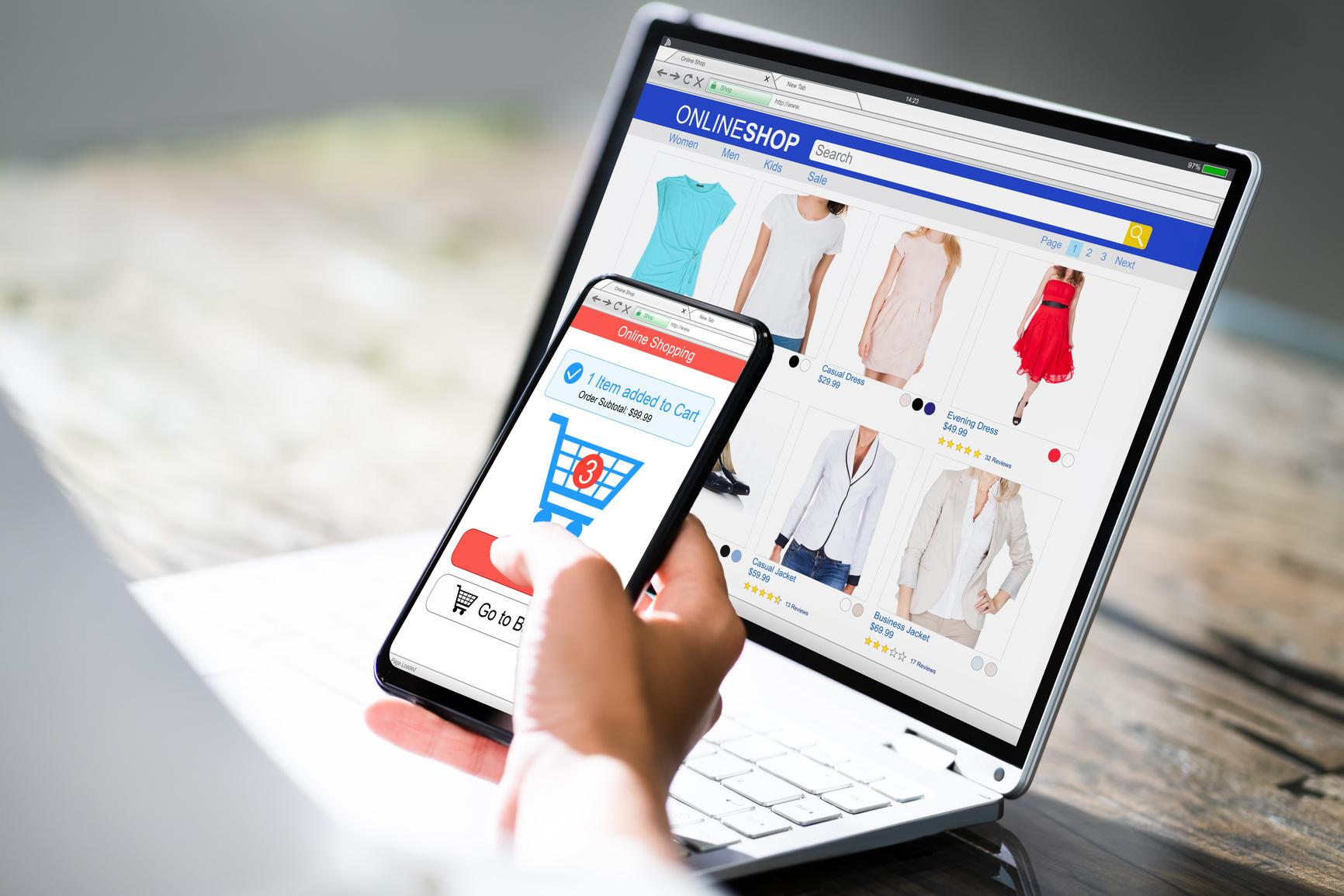
By: Emily Eldred
You may be asking yourself, what is product overconsumption? According to overconsumption.org, overconsumption refers to “a consumption level that exceeds what is necessary or beneficial, reflecting an ever-growing trend towards more significant purchases and the incessant quest for material goods.” In a rapidly growing technological age, product overconsumption has reached an all-time high. Social media, influencer marketing, and societal influences play a significant role in consumer behavior, and products are often unnecessarily purchased in order to fulfill trends. As an avid user of social media and a victim of overconsumption myself, I wanted to dive deeper into what influences these purchases and the behavior behind them. I chose to focus on social media’s impact on product overconsumption by conducting background research, facilitating a focus group, and creating a survey.
After deciding to better understand the correlation between social media and product overconsumption, I found secondary research from scholarly sources. I was intrigued by an academic journal explaining a focus group conducted on members of Swedish Gen Z to understand their purchasing habits, which were found to be heavily influenced by social media. Based on their own research, they found that “80% of consumers have made a purchase based on a recommendation from a social media influencer” (Hagerborn, 2024). This large percentage shows that social media and the influencers on each platform have a clear impact on purchasing decisions and consumer behavior. Along these lines, I found a news article that conducted a study emphasizing the correlation between consumption behaviors and social media influence. Their research focused on social media intensity (SMI) and social media content -
(SCM) and their direct results with purchasing decisions. When analyzing the results of their study, they found that the results “suggest that SMI is an important antecedent of negative consumption habits” (Pellegrino, 2022). This means that their study found a direct correlation between the social media intensity for users and making unnecessary purchases. I also found a government report about the circular economy for textiles, which highlights how much people are purchasing fashion compared to previous years. They specifically state that “social media has also been a driver of fast fashion, speeding the rate at which trends come into style through increased visibility” (NIST, 2022). This directly affects the next statistic in which they reveal that “fashion brands produce almost 2x the amount of clothing today than they did before the year 2000” (NIST, 2022). This information suggests that social media has become a catalyst for trends and purchasing when it comes to fast fashion. Although fast fashion is just a small portion of the purchasing from consumers, the report reveals that social media does play an important role in overconsumption.



To further understand the role of social media on consumer behavior, I facilitated a focus group to explore the influence of social media on Gen Z’s consumer behavior. The participants of the focus group were asked various questions about their interactions on social media, their perception of trends, and their overall consumer behavior. Through the focus group, I found three themes that I felt emphasized the direct impact of social media on consumer behavior.
In the focus group, participants discuss how socialmedia platforms, specifically TikTok and Instagram, influence their purchasing decisions. They also express that they are often driven to purchases by exposure to trends and influencers. When asked about trends, one participant said: “I feel like I buy more things when I'm here at college than I am, like, at home on a break or something, because you're seeing people constantly wearing new things or trying new things that you're like, okay, maybe I should try it too.” This shows that trends play a huge role when it comes to purchasing, and trends are widely saturated on social media. A question was asked about making purchases due to social media, and one participant added: “I feel like social media encourages you to buy more than you actually need... That’s the point.”
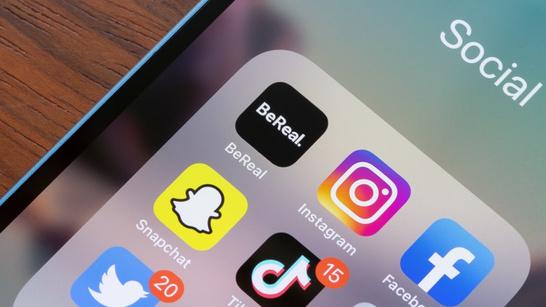
Their response reveals that social media is seen as a driver for influencing unnecessary purchases, leading to overconsumption Another question asked about influencers on social media and if they had any impact on consumer behavior A participant responded: “I definitely keep up with, like, lifestyle influencers [but] sometimes I think I'm buying the label more than I'm buying the actual product ” This means that influencers along with exposure to trends creates the need to purchase items without thinking about its implications
Participants also felt as though trends across social media creates an added pressure to overconsume, which often leads them to regret their impulse purchases. When asked about making impulse purchases due to social media, one participant said: “If it's like skincare, then I won't impulse buy. Like, I'll actually, like, look at how effective it is. But like, stuff like clothes, I'll probably, like, impulse buy because I'm like, I feel like I need it.” Another participant said: “Whenever I see the little like, 20% off, I'm like, okay, yeah, maybe I'll , like, actually buy something.” A lead up question asked about feeling pressure to purchase something due to a trend, and a participant added: “I feel like some trends are too kind of just pointless... like the Chamoy pickle challenge... it was posted everywhere. Like, I ended up buying it... Why did I buy that?” All of these responses suggest that overconsumption and impulse buying are directly affected by social media exposure.

The focus group participants explain how social media influencers play a role in their purchasing decisions and shaping their lifestyle choices. When asked if social media influencers have a say in what they buy, one participant said: “It's like the influencers, they've marketed themselves so well, then it’s easier for them to market brands... like, they already created that personal brand, so people follow them to that.” Another participant added: “I follow, like, lifestyle influencers... [and] sometimes I base -
[purchasing decisions] on their experience, like how much I need it.” Another question asked how often they make purchases due to social media, and one participant said: “Sometimes I think I'll see, like, stuff on social media... and save it to remember, like, this is a good workout or trend I want to try.” These responses highlight the impact social media, especially its influencers, have on consumers and the way they make their purchasing decisions.
I designed a survey aimed at Gen Z consumers to find how social media influences their purchasing decisions. I asked several questions aimed to see the direct effects of social media on their purchases. I asked questions such as: Have you ever been tempted to buy a product because of social media? How often do you buy something to follow a trend? Have you ever regretted a purchase you made because of a trend? I also asked them to rank the platforms where they see advertisements the most. I felt as though these questions would be able to define whether or not social media truly made an impact on their purchasing behavior The results from the question, ‘Have you ever been tempted to buy a product because of social media?’ revealed that 81% of the respondents have been tempted to purchase a product because of social media I found this statistic to be very revealing to the influence social media has on users, especially when it comes to purchasing (Figure 1) The results of these rankings showcase that the respondents placed Instagram, TikTok, and Pinterest as their highest platform. This means that they see advertisements on those platforms the most. When asked how often they buy something to follow a trend, only two respondents felt that they do not buy anything at all. The rest found that trends influence them a lot when it comes to purchasing something (Figure 2).
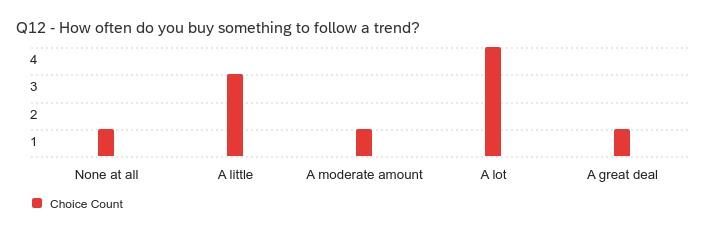
Figure 2

Through background research, facilitating a focus group, and creating a survey, I was able to see the impact that social media has on overconsumption. This research expresses that social media has a direct correlation with purchasing decisions, leading to overconsumption. Because of this, I encourage readers to read the article “The Psychology of Overconsumption: Why We Buy More,” to understand how to avoid overconsumption as well as the impact it has on our environment.
Gintautas Andriuška (2024, September 2). The Psychology of Overconsumption: Why We Buy More. Understanding Overconsumption: The Psychology Behind Excessive Buying – overconsumption.org
Hagerborn, C., Ivarsson, I., & Linde, S. (2024). Trending towards overconsumption : The role of social media in shaping Swedish Gen Z’s buying patterns (Dissertation). https://urn.kb.se/resolve? urn=urn:nbn:se:hj:diva-6462
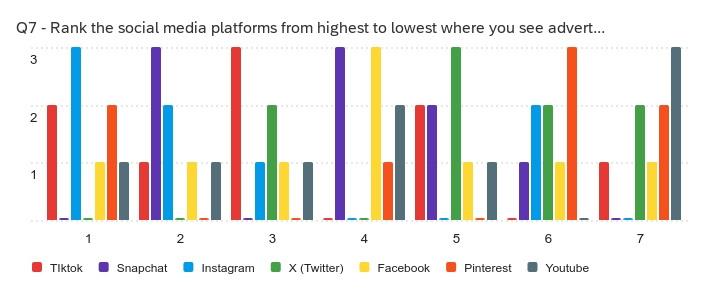
Figure 1
6 National Institute of Standards and Technology (NIST), Commerce Department. (2022, May 8). Facilitating a Circular Economy for Textiles Workshop Report. [Government]. Commerce Department.

https://www.govinfo.gov/app/details/GOVPUB-C1364a6de55854710c2e1479c65927bc26b
Pellegrino, A., Abe, M., & Shannon, R. (2022). The Dark Side of Social Media: Content Effects on the Relationship Between Materialism and Consumption Behaviors. Frontiers in psychology, 13, 870614. https://doi.org/10.3389/fpsyg.2022.870614

By: Abby Mathews
Introduction
How many times in the last week have you been influenced to buy something? If you are anything like me, it is probably multiple times a day. In today’s society “social media influencing” is when individuals who are defined as “influencers” are promoting a product or brand on social media. This sounds great, so where does the problem come in? Social media doesn’t always depict a true reality, which becomes prominent when talking about influencing A few common misconceptions of social media influencing are the lack of transparency, connection, and authenticity.

As someone who spends a lot of time watching influencers, I personally can see both sides I believe that social media influencers have an obligation to be transparent and honest as it is their job to promote brands authentically. However, I believe that the laws that are in place should be stricter and more updated to ensure that both brands and influencers are protected. The question that I set out to find when doing my research was what The Legal Challenges of Influencer Marketing are: Navigating Compliance and Liability in the Age of Social Media.
In today’s society, the three main problems that I find with social media influencing are Social Media Influence on Consumer Behavior, Influencer Trustworthiness and Transparency, and the Future of Social Ethics
To conduct my research, I used data from a survey that I produced in Qualtrics as well as data collected from my conducted Focus Group. The overall consensus was that people believed that social media influencing was
In an article, “Effects of Explicit Sponsorship Disclosure on User Engagement In Social Media Influencer Marketing”, the topic of major effects of social media influencing and sponsorships is discussed. The article expresses the idea that social media influencers should have to disclose when they have a sponsorship on their post. “The direction of social media users ’ reactions to an explicit disclosure of sponsorship (i.e., positive, negative, or nil) provides important implications for regulators’ policy making and influencers/advertisers’ real practices” (Shibboleth 2023) The main takeaway from this article was that transparency with your audience is the most important when having a social media presence.
When discussing this topic with my friends and classmates I noticed two common themes.
positive but that their ability to trust the influencer and content was based on their appeal to the influencer as a whole.
Individuals said they were more inclined to trust an influencer based on how much they have already watched them. Additionally, they shared that they gained more trust based on if their friends talked about the influencer or expressed that they had bought from them. In a focus group that consisted of 8-10 females ranging from 19-22 years old they shared, “I think it depends on their track history, like if they’re themselves.” This idea seemed to be an overall theme from my research.
An 18–22-year-old female shared, “I think I just want to know, because I feel like in my head if someone ’ s getting paid to do it, maybe I won’t buy it as much.” I found this to be a good point because although the influencers can come across as transparent it is important to remember that this is considered a job for them. Overall, I believe that most people believe that influencers are transparent, but it is ultimately important to remember that this is their job.
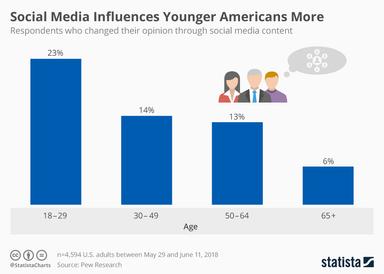
Personally, I agree with this statement. When I see the same product or brand being influenced by multiple influencers I will often wait until one that I trust is shared. On the other hand, some people believe that if the creator is being paid to promote something than they may not be as transparent.
To help me better conduct my research and understanding, I conducted a focus group My focus group consisted of 8-10 female ranging from 18-22 years of age
During my focus group I asked a series of questions that helped
The second theme that is important to consider, is the influence of social media influencers on consumer behavior. I asked 10 females from the age range of 19-22, “On a scale of 1 to 10 how much do you think social media influences viewers?” All 10 of them said an 8 for how much social media influences viewers I found this to be very crucial data when researching this topic I also believe that it is important for influencers to know how much of an affect they have on their viewers. This can be done in a multitude of ways, such as tracking engagement, views, and likes. In an article, “2024 Social Media Influencer Interview Questions & Answers, it says “I track a variety of metrics, including engagement rates, click-through rates and follower growth” (Teal 2024). I found this article to be interesting because
me to gather insights on this topic I asked questions about social media, influencing, their shopping patterns, and how they thought laws could improve. Overall, I was surprised to find that almost all of the participants
felt the exact same way on many topics All believed that social media influences them heavily, that social media is positive, and that there should be more laws regarding privacy.
it came from the influencer's perspective instead of the audience.
Overall, social media is so prominent during this day and age that we couldn’t help but become influenced by it. Personally, I find it so easy to go onto social media and become influenced by it. Whether it be news, latest trends, recipes or anything in between people of all ages are heavily influenced daily.
As social media continues to expand and grow so does the need for stricter laws Many people believe that in the influencer world that we don’t need any more laws However, I strongly believe that more laws need to be implemented. I believe that the laws involving privacy and brand deals could be strengthened more When asked, a group of 18–22-year-old females believed that the two laws that could be strengthened are privacy and copyright laws. One female said, “I think there should be
more privacy regulations or something.” I agree with this individual because I think that influencers should have more privacy over their everyday lives. I believe that it is expected of influencers to share their everyday lives because once they share on thing it is expected. I believe that this is wrong and often is what leads to cancel culture and safety concerns for influencers. In an article, “Disclosures 101 for Social Media Influencers”, it is said,” As an influencer, it’s your responsibility to make these disclosures, to be familiar with the Endorsement Guides, and to comply with laws against deceptive ads. Don’t rely on others to do it for you ” (Liu 2023) I found this quote to be good because it shows that there are laws in place, and it is ultimately up to the influencer to make sure that they are up to date and complying. I strongly believe that it is crucial for influencers to have rules and regulations so that they can operate smoothly and also make their viewers feel confident in them
Over
80% of people find social media to be
postive.
Conclusion
56% of people believe that the most harmful thing
about
social media is misinformatio n. 44% of people say the most important thing they look for when watching influencers is transparency.
Social media influencing has continued to rapidly grow over the past few years, and even more now. I believe that the ability to connect with an audience is something that is very hard to do. Influencers have an incredible job of being able to connect with their audience and perceive them well. As discussed in this article, social media influence on consumer behavior, the future of social media ethics, and influencer trustworthiness and transparency are all things that are crucial when researching this topic. I believe that if we as viewers continue to support influencers and fight for laws to be changed that we believe in strongly that the future of social media influencers will only grow from here. I challenge you the next time you are influenced to buy something think, is this credible, is it trustworthy, and is it authentic.
Cao, Z , & Belo, R (2023, August 7) Effects of explicit sponsorship disclosure on user engagement in social media influencer marketing SSRN https://papers ssrn com/sol3/papers cfm? abstract id=4533152
2025 Social Media Influencer Interview Questions & Answers (top ranked) 2025 Social Media Influencer Interview Questions & Answers (Top Ranked) (n d ) https://www tealhq com/interviewquestions/social-media-influencer
Nguyen, S T (2024, December 3) Disclosures 101 for Social Media influencers Federal Trade Commission https://www ftc gov/businessguidance/resources/disclosures-101-socialmedia-influencers
In a world where your selfworth is measured by the number of likes you get, is it any surprise that social media is linked to rising levels of anxiety and depression?

LINZI BURKS
By: Linzi Burks
AUTHOR Getty Images

Social media has become a powerful force in today’s world, shaping how we view ourselves and others. It offers a space for self-expression and connection, but it also brings with it a new set of challenges. As someone who actively engages with social media both as a consumer and a content creator I’ve personally felt the impact it has on my mood and self-image. Whether I’m scrolling through Instagram, watching TikTok videos, or posting content myself, I’ve noticed that even the smallest interactions can significantly influence how I feel about myself.
This topic matters to me because I’ve seen firsthand how social media can affect mental health, particularly in terms of self-esteem and anxiety
I wanted to explore this issue further because I believe many people, especially younger generations, struggle with the psychological toll social media can take Through this article, I’ll delve into the effects of social media on mental health, focusing on how platforms shape our perceptions of reality and influence our overall well-being My research will include background studies, insights from a focus group, and data from a survey I conducted The article will first examine existing background research to understand the scope of the issue, then highlight key findings from the focus group I led with my peers, and finally, provide insights from the survey results to explore how these trends affect a broader group of social media users
While social media offers a space for self-expression, connection, and entertainment, research shows that social media usage can also have significant negative effects on mental health, particularly in terms of selfesteem, anxiety, and depression.
According to a study by Chatterjee, A (2022), the impact of social media on mental health has been welldocumented The researchers noted that "the increase in social media usage is linked to heightened anxiety and depressive symptoms, particularly in adolescents and young adults" (Chatterjee, 2022) This connection can be attributed to the pressures of constant comparison to curated online personas and the quest for validation through likes and comments. Social comparison theory, which suggests that individuals often evaluate themselves based on others' standards, plays a critical role in these mental health challenges.

Moreover, the U S Surgeon General’s 2023 Advisory on Youth Mental Health highlights the harmful potential of social media, stating that “adolescents who spend more than three hours a day on social media are at a higher risk for depression, anxiety, and sleep disturbances” (U.S. Surgeon General, 2023) This statistic underscores the importance of considering the amount of time spent on these platforms, as excessive usage is directly correlated with poorer mental health outcomes. The advisory also points out that social media use is often tied to disrupted sleep patterns, which can exacerbate mental health struggles
Furthermore, Williams and Lewin (2024) conducted a meta-analysis on problematic social media use (PSMU) and its impact on well-being They found that “higher levels of problematic social media use were associated with increased feelings of loneliness, depression, and social isolation” (Williams & Lewin, 2024) This reinforces the idea that excessive engagement with social media, particularly when it becomes addictive, can lead to significant emotional distress, including loneliness, which compounds the overall impact on mental health
While there are clear benefits to staying connected online, these studies show that the risks such as increased anxiety, depression, and social comparison must be carefully managed to protect mental well-being.
The evidence suggests that reducing screen time, promoting social media literacy, and increasing awareness of the mental health risks associated with excessive use can help mitigate some of these negative effects.
I conducted a focus group with peers to gain personal insights into how social media affects mental health Here are three themes that emerged:
Seeing
influencers makes you think,
‘I want to do whatever diet they’re doing.’
Likes and shares are tied to self-worth, especially in younger users.
Seing edited photos makes you think that’s real when it’s nowhere near the truth.
This quote highlights how influencer culture, particularly in fitness and beauty, creates unrealistic standards that affect users’ body image and self-worth. Many participants felt inadequate after comparing themselves to influencers, which impacted their mental health
This comment reflects the pressure many social media users feel to gain validation through likes and shares Participants shared how these metrics often became a source of anxiety, with the number of likes on a post influencing their mood and selfesteem
This statement captures the harmful effects of edited images on self-esteem. Participants shared that filtered images on platforms like Instagram lead to unrealistic beauty standards and self-doubt, especially when users fail to recognize the digital alterations.
For additional insight, I designed a survey using Qualtrics to gather data on how social media usage affects self-esteem and anxiety I asked respondents questions related to their social media habits, and here’s what I found:
Describe your overall impact of social media on your self-esteem
The data shows a significant correlation between social media use and negative emotional outcomes. A large portion of respondents (approximately 70%) reported feeling "very likely" to experience anxiety after using social media, with a similar number (60%) admitting to comparing themselves negatively to others. This overlap highlights how social media platforms can trigger both anxiety and self-comparison, leading to emotional distress and negative self-perception The frequency of "very likely" responses in both categories reinforces the growing concern about the mental health impacts of these platforms.
Do you ever compare your life to others based on what you see on social media?
All respondents (100%) admitted to comparing themselves to others on social media. This aligns with what I discovered in my focus group, where comparison led to negative feelings about personal success and body image.
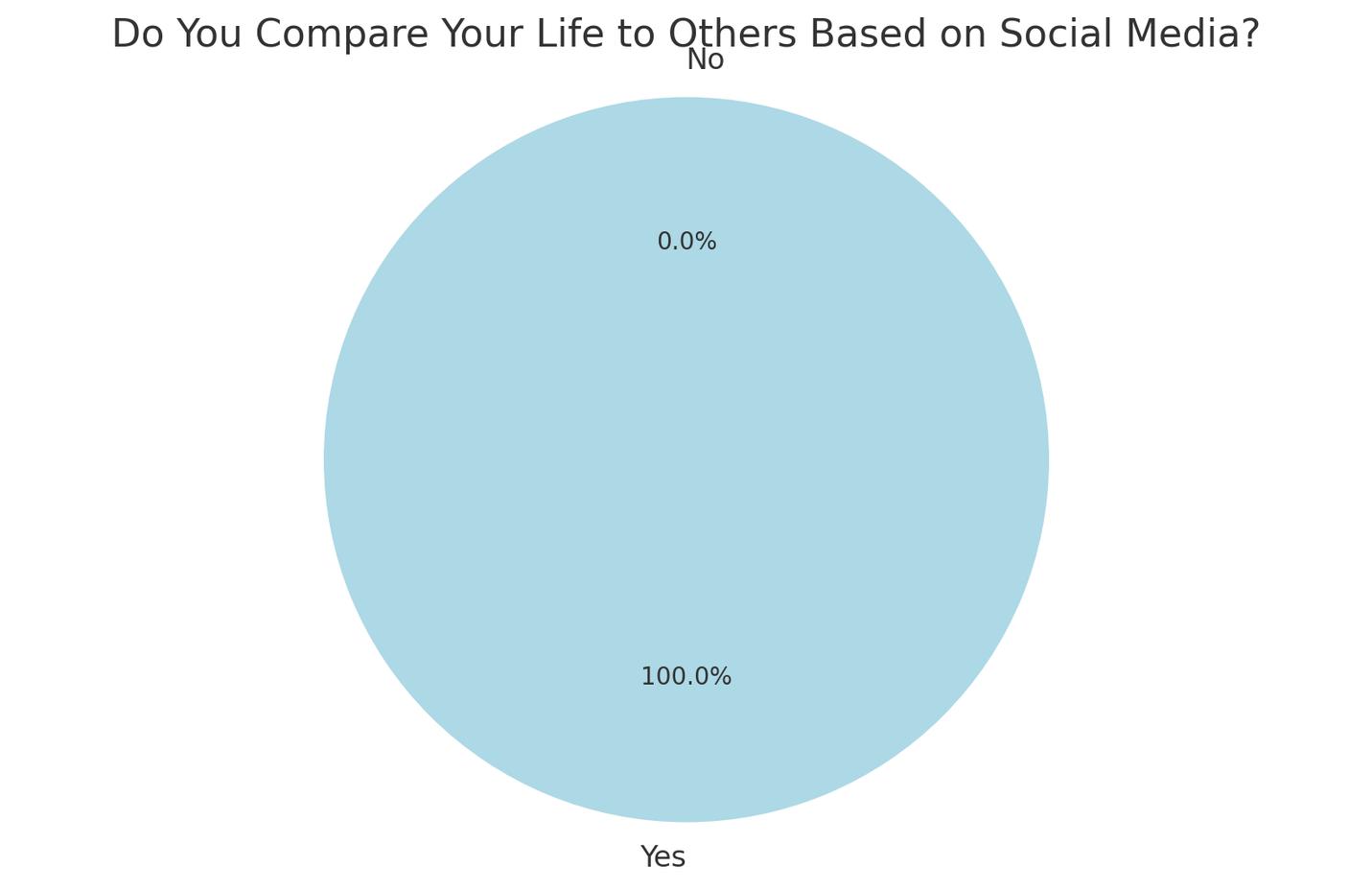

This chart represents the percentages of people who responded to the question of whether they compare their lives to others based on social media All participants indicated that they do compare their lives, highlighting the widespread impact of social media on self-perception and comparison
I feel pressure to present a curated or 'perfect' version of my life on social media
This statement received high agreement among the survey participants A majority of respondents (70%) mentioned editing their posts to present only the most idealized aspects of their lives, reinforcing the idea that social media encourages inauthentic portrayals of reality
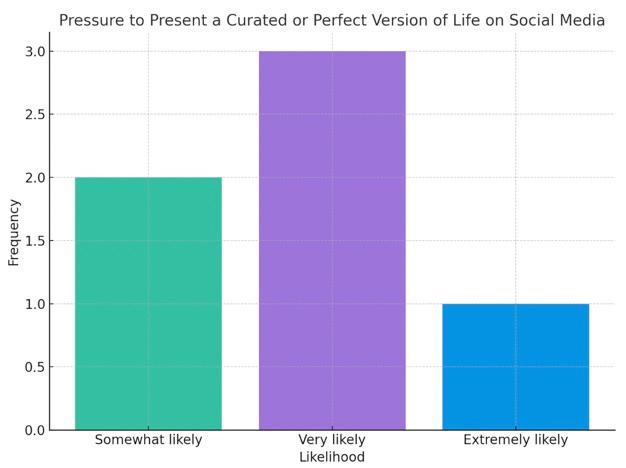
This chart visualizes the responses to the statement about feeling pressure to present a curated or perfect version of life on social media The majority of respondents reported feeling "very likely" to experience this pressure, indicating a significant concern about the authenticity of social media portrayals
In conclusion, the research, focus group insights, and survey results all point to the significant impact that social media has on mental health. While these platforms offer opportunities for connection and self-expression, they also create pressures that can negatively affect self-esteem and contribute to anxiety. It’s crucial for users to be mindful of the time spent on these platforms and recognize the psychological effects of comparison and validation-seeking behavior
As individuals, we need to take control of our social media use by setting boundaries and limiting our exposure to content that negatively affects our mental well-being. Social media companies also have a responsibility to create safer and more supportive environments for users Finally, mental health professionals and educators must continue to raise awareness about the potential psychological risks and benefits of social media.
As we've seen throughout this article, social media usage is linked to rising mental health concerns, particularly for younger generations To address this growing crisis, I urge you to take action by signing the petition to protect youth mental health by lowering and monitoring social media usage. This petition calls for stronger regulations and safeguards to ensure that children and teenagers are not exposed to harmful content and the negative psychological impacts of excessive social media use. Sign the petition here and be a part of the movement to protect our youth from the mental health risks associated with unchecked social media usage.
Chatterjee, A. (2022). Social media and its impact on mental health: A systematic review. Journal of Mental Health Studies, 12(4), 45-67.
Williams, M., & Lewin, K. M. (2024). Problematic social media use and its effect on mental health in young adults Current Psychology, 43(1), 20891–20898
U.S. Surgeon General. (2023). Social Media and Youth Mental Health: The U.S. Surgeon General’s Advisory U S Department of Health and Human Services
Rachel Esposito
IMC 404
Rachel Esposito
Profesor Smith
IMC 404
Profesor
November 18, 2024
Smith
Word Count: 1410
November 18, 2024
Word Count: 1410
By: Rachel Esposito
From Closet to Brain: The Fascinating Science of Dopamine Dressing
In the world of fashion, trends come and go, but one concept has remained a constant: the profound impact of clothing on our mood and self-esteem. This phenomenon, often referred to as "dopamine dressing," highlights how our sartorial choices can significantly influence our emotional state. From the confidence boost of wearing a well-fitting outfit to the temporary high of purchasing something new, fashion possesses a unique ability to tap into our brain's reward system, releasing feel-good chemicals like dopamine. However, as with any form of instant gratification, there are potential risks involved, particularly when shopping becomes a form of emotional therapy.
In the world of fashion, trends come and go, but one concept has remained a constant: the profound impact of clothing on our mood and self-esteem. This phenomenon, often referred to as "dopamine dressing," highlights how our sartorial choices can significantly influence our emotional state. From the confidence boost of wearing a well-fitting outfit to the temporary high of purchasing something new, fashion possesses a unique ability to tap into our brain's reward system, releasing feel-good chemicals like dopamine. However, as with any form of instant gratification, there are potential risks involved, particularly when shopping becomes a form of emotional therapy
Mood and Self-Esteem: The Confidence Boost of Dopamine Dressing
Mood and Self-Esteem: The Confidence Boost of Dopamine Dressing
The relationship between clothing and self-esteem is deeply intertwined. When we wear outfits that make us feel comfortable and confident, it can elevate our overall mood. Conversely, feeling uncomfortable in our clothes can have the opposite effect. As one individual noted, "If I feel, especially going out, if I put on an outfit I'm uncomfortable in, let's say it's too tight or I just don't feel like myself, I'm already letting my outfit dictate my feelings." On the other hand, when we take the time to plan an outfit and it looks good on us, according to one individual: "I'm talking to everyone tonight, I look so good, it's a better night for me for sure!"
The relationship between clothing and self-esteem is deeply intertwined. When we wear outfits that make us feel comfortable and confident, it can elevate our overall mood. Conversely, feeling uncomfortable in our clothes can have the opposite effect. As one individual noted, "If I feel, especially going out, if I put on an outfit I'm uncomfortable in, let's say it's too tight or I just don't feel like myself, I'm already letting my outfit dictate my feelings." On the other hand, when we take the time to plan an outfit and it looks good on us, according to one individual: "I'm talking to everyone tonight, I look so good, it's a better night for me for sure!"

The Emotional High of Shopping (Dopamine Dressing)
The Emotional High of Shopping (Dopamine Dressing)
Beyond the confidence boost of wearing certain clothes, the act of shopping itself can create a temporary emotional high. This excitement, often referred to as "dopamine dressing," is especially pronounced when the purchase is anticipated or when an item makes the person feel good when worn. As one person described, "It's the best [feeling] when I'm happy for that week." Even the anticipation of wearing a new item can provide an additional dopamine hit, they continue: "When I buy it, I'll put it in my closet, and I know I'm [not] saving it for a certain event, but when I go into [my closet] and it’s the time I wear this dress, I get another kind of hit from that."
Beyond the confidence boost of wearing certain clothes, the act of shopping itself can create a temporary emotional high. This excitement, often referred to as "dopamine dressing," is especially pronounced when the purchase is anticipated or when an item makes the person feel good when worn. As one person described, "It's the best [feeling] when I'm happy for that week."
Even the anticipation of wearing a new item can provide an additional dopamine hit, they continue: "When I buy it, I'll put it in my closet, and I know I'm [not] saving it for a certain event, but when I go into [my closet] and it’s the time I wear this dress, I get another kind of hit from that."
Retail Therapy and Its Risks
Retail Therapy and Its Risks
Retail Therapy and Its Risks
For some, shopping becomes a form of emotional therapy, especially during low points or stressful situations. As one individual admitted, "Sometimes, if I'm happy that day, I think, 'Oh my gosh, I want to go shopping and buy something.'" However, there's an awareness that this reliance on material purchases for emotional well-being can lead to overspending and financial difficulties: "But there’s a down side too.” Another individual cautioned, "I don't necessarily feel the downsides, you're going to lose so much money if every time you're sad, so you go and just throw your arms up."
For some, shopping becomes a form of emotional therapy, especially during low points or stressful situations. As one individual admitted, "Sometimes, if I'm happy that day, I think, 'Oh my gosh, I want to go shopping and buy something.'" However, there's an awareness that this reliance on material purchases for emotional well-being can lead to overspending and financial difficulties: "But there’s a down side too.” Another individual cautioned, "I don't necessarily feel the downsides, you're going to lose so much money if every time you're sad, so you go and just throw your arms up."
Several studies have explored the complex relationship between shopping, mood, and self-esteem. A systematic review on the treatment of buying/shopping disorder highlighted the effectiveness of cognitive-behavioral therapy (CBT) in managing this condition, which can have severe consequences, including a heightened risk of suicide (Vasiliu, 2022). Another article made the case for compulsive shopping as an addiction, drawing parallels with substance use disorders and suggesting that the brain's reward system may be overactivated in compulsive shoppers (Hartston, 2012). Research on compulsive buying disorder has found high rates of psychiatric comorbidity, particularly with mood and anxiety disorders, and some evidence suggests that CBT may be a promising treatment approach (Mueller & Mitchell, 2009).
Several studies have explored the complex relationship between shopping, mood, and self-esteem. A systematic review on the treatment of buying/shopping disorder highlighted the effectiveness of cognitive-behavioral therapy (CBT) in managing this condition, which can have severe consequences, including a heightened risk of suicide (Vasiliu, 2022). Another article made the case for compulsive shopping as an addiction, drawing parallels with substance use disorders and suggesting that the brain's reward system may be overactivated in compulsive shoppers (Hartston, 2012). Research on compulsive buying disorder has found high rates of psychiatric comorbidity, particularly with mood and anxiety disorders, and some evidence suggests that CBT may be a promising treatment approach (Mueller & Mitchell, 2009).
Several studies have explored the complex relationship between shopping, mood, and self-esteem. A systematic review on the treatment of buying/shopping disorder highlighted the effectiveness of cognitive-behavioral therapy (CBT) in managing this condition, which can have severe consequences, including a heightened risk of suicide (Vasiliu, 2022). Another article made the case for compulsive shopping as an addiction, drawing parallels with substance use disorders and suggesting that the brain's reward system may be overactivated in compulsive shoppers (Hartston, 2012). Research on compulsive buying disorder has found high rates of psychiatric comorbidity, particularly with mood and anxiety disorders, and some evidence suggests that CBT may be a promising treatment approach (Mueller & Mitchell, 2009).
Several studies have explored the complex relationship between shopping, mood, and self-esteem. A systematic review on the treatment of buying/shopping disorder highlighted the effectiveness of cognitive-behavioral therapy (CBT) in managing this condition, which can have severe consequences, including a heightened risk of suicide (Vasiliu, 2022). Another article made the case for compulsive shopping as an addiction, drawing parallels with substance use disorders and suggesting that the brain's reward system may be overactivated in compulsive shoppers (Hartston, 2012). Research on compulsive buying disorder has found high rates of psychiatric comorbidity, particularly with mood and anxiety disorders, and some evidence suggests that CBT may be a promising treatment approach (Mueller & Mitchell, 2009).
In addition to the general principles of dopamine dressing, the role of color cannot be overstated. As stylist Darcy Camden explained in an interview, "It's about bright colors and fun patterns... color really has the power to influence your mood" (Camden, 2023). Whether it's a leader in a company wearing something "really strong and playful and joyful" or an individual incorporating more colorful clothing into their daily life, the impact of color on our mood and energy levels is significant.
In addition to the general principles of dopamine dressing, the role of color cannot be overstated. As stylist Darcy Camden explained in an interview, "It's about bright colors and fun patterns... color really has the power to influence your mood" (Camden, 2023). Whether it's a leader in a company wearing something "really strong and playful and joyful" or an individual incorporating more colorful clothing into their daily life, the impact of color on our mood and energy levels is significant.
In addition to the general principles of dopamine dressing, the role of color cannot be overstated. As stylist Darcy Camden explained in an interview, "It's about bright colors and fun patterns... color really has the power to influence your mood" (Camden, 2023). Whether it's a leader in a company wearing something "really strong and playful and joyful" or an individual incorporating more colorful clothing into their daily life, the impact of color on our mood and energy levels is significant.
In addition to the general principles of dopamine dressing, the role of color cannot be overstated. As stylist Darcy Camden explained in an interview, "It's about bright colors and fun patterns... color really has the power to influence your mood" (Camden, 2023). Whether it's a leader in a company wearing something "really strong and playful and joyful" or an individual incorporating more colorful clothing into their daily life, the impact of color on our mood and energy levels is significant.
Retail therapy, or shopping as a means of improving one's mood, has been studied by researchers. One article noted that unplanned shopping can help relieve negative moods, and interestingly, resisting the urge to buy something can have similar mood-boosting effects (Clarity, 2022). The article cited a study finding that 62% of shoppers bought something to cheer themselves up, highlighting the prevalence of retail therapy
Retail therapy, or shopping as a means of improving one's mood, has been studied by researchers. One article noted that unplanned shopping can help relieve negative moods, and interestingly, resisting the urge to buy something can have similar mood-boosting effects (Clarity, 2022). The article cited a study finding that 62% of shoppers bought something to cheer themselves up, highlighting the prevalence of retail therapy.
Retail therapy, or shopping as a means of improving one's mood, has been studied by researchers. One article noted that unplanned shopping can help relieve negative moods, and interestingly, resisting the urge to buy something can have similar mood-boosting effects (Clarity, 2022). The article cited a study finding that 62% of shoppers bought something to cheer themselves up, highlighting the prevalence of retail therapy
Retail therapy, or shopping as a means of improving one's mood, has been studied by researchers. One article noted that unplanned shopping can help relieve negative moods, and interestingly, resisting the urge to buy something can have similar mood-boosting effects (Clarity, 2022). The article cited a study finding that 62% of shoppers bought something to cheer themselves up, highlighting the prevalence of retail therapy
An independent survey was taken of students, aged 18-25, that addressed Mindful Dressing to discover some of the underlying causes of the phenomenon. The results overwhelmingly suggest that practicing 'Mindful Dressing' has a positive effect on confidence in daily life. A significant majority (75%) of respondents agreed or strongly agreed with this statement, indicating that
An independent survey was taken of students, aged 18-25, that addressed Mindful Dressing to discover some of the underlying causes of the phenomenon. The results overwhelmingly suggest that practicing 'Mindful Dressing' has a positive effect on confidence in daily life. A significant majority (75%) of respondents agreed or strongly agreed with this statement, indicating that
An independent survey was taken of students, aged 18-25, that addressed Mindful Dressing to discover some of the underlying causes of the phenomenon. The results overwhelmingly suggest that practicing 'Mindful Dressing' has a positive effect on confidence in daily life. A significant majority (75%) of respondents agreed or strongly agreed with this statement, indicating that
An independent survey was taken of students, aged 18-25, that addressed Mindful Dressing to discover some of the underlying causes of the phenomenon. The results overwhelmingly suggest that practicing 'Mindful Dressing' has a positive effect on confidence in daily life. A significant majority (75%) of respondents agreed or strongly agreed with this statement, indicating that
intentionally considering their clothing choices enhances their self-assuredness. This aligns with the psychological principles discussed earlier, such as the impact of comfortable and flattering clothing on self-esteem and the dopamine release associated with wearing preferred outfits. Importantly, the complete lack of negative responses implies that mindful dressing is unlikely to decrease confidence. This is a crucial finding, as it indicates that implementing mindful dressing practices poses little risk of adversely affecting how one feels in their daily life. Here are the results:

Based on these results, promoting mindful dressing as a strategy for confidence-building appears well-supported. Encouraging individuals to thoughtfully select outfits that make them feel good about themselves, experiment with styles that enhance their mood, and become more aware of the link between their clothing and self-esteem could have broad benefits. Looking at another chart of data from the survey, we can begin to analyze the benefits of mindful dressing. Here are the results:
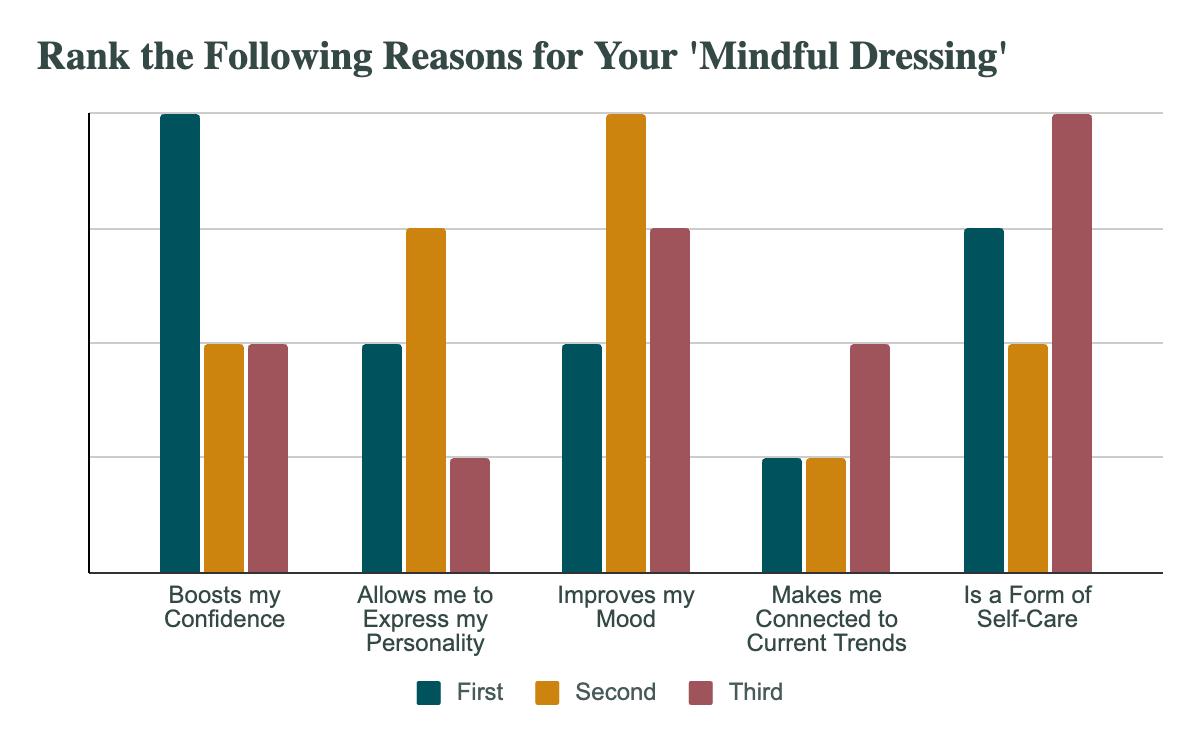
When examining the reasons individuals practice mindful dressing, several key themes emerge. First and foremost, mindful dressing is valued for its ability to boost confidence. With 4 respondents citing this as the primary benefit, it's clear that intentionally selecting outfits plays a crucial role in enhancing self-assuredness. This aligns with the psychological principles of dopamine dressing, where wearing preferred clothing can release feel-good chemicals in the brain. Beyond confidence, mindful dressing is widely recognized for its mood-boosting effects. Across all responses, "Improves my Mood" was the most frequently selected reason, with 2 primary, 4 secondary, and 3 third-place responses. This suggests that the positive impact of mindful dressing on emotional state is a deeply understood advantage. By choosing outfits that evoke positive emotions, individuals can harness the power of clothing to elevate their mood and overall sense of well-being.
The fascinating science of dopamine dressing offers profound insights into the complex relationship between our clothing choices, mood, and self-esteem. By understanding how intentional fashion decisions can tap into our brain's reward system, releasing dopamine and enhancing confidence, we can harness the power of mindful dressing to improve our daily lives. Whether it's the confidence boost of a well-fitting outfit, the temporary high of a new purchase, or the long-term mood-boosting effects of a thoughtfully curated wardrobe, the potential benefits of dopamine dressing are vast.
However, as with any form of instant gratification, it's essential to approach mindful dressing with awareness. While shopping can provide a temporary escape or mood lift, relying too heavily on retail therapy can lead to overspending, financial stress, and potentially even compulsive shopping behaviors. By recognizing the fine line between the positive aspects of dopamine dressing and the risks of over-reliance on shopping as emotional therapy, we can cultivate a healthier, more mindful relationship with fashion.
The survey results underscore the confidence-boosting, mood-enhancing, self-expressive, and self-care aspects of mindful dressing. By emphasizing these benefits and providing guidance on intentional clothing choices, we can empower individuals to harness the full potential of mindful dressing. Whether it's experimenting with styles that evoke positive emotions, incorporating preferred colors and patterns, or simply taking the time to select outfits that align with personal taste, the act of mindful dressing offers a powerful tool for enhancing self-esteem and overall well-being.
As we move forward in an increasingly fast-paced, often stressful world, the importance of such tools cannot be overstated. By recognizing the profound impact of our sartorial choices on our mood and self-esteem, and by cultivating a more mindful, intentional approach to fashion, we can tap into the transformative power of dopamine dressing. In doing so, we can create a more confident, self-assured, and ultimately happier version of ourselves, one outfit at a time.
References
References
Camden, D. (2022). Dopamine Dressing Trend: The science behind how color makes you feel. New Day Northwest. Retrieved from https://www.youtube.com/watch?v=w629nfAyH7Q
Clarity. (2022). The science behind retail therapy.
https://www.claritychi.com/blog/the-science-behind-retail-therapy
Hartston, H. (2012). The case for compulsive shopping as an addiction. Journal of Psychoactive Drugs, 44(1), 64–67. https://doi.org/10.1080/02791072.2012.660110
Mueller, A., & Mitchell, J. E. (2009). Compulsive buying disorder In: Münch H, Editor
Kognitive Verhaltenstherapie in der Praxis. Weinheim: Beltz PVU (pp. 251–63).
https://doi.org/10.1055/s-2008-1038227
Vasiliu, O. (2022). Systematic review on the treatment of buying/shopping disorder: efficacy of psychotherapeutic and pharmacological interventions. Frontiers in Psychiatry, 13, 1047280. https://doi.org/10.3389/fpsyt.2022.1047280

“Do you ever look at someone and wonder, ‘What is going on inside their head?’ (PIXAR)
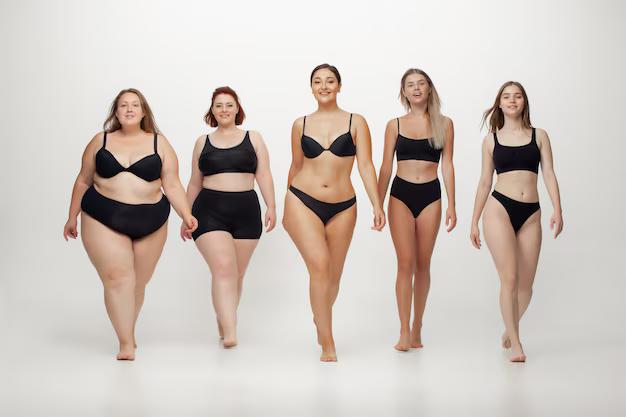
“Beauty Standards and Body Image Affecting Mental Heath” is the topic I chose to pursue for many reasons. In Integrated Marketing Communications there are media-heavy tasks, projects, and more, however, I want to dive deeper into how beauty standards and body image affect the mental health of women without focusing so much on a social media aspect In the future, I want to help people with their body image and health so they can look and feel their absolute best. I want to focus on how people view their body image and well-being because we live in a world where everyone thinks they need to look perfect, but that may not coincide with how they feel My main focus is to talk through the process of looking good while feeling good The balance between valuing others’ opinions plays a significant role in shaping mental health, affecting emotional wellbeing, social connection, and overall mental state.
Fitness, nutrition, and beauty are my top passions I love going to the gym in my free time, whether it's lifting weights, doing bodyweight workouts, or running, as it boosts my energy and focus Nutrition has become a recent interest as I navigate healthy eating in college. Beauty has always been a hobby of mine, from dressing up and doing makeup to styling hair, whether on myself or friends To me, beauty is about both the effort of dressing up for an event and the simplicity of feeling confident in a natural, no-makeup look That’s the beauty of beauty.
I conducted secondary research using Google Scholar and was fortunate to find some credible information In McComb’s article, “Eating and body image characteristics of those who aspire to the slim-thick, thin, or fit ideal and their impact on state body image” she discusses how women who want to achieve the perfect body, small waist, flat stomach,
and large butt, often fall into an eating disorder. She calls this type of body the “slimthick” look When women get caught falling down an eating disorder path, it takes a toll on their mental health because of their constant self-doubt. It’s a continuous battle of comparing and not feeling like perfection (McComb, 2022)
The article “‘I’ll never sacrifice my well-being again:’ The journey from negative to positive body image among women who perceive their body to deviate from societal norms ” explores how older women shift from negative to positive body image. These women, both mothers and non-mothers, reflect on how conditions led them through denial and acceptance, ultimately realizing that their worth isn’t defined by their appearance and embracing self-acceptance They are now worthy of everything they can imagine (Alleva, 2023). The government report “The Contrasting Effects of Body Image and Selfesteem in Makeup Usage” explores how makeup and dressing up affect women ’ s selfesteem. Makeup helps women feel more puttogether and boosts their confidence The study shows that a woman's appearance can significantly impact her mental and physical well-being. If she feels disarrayed, she may feel uncomfortable, but when she feels puttogether, her confidence improves In today’s world, makeup plays a key role in enhancing self-esteem (Mafra, 2022).
After conducting a focus group regarding beauty standards and body image affecting mental health, I received thoughtful and insightful results. I found that many individuals have a passion for self-confidence in their own bodies
Individuals may feel confused when it comes to societal beauty standards. A female aged 20-22 said, “I see some girls and I think, that's body goals and that's what I want to end up looking like, but there's so many allegations of ‘that's fake’ in the first place.” She highlights the desire for an ideal body image but is also
skeptical because some girls portray “fakeness” in beauty standards. Another female aged 20-22 said, “It leaves room for comparison and it's hard for other girls to feel beautiful when they see something so curated.” This particular woman points out that edited images create harmful comparisons making it hard for individuals to feel beautiful. Lastly, this female aged 20-22 said, “Botox is a good point Everyone around you is getting Botox or doing preventative things and it's all normalized which is not the healthiest like it’s said to be.” She points out the norm of Botox and mentions that, while it is common, it may not be as healthy as it’s portrayed In this area, the negative impacts are deeply touched on the unrealistic beauty ideals on self-image and well-being
Social interactions and the absence of positive reinforcement can influence self-esteem. A female aged 20-22 said, “I never really felt bad about myself until my friends started talking about how they looked. They would say, ‘Oh my gosh, these jeans make me look so bad’ and that made me think, ‘Well then what do I look like?’” She highlights comparison in explaining how friends' comments influence her own appearance because she began questioning her own looks
Another female aged 20-22 said, “In high school, my sister and my mom would always compliment me by saying, ‘Oh my gosh, you always look so good in clothes ’ yada, yada, yada, and then I came here and didn't have that positive reinforcement.” At home, she received positive comments on her body, but after coming to college she realized the positive reinforcement wasn’t there like it was with her family.
This female aged 20-22 said, “I feel like with my friends, it's like a joking manner. It's never serious, just a funny banter back and forth. I don't know if that's, you know, maybe making light of a kind of sad or hard topic ” She pinpoints that joking with friends about body image is a way of masking deeper insecurities, but she is unsure about the seriousness of the issue. This theme demonstrates how both positive and negative social interactions shape how individuals distinguish themselves
Self-acceptance, supportive relationships, and personal empowerment in building a positive self-image are highly valued in women ’ s lives. One female aged 20-22 said, “I feel like as I've gotten older, I've accepted more things about myself and I've prioritized myself as a person and what I like to do that makes me feel good, such as working out ” She highlights how aging and personal growth have helped with self-acceptance by prioritizing activities in her likeness
This female aged 20-22 said, “One thing that helped me is having someone there that I wouldn't have to bring up when I say, ‘Oh, I look bad in this ’ for them to say, ‘Oh no, it looks so good ’ I found friends that for instance when I walk down the stairs for a date party they say, ‘Ooh, you look so good.’ It's about finding people who hype you up without you having to ask ” She points out that supportive friends boost self-esteem because they are genuinely supportive without being asked Lastly, this female aged 20-22 said, “It's hard because it's such a personal thing The advice I would give is it has to come from yourself.” She emphasizes that true confidence must come from within All in all, selfacceptance, supportive friends, and self-driven growth contribute to a healthy body image.
I conducted primary research on beauty standards, body image, and their impact on mental health through a self-designed Qualtrics survey The survey consisted of fifteen questions, mostly closed-ended with a few open-ended questions for unique insights. Qualtrics was tricky at first, but after experimenting with the survey, I was able to figure it out. One open-ended question, "How do you define beauty?", was designed to gather diverse responses Another, "Can individuals develop a positive self-image despite unrealistic beauty standards?", stemmed from my interest in understanding how women view the influence of beauty standards
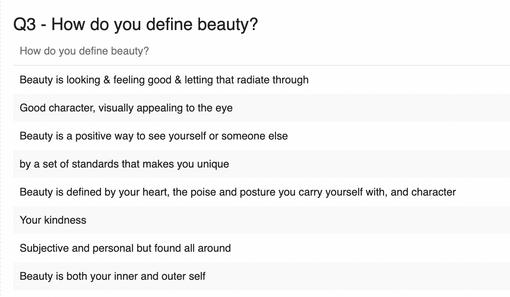
2 shows women ’ s opinions regarding whether individuals can develop a positive self-image despite unrealistic beauty standards
Additionally, the question "Do you feel comfortable talking with friends and/or family about body image concerns?" measures how women feel discussing body image with loved ones, splitting the responses almost in half
Figure 3 shows how many women are and are not comfortable sharing body image concerns with friends or family
These questions were shaped by my curiosity about the experiences and perspectives of other women.
The balance between valuing others’ opinions plays a significant role in shaping mental health, affecting emotional well-being, social connection, and overall mental state My research on beauty standards and body image affecting mental health reveals the significant role that societal pressures and social interactions play in shaping self-esteem Unrealistic beauty standards, comparison with others, and lack of positive reinforcement can negatively affect well-being However, selfacceptance, supportive friendships, and personal growth play crucial roles in creating a positive body image. This study emphasizes the importance of balancing external influences with internal validation and surrounding oneself with people who uplift and encourage Ultimately, personal empowerment is key to maintaining a healthy and confident self-image.
Next time you find yourself comparing your body to others stop and say one positive thing about yourself One of my favorite things I tell myself is “You are unique, and the opinions of others do not define your worth. You are beautiful just the way you are ”
Alleva, J., Tylka, T., Martijn, C., Waldén, M., Webb, J., & Piran, N. (2023). “I’ll never sacrifice my well-being again:” The journey from negative to positive body image among women who perceive their body to deviate from societal norms
ScienceDirect
https://doi org/10 1016/j bodyim 2023 03 001
FREEPiK https://www freepik com/premiumphoto/inclusion-portrait-beautiful-young-womenwith-different-shapes-posing-white-backgroundhappy-female-models-concept-body-positivebeauty-fashion-style-feminismdiversity 17334995 htm
Mafra, A L , Silva, C S A , Varella, M A C , & Valentova, J V (2022) The contrasting effects of body image and self-esteem in the makeup usage
PLOS ONE
https://doi org/10 1371/journal pone 0265197
Master1305plus (2010-2024) Inclusion Portrait of beautiful young women with different shapes posing on white background Happy female models
Concept of body positive, beauty, fashion, style, feminism Diversity
McComb, S , & Mills, J (2022) Eating and body image characteristics of those who aspire to the slimthick, thin, or fit ideal and their impact on state body image ScienceDirect
https://doi org/10 1016/j bodyim 2022 07 017
Mull, A (2018) Body positivity is a Scam Vox https://www vox com/2018/6/5/17236212/bodypositivity-scam-dove-campaign-ads
PIXAR Animation Studios, Disney (2015) Inside Out 0:50
